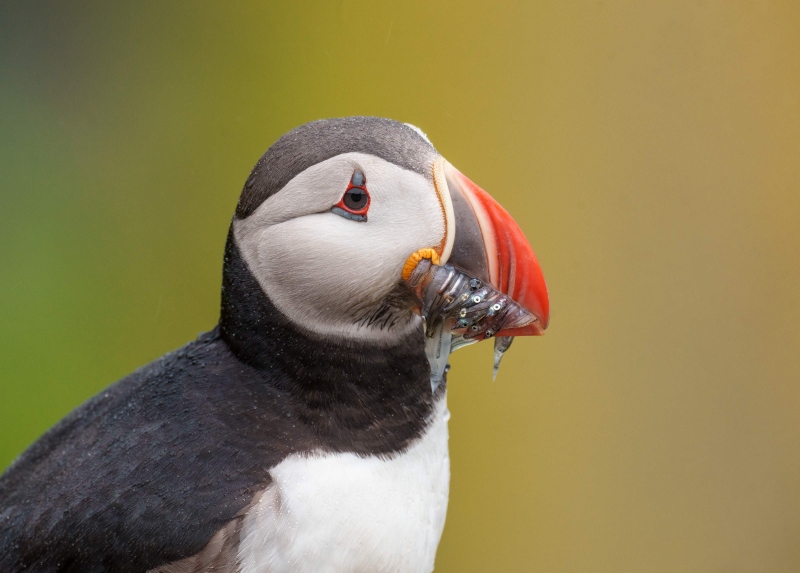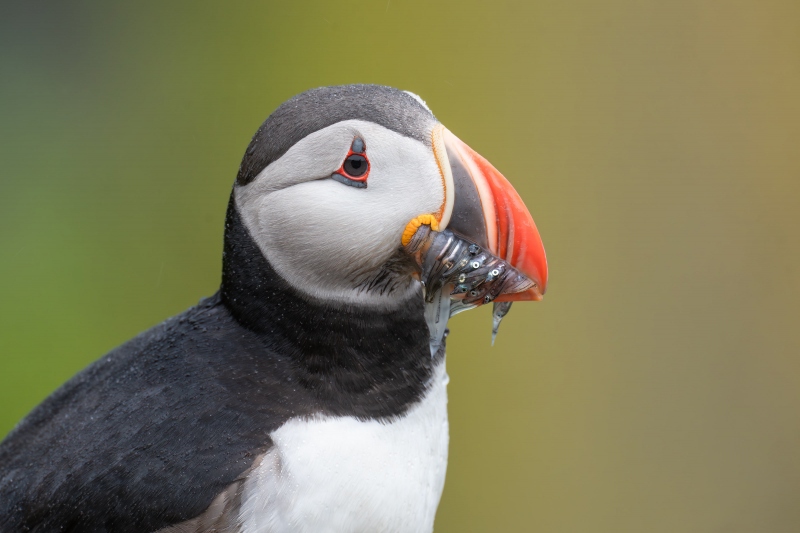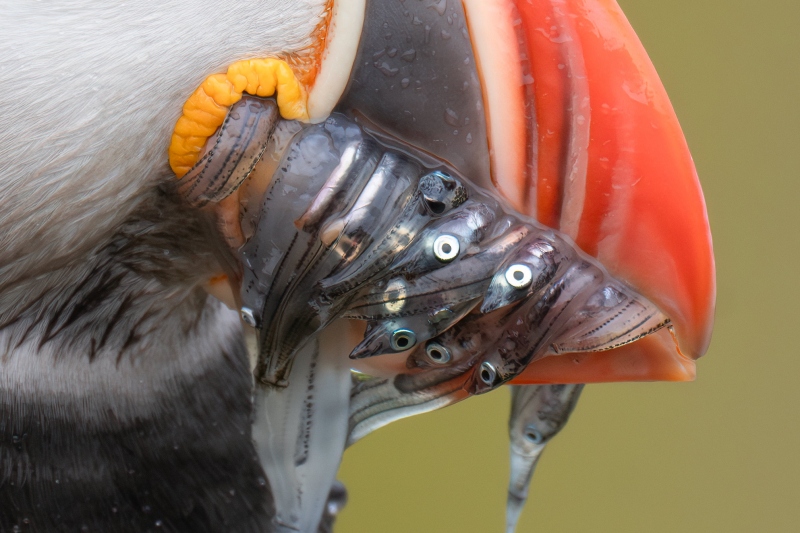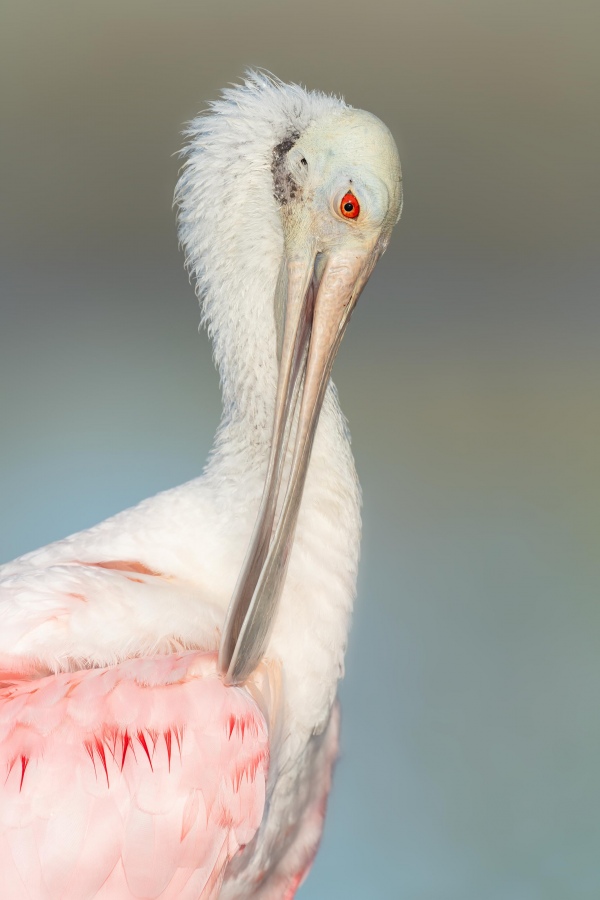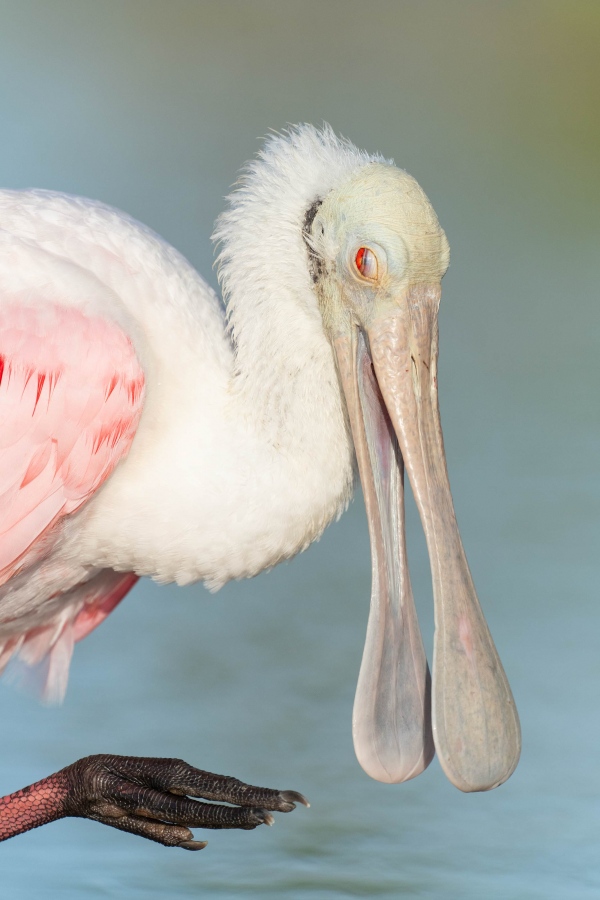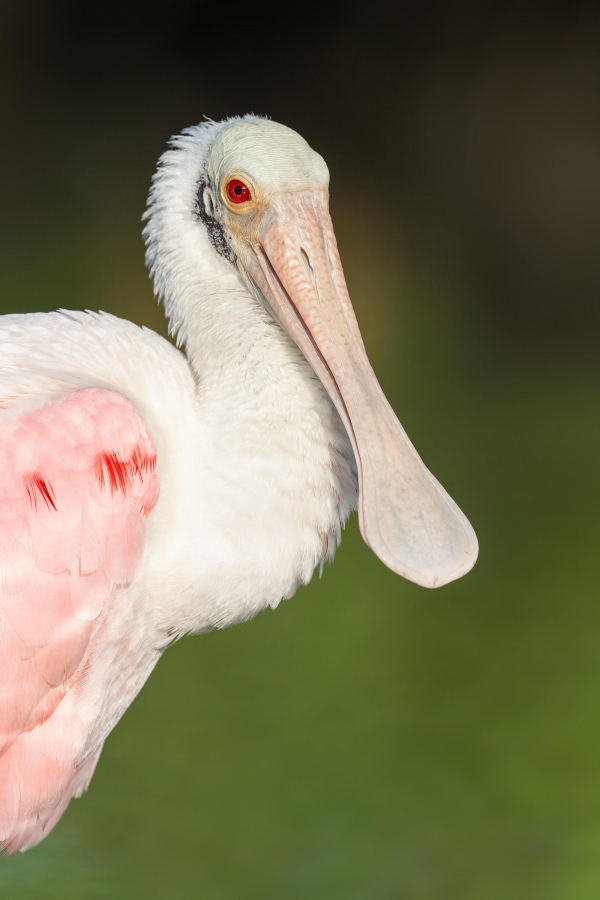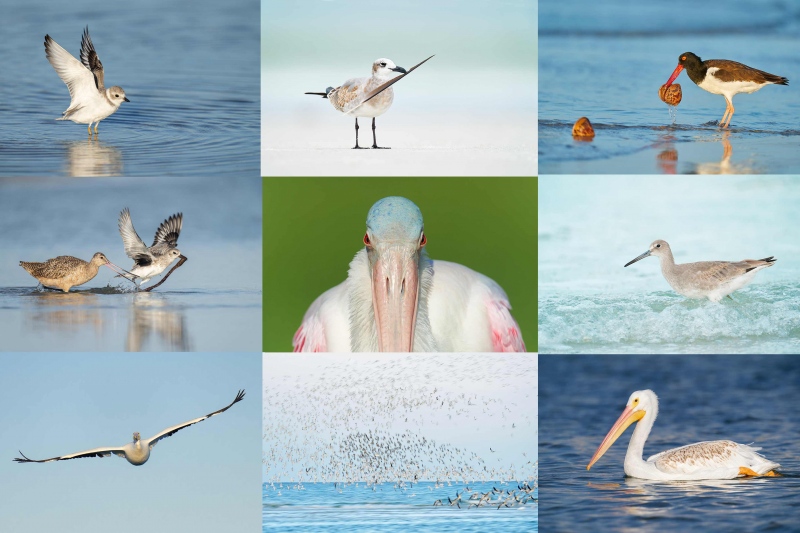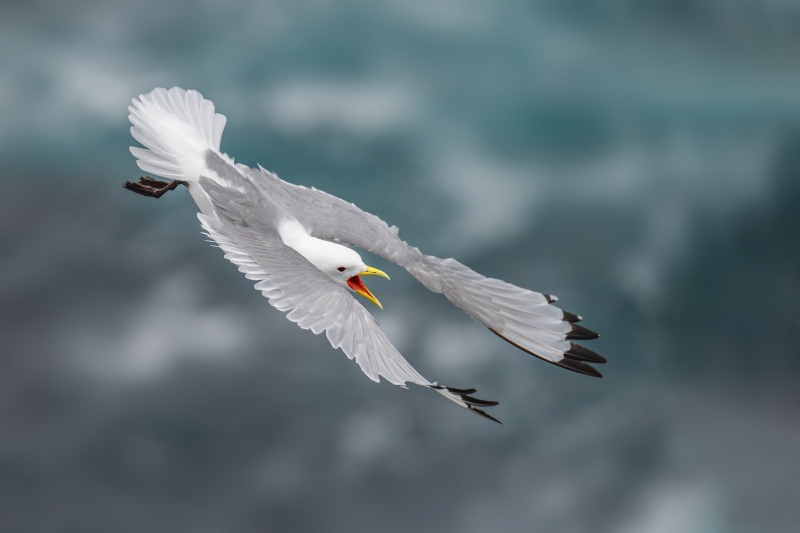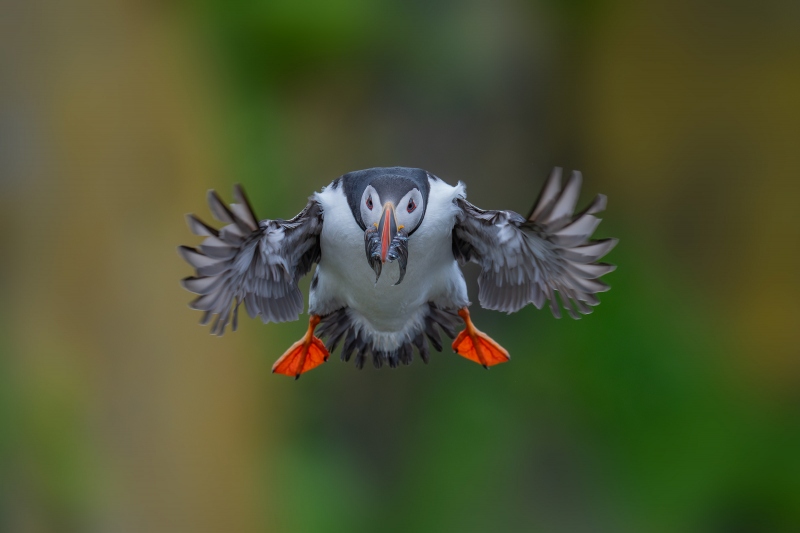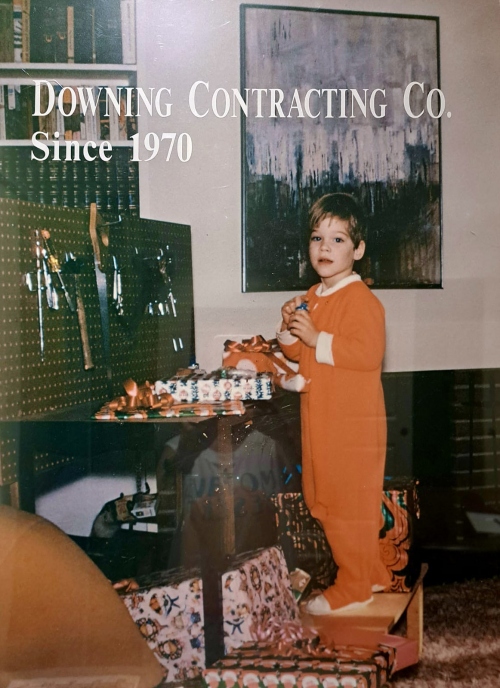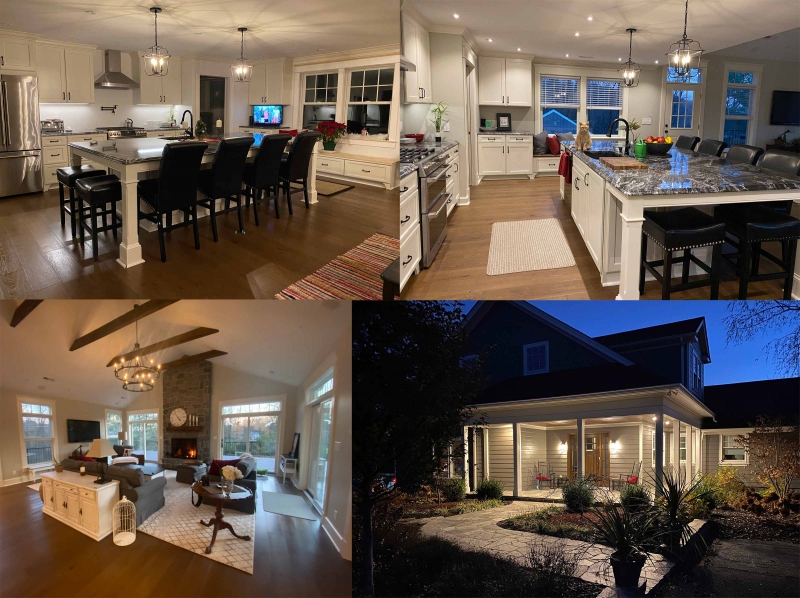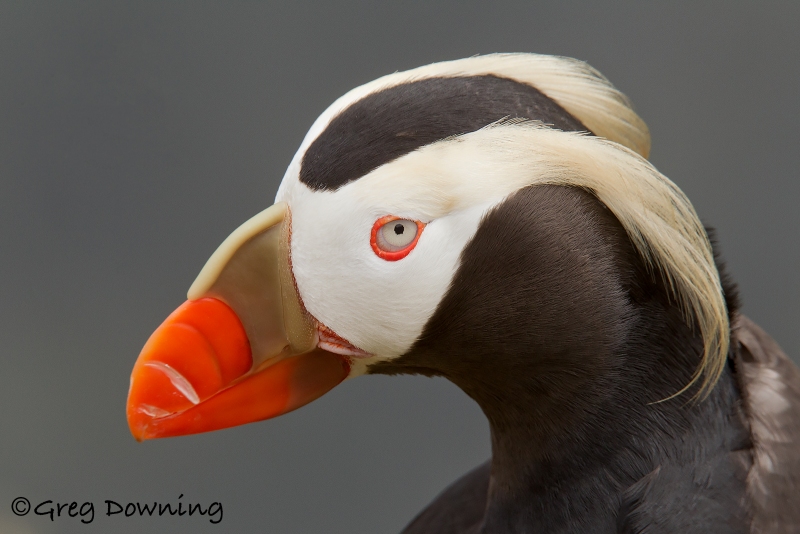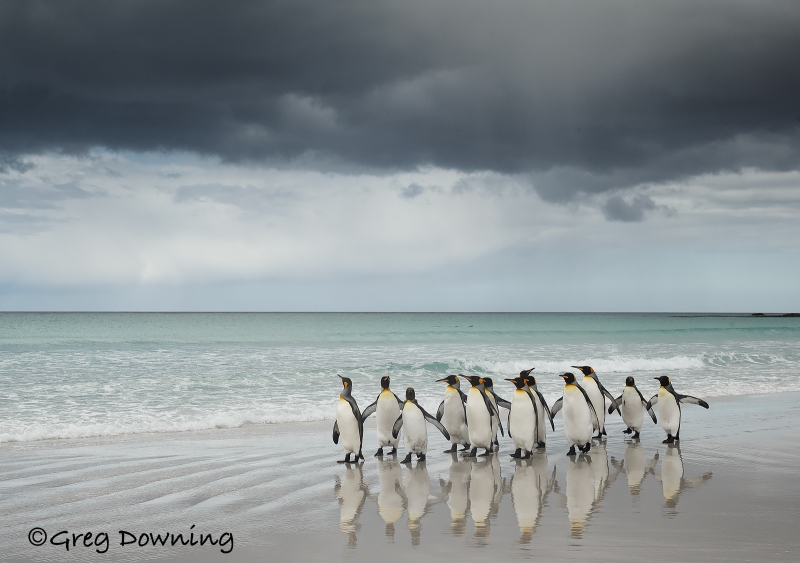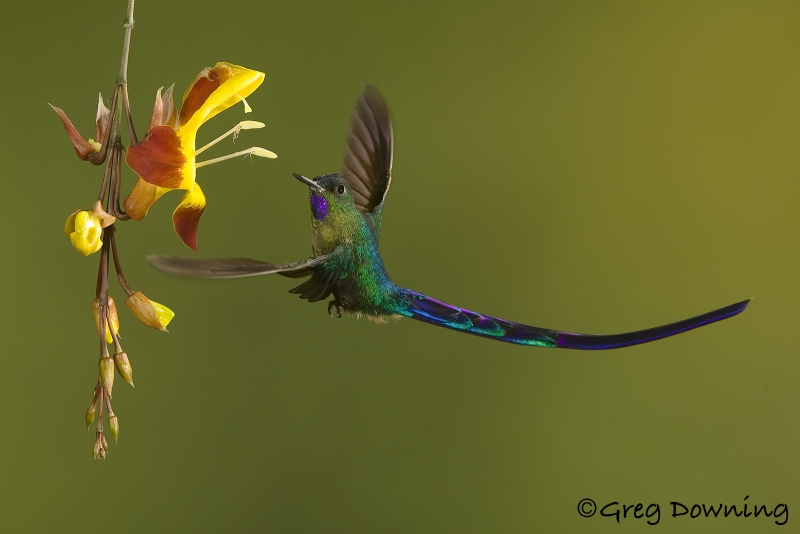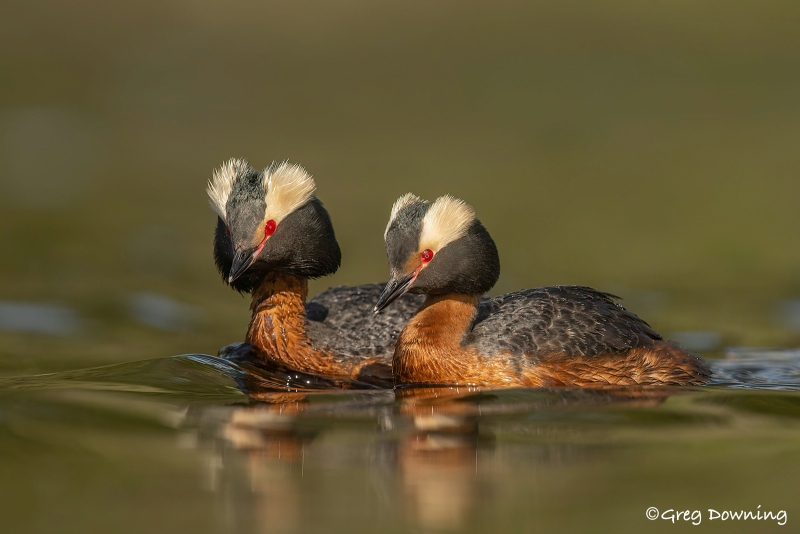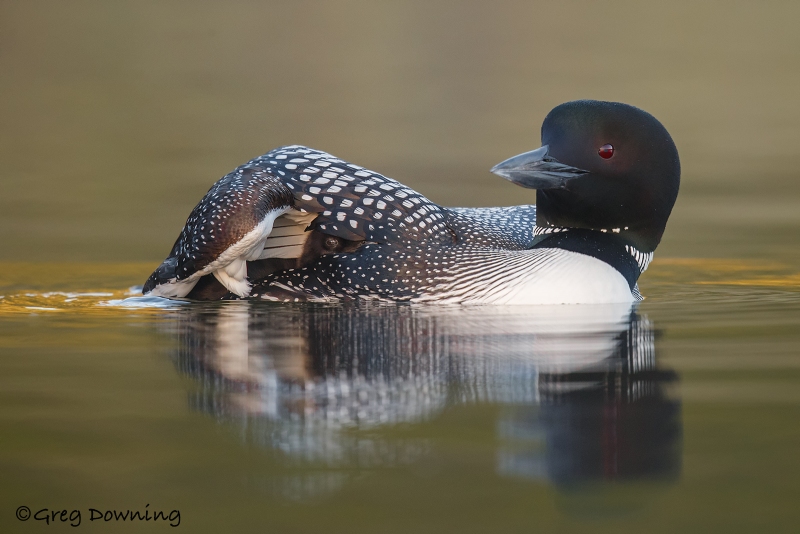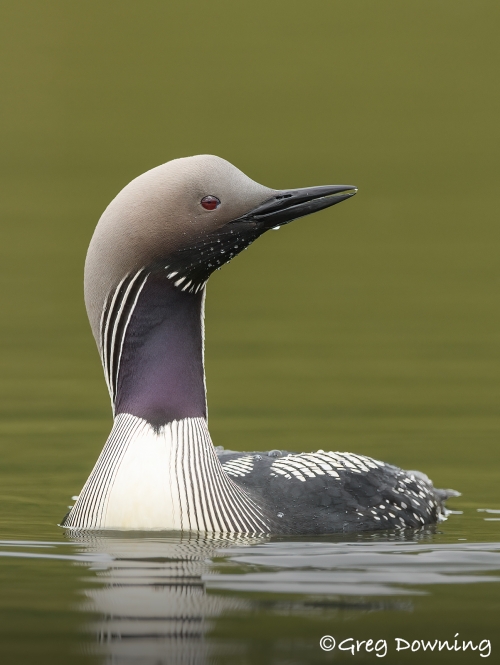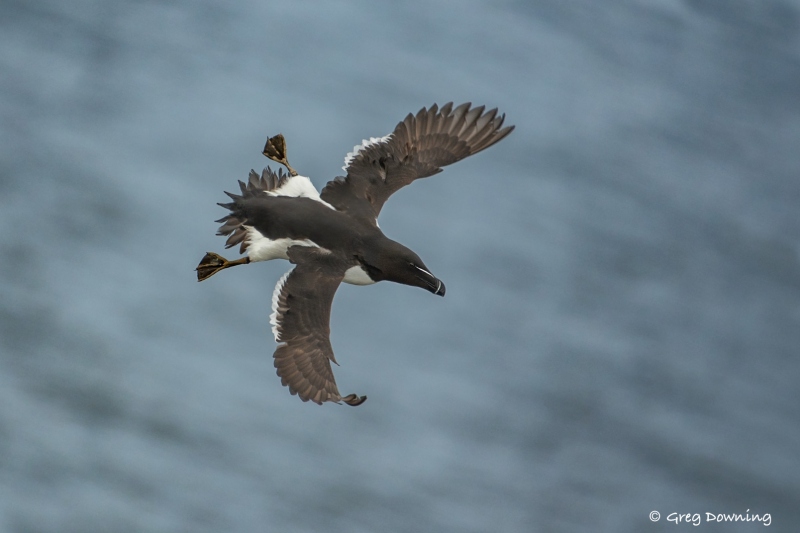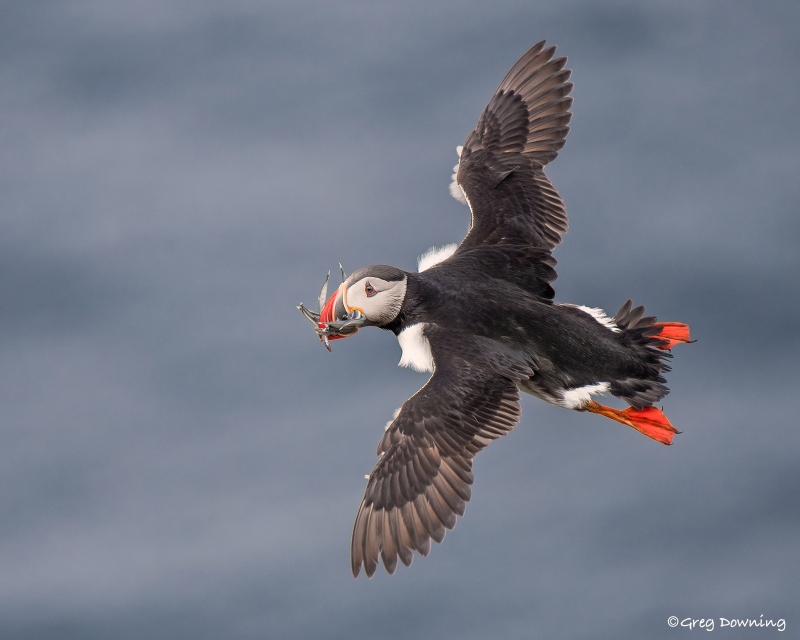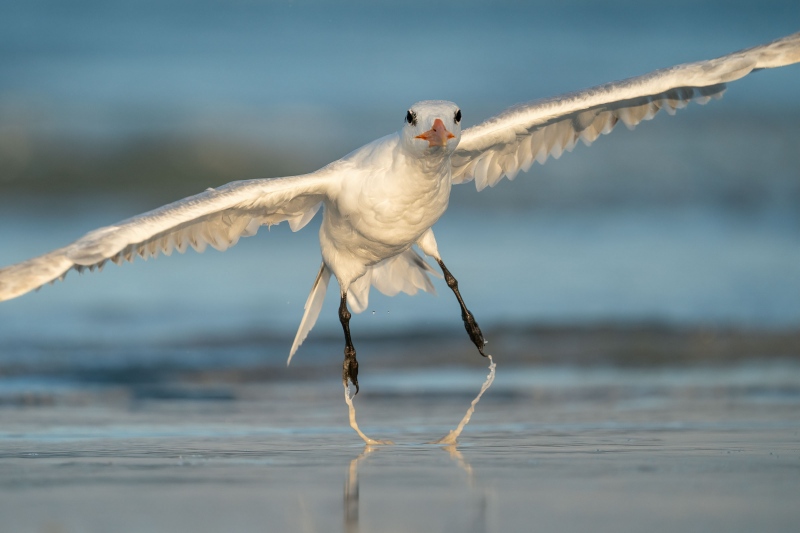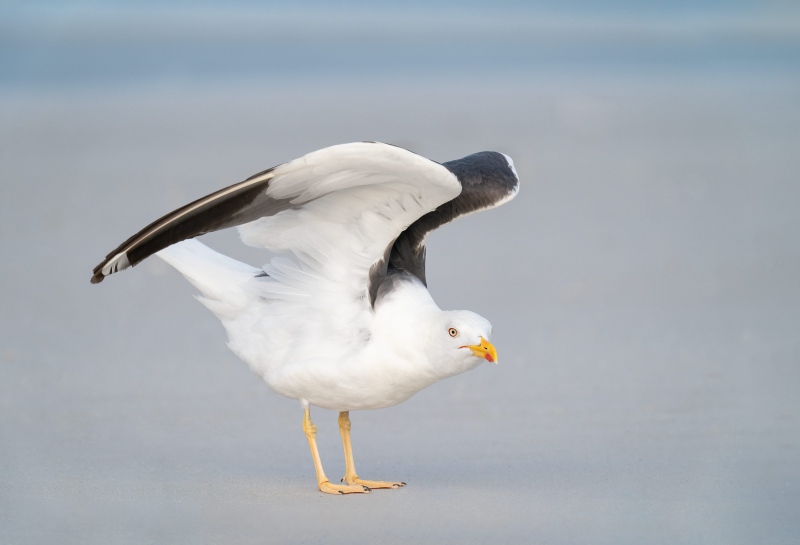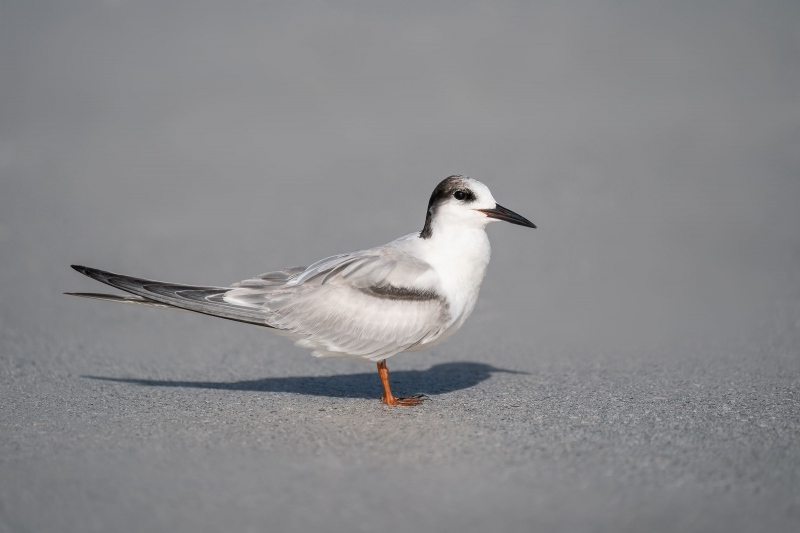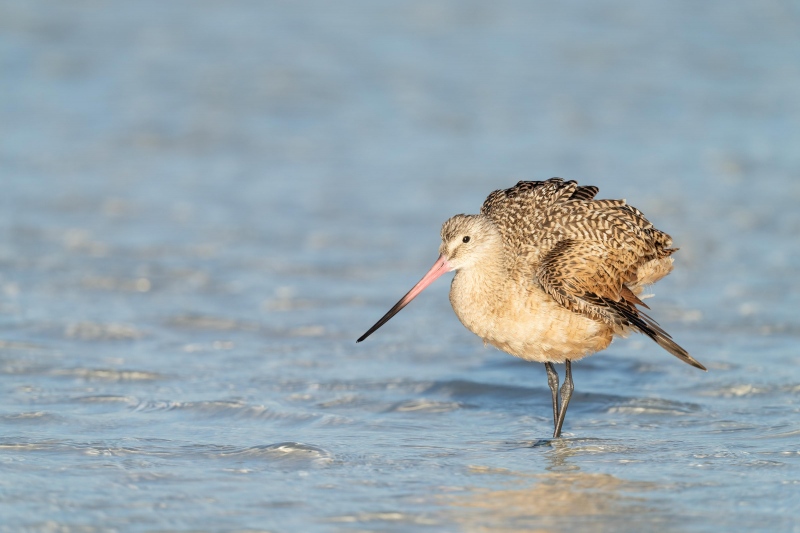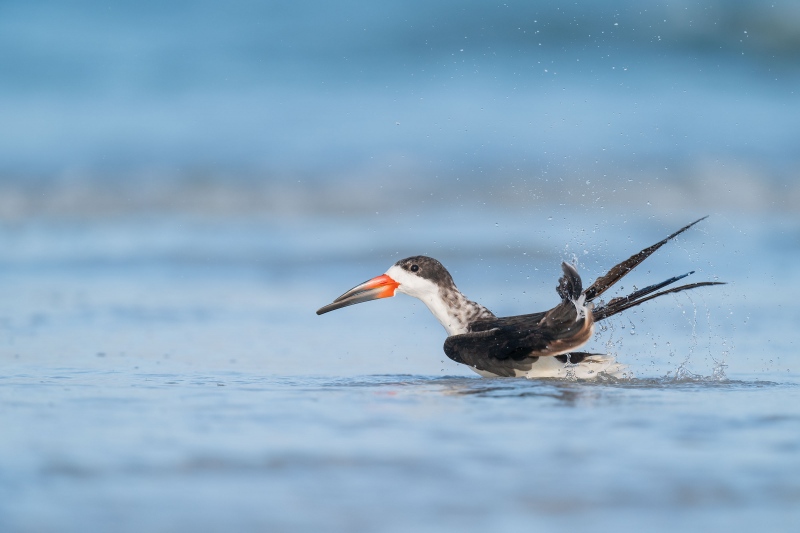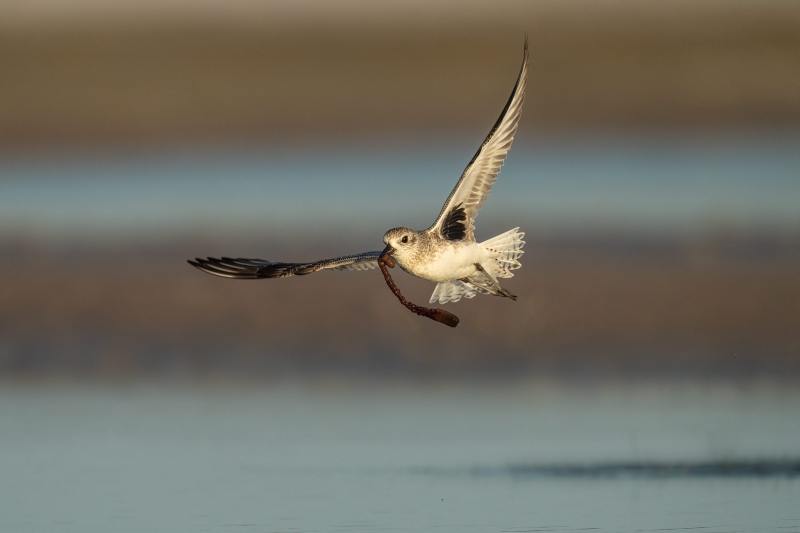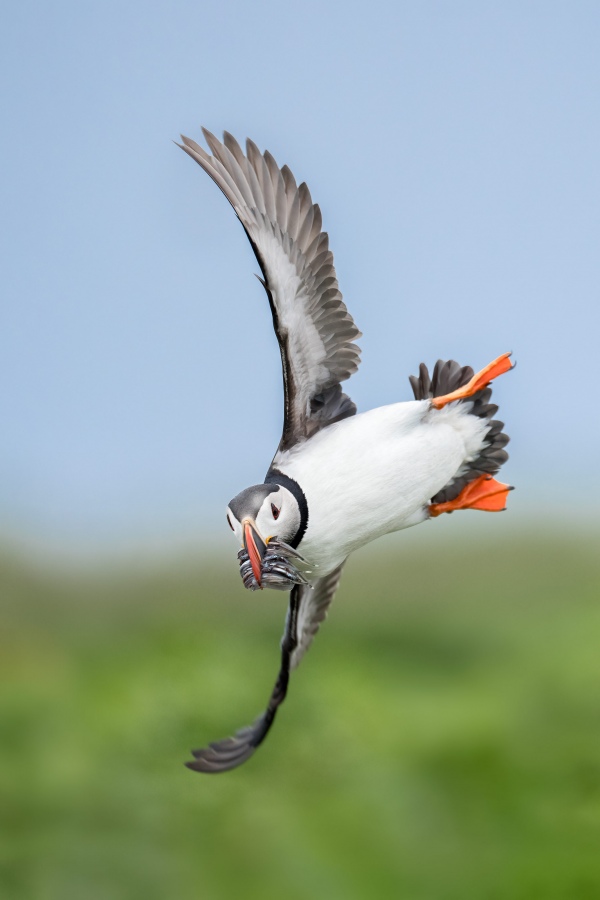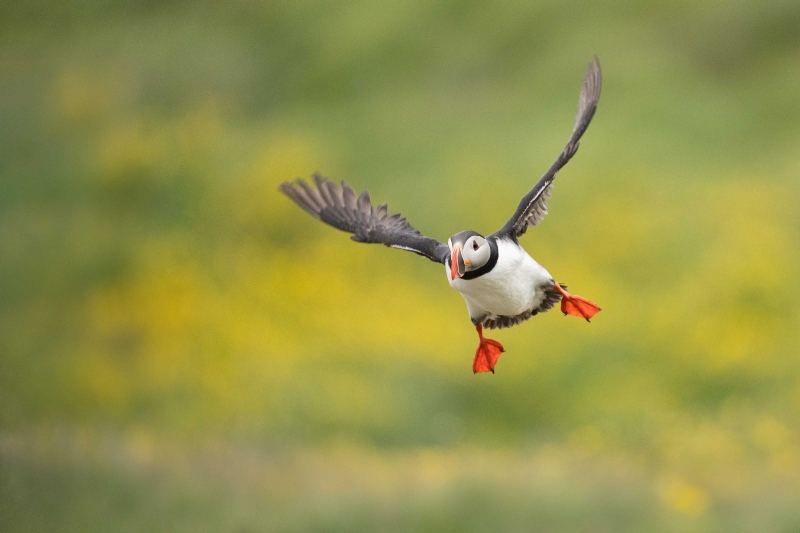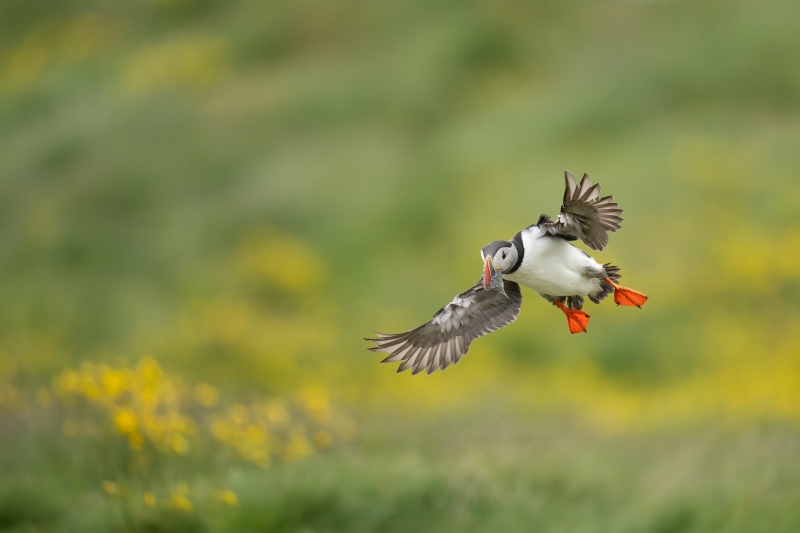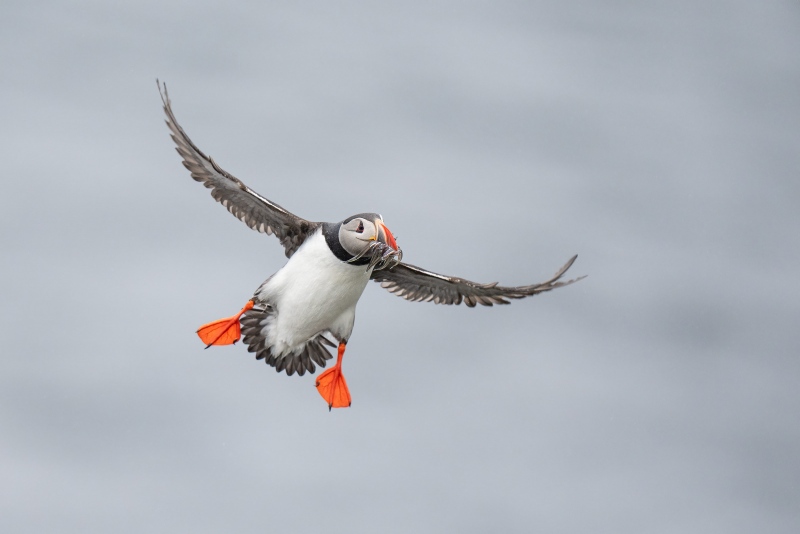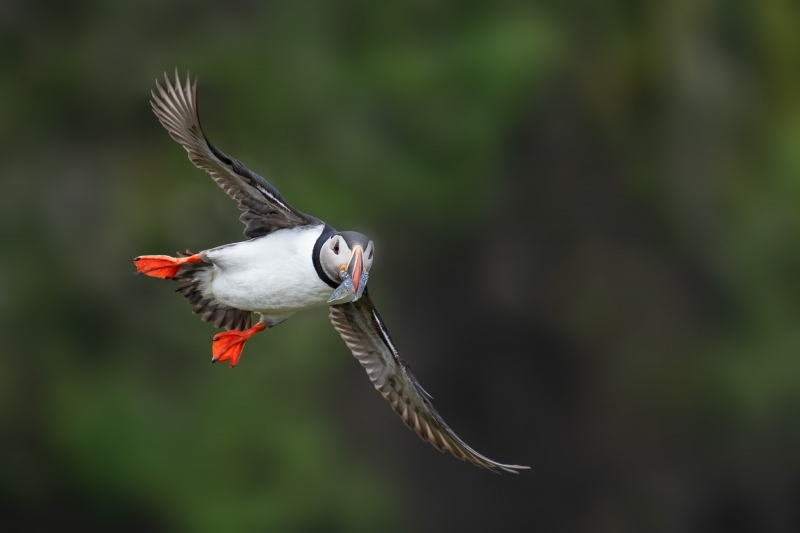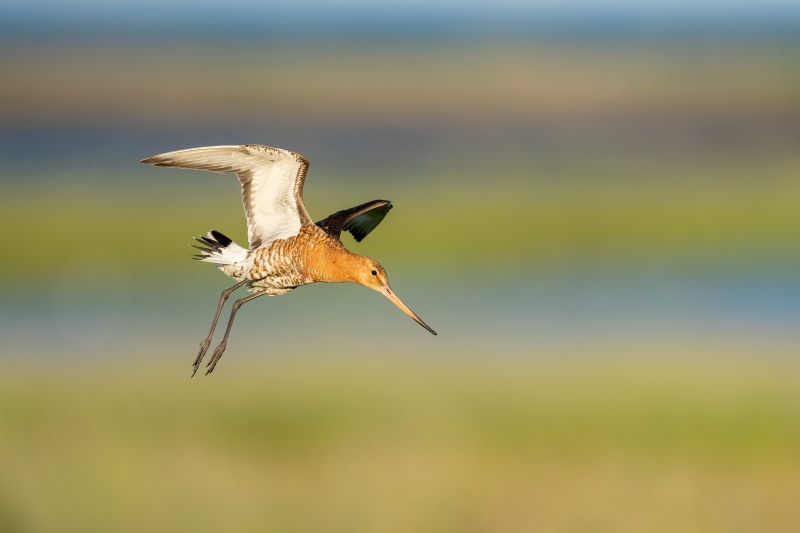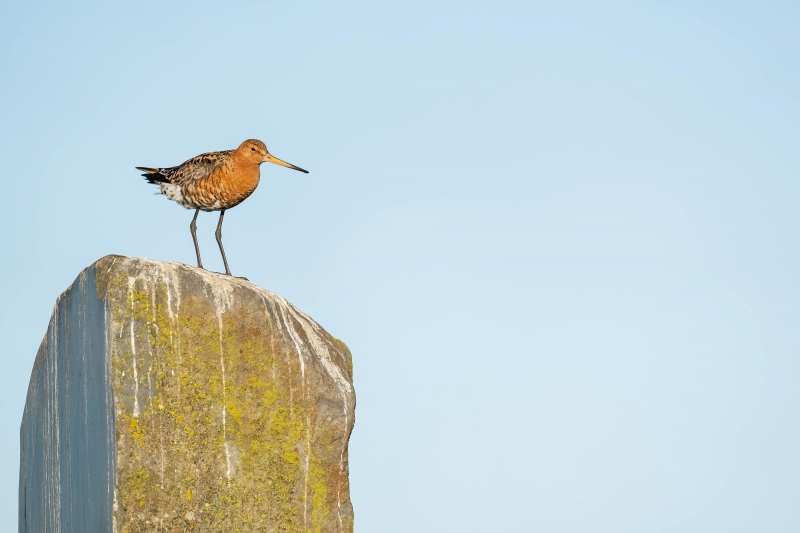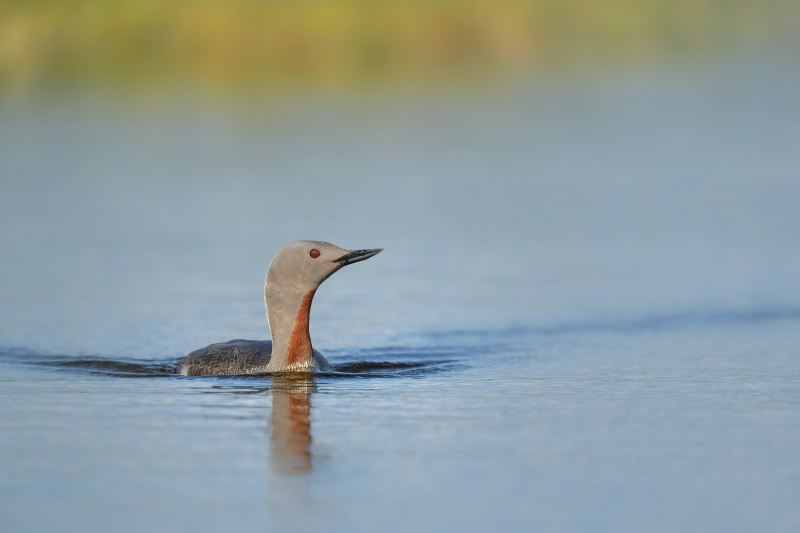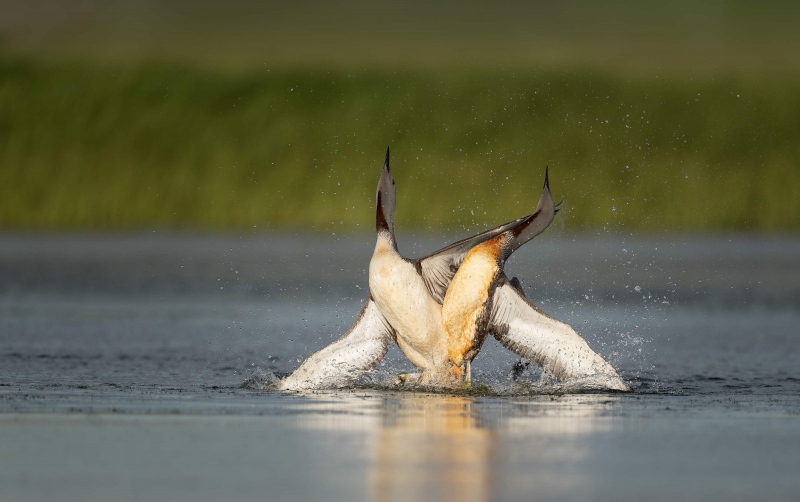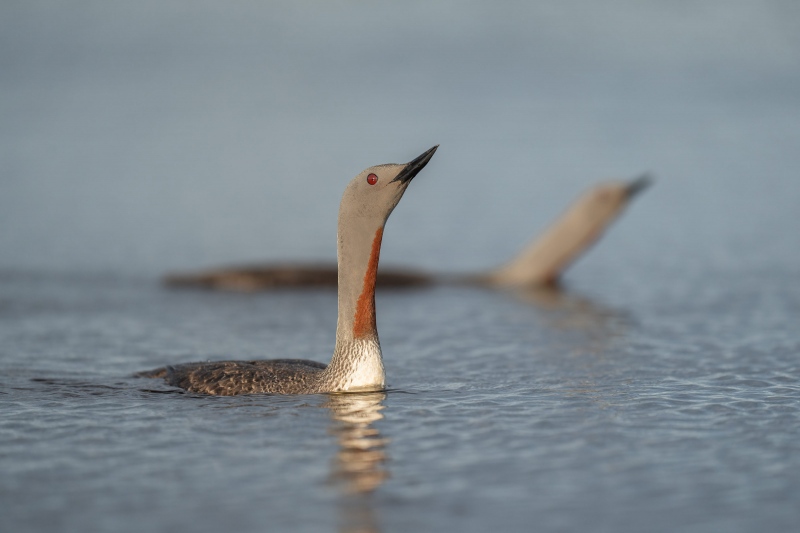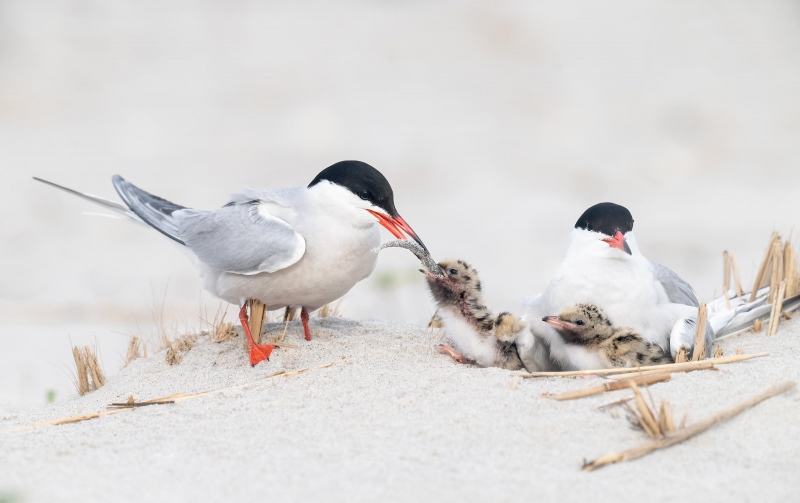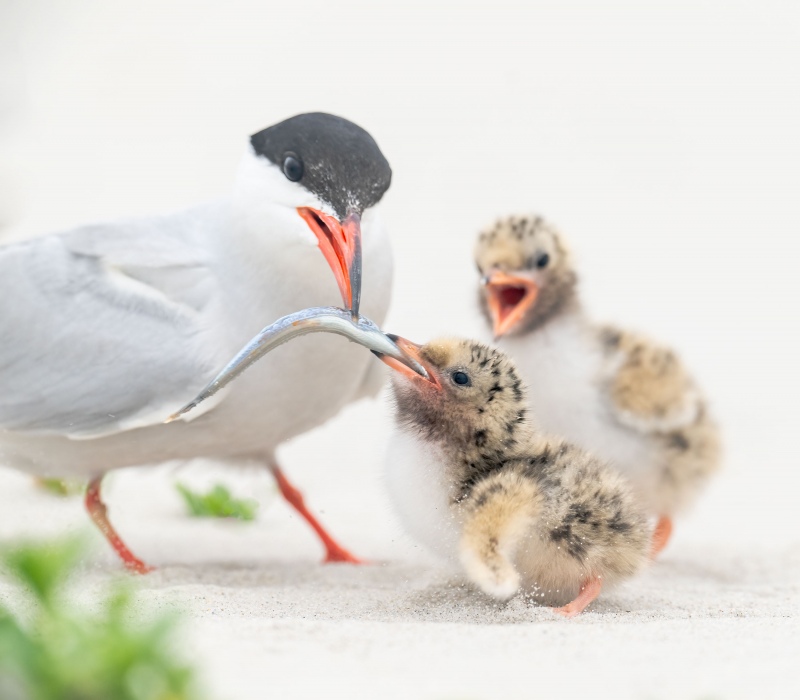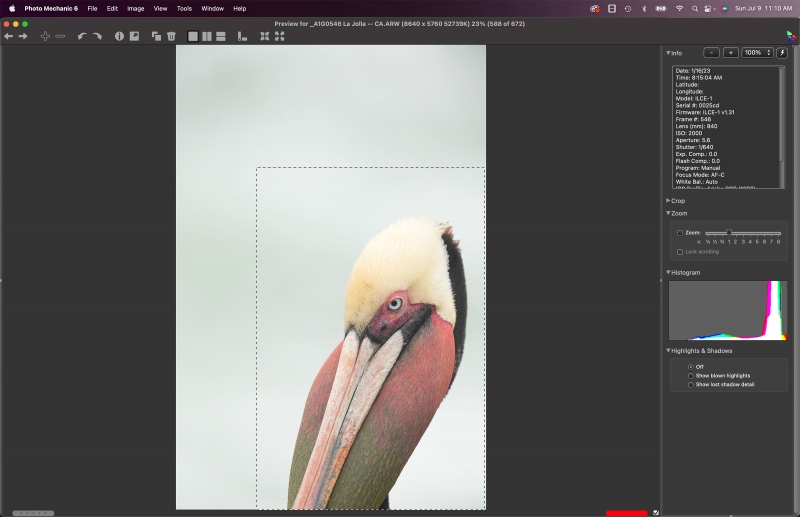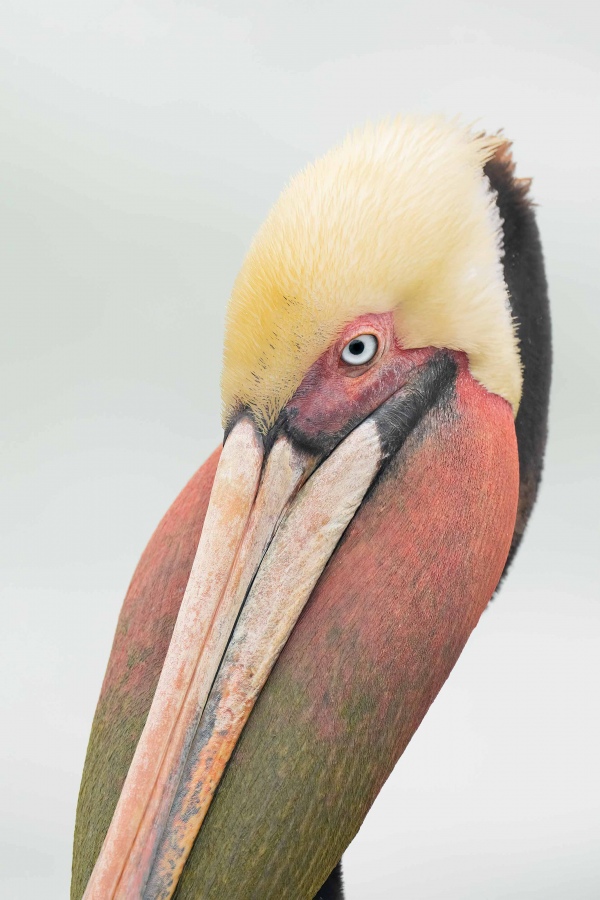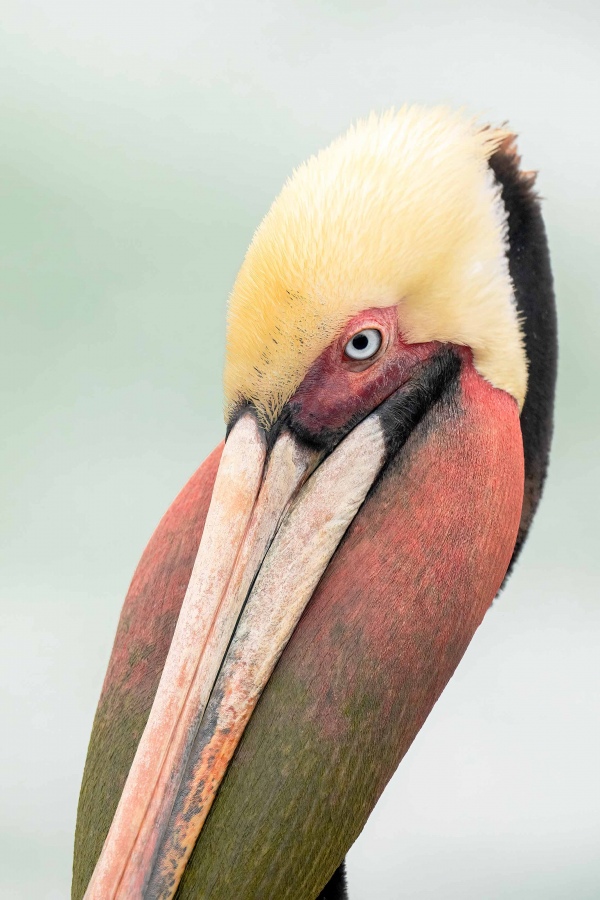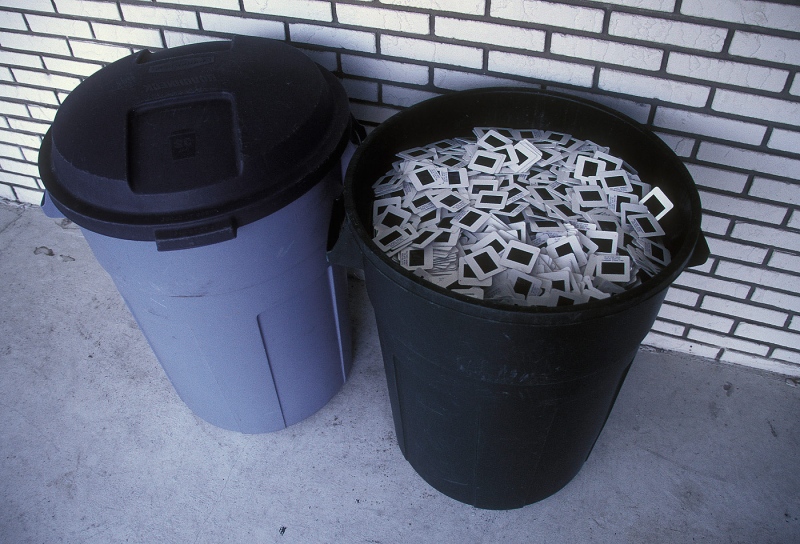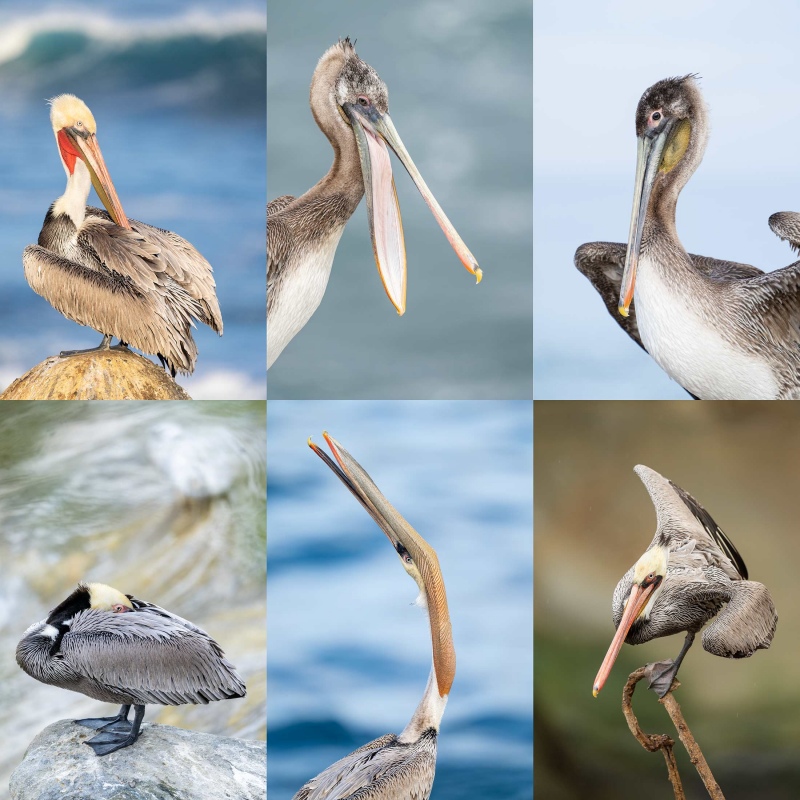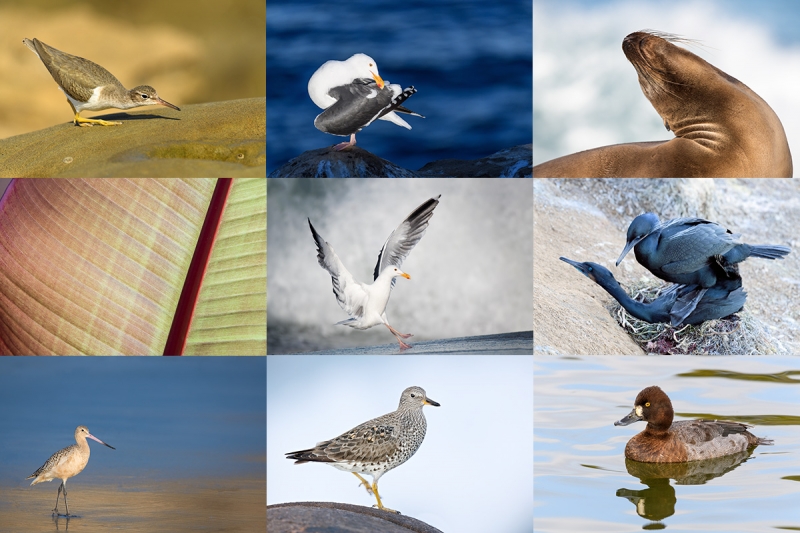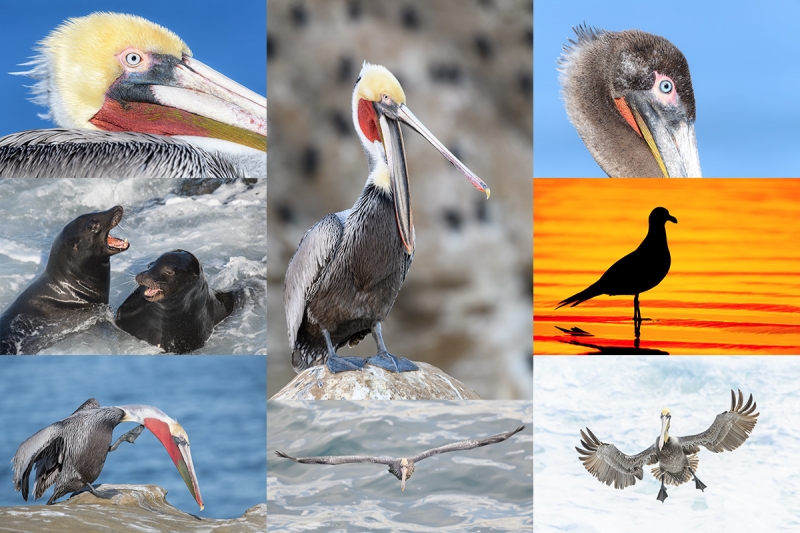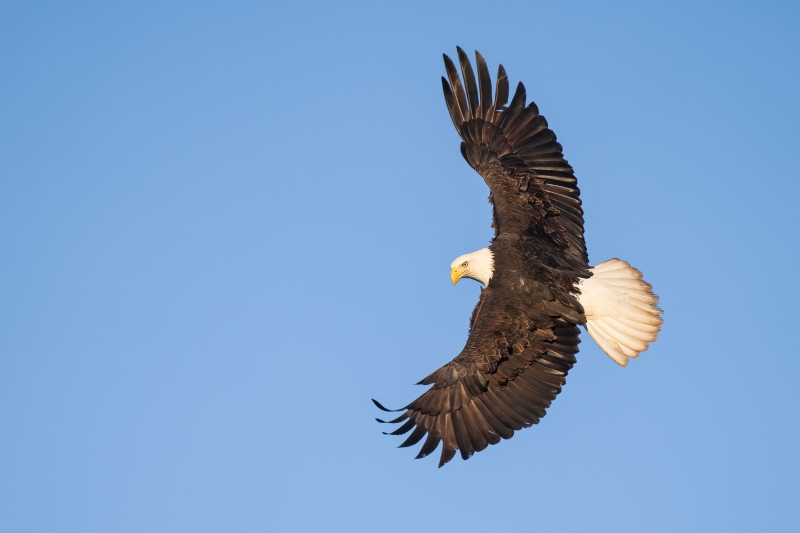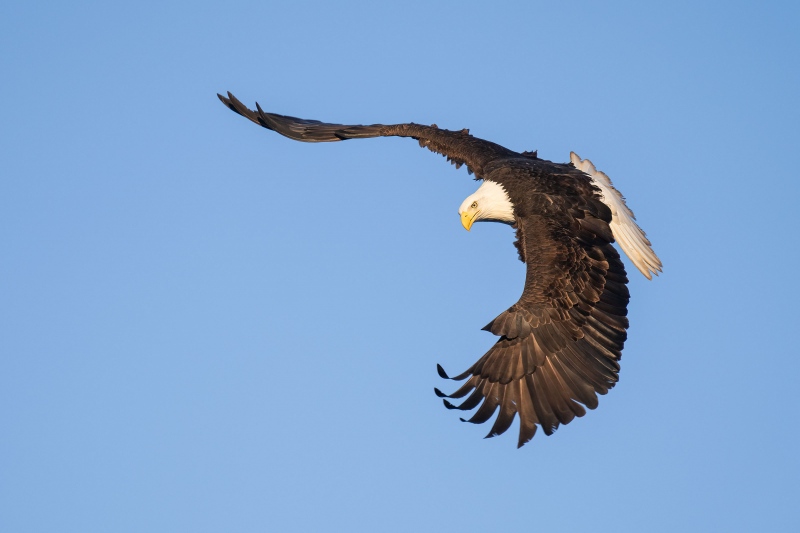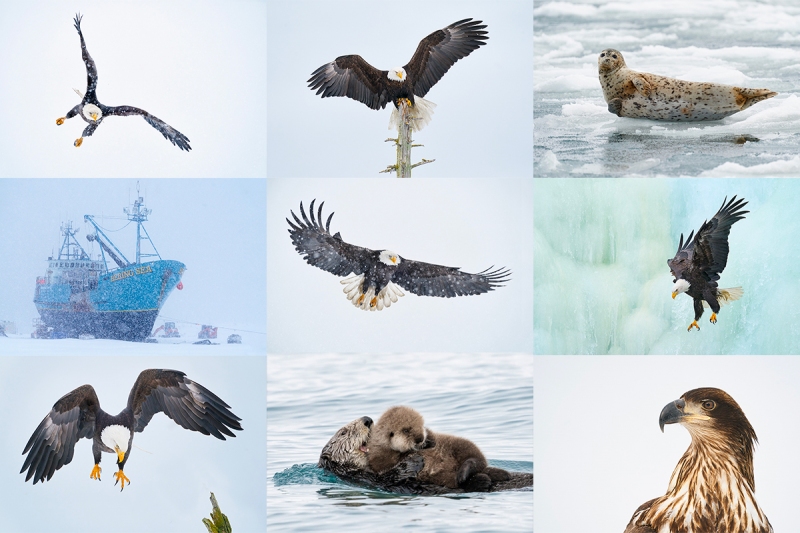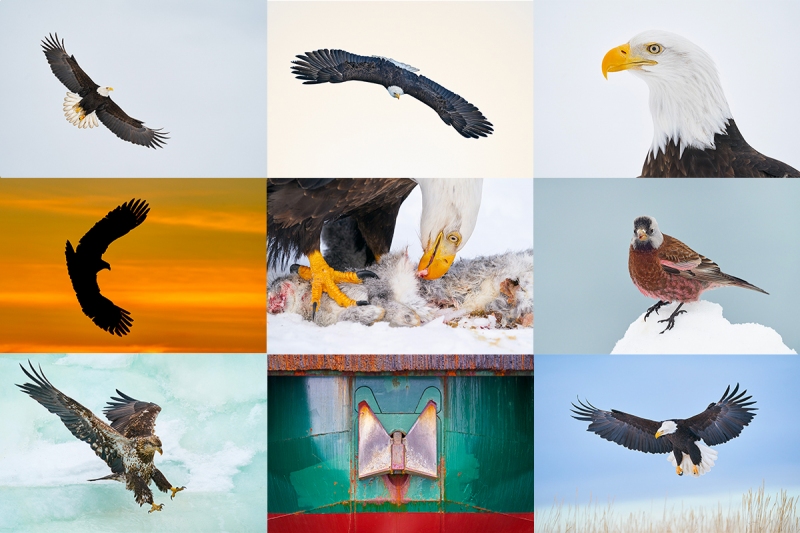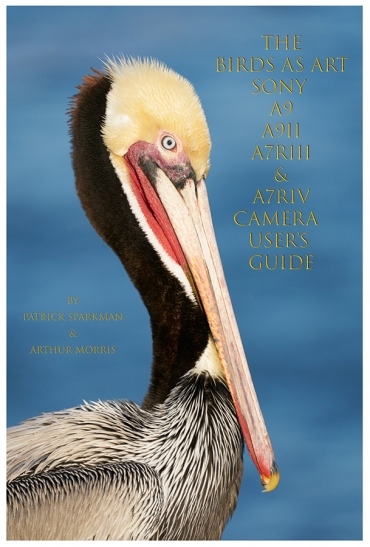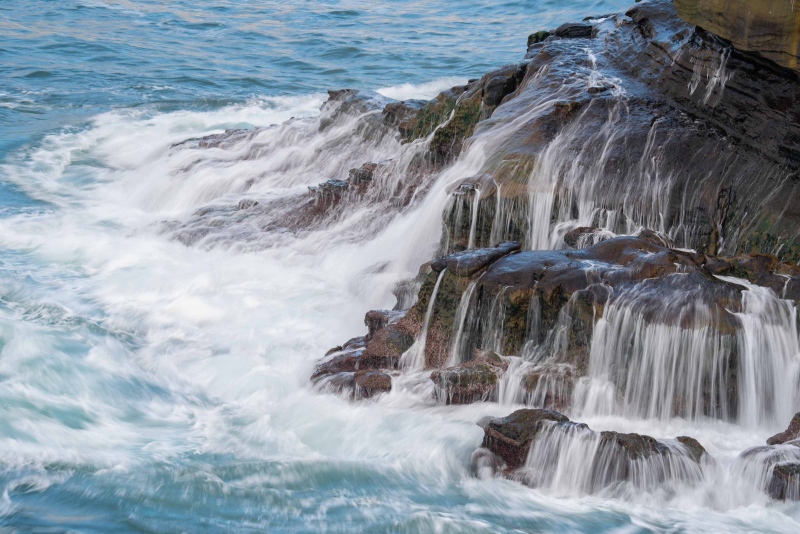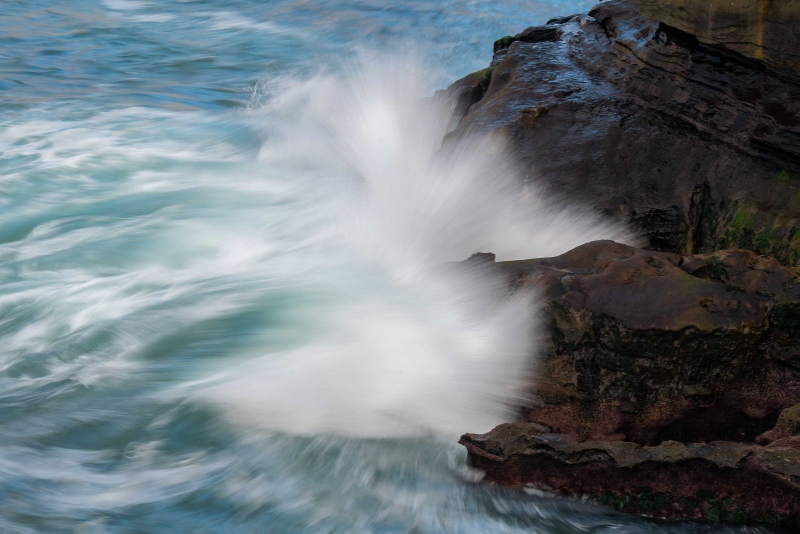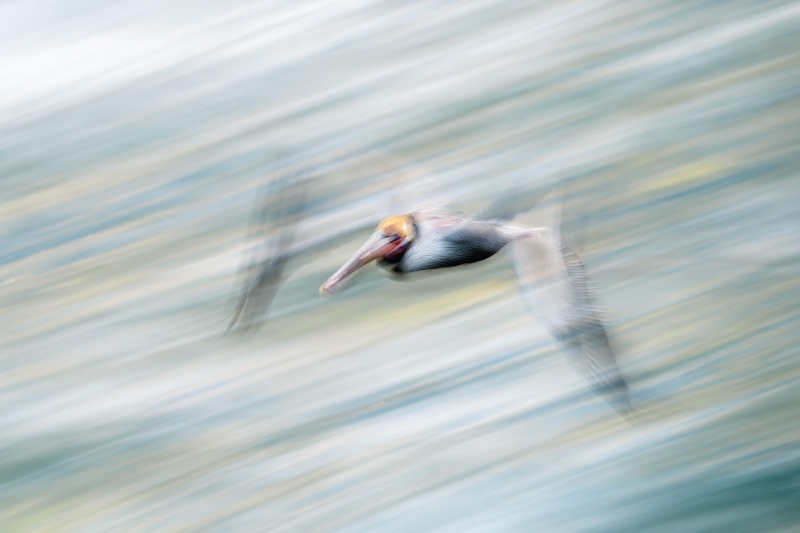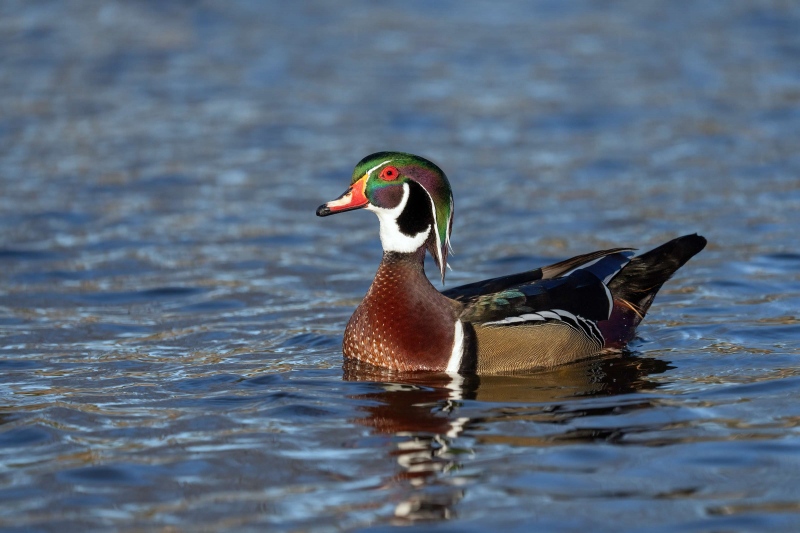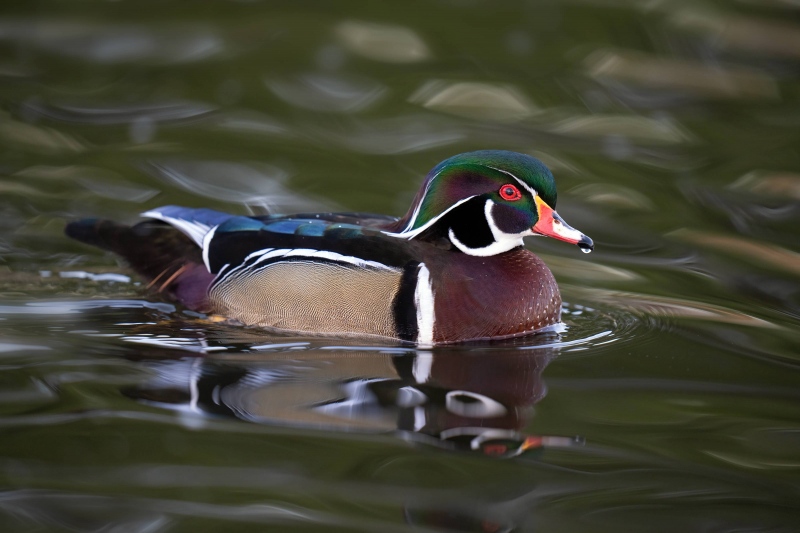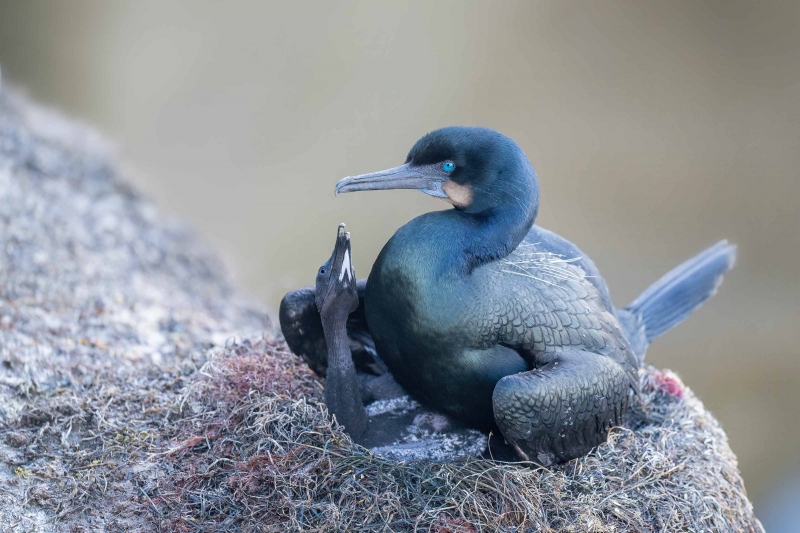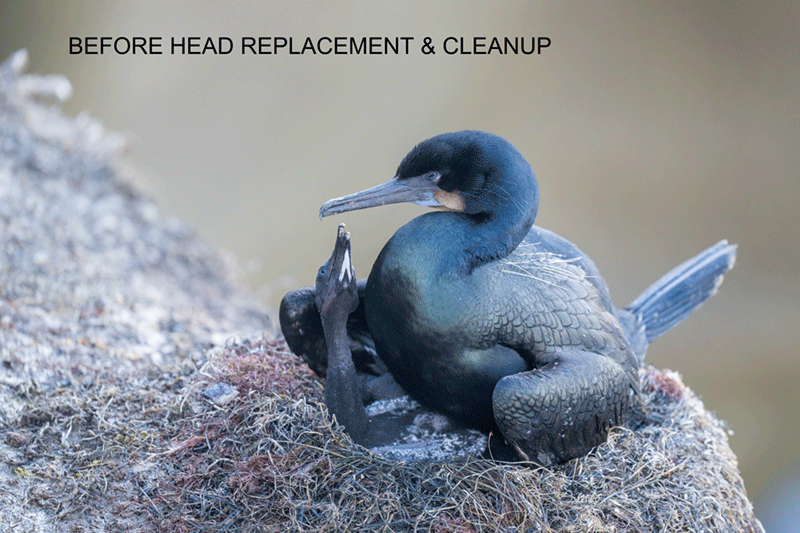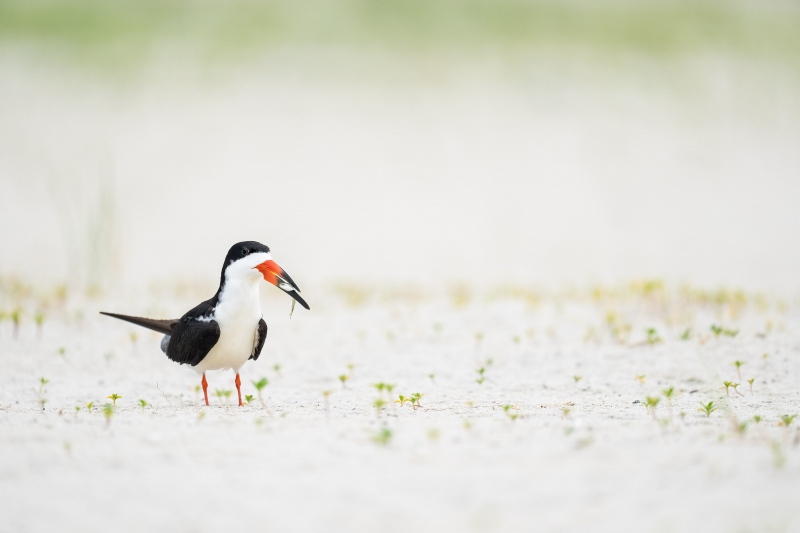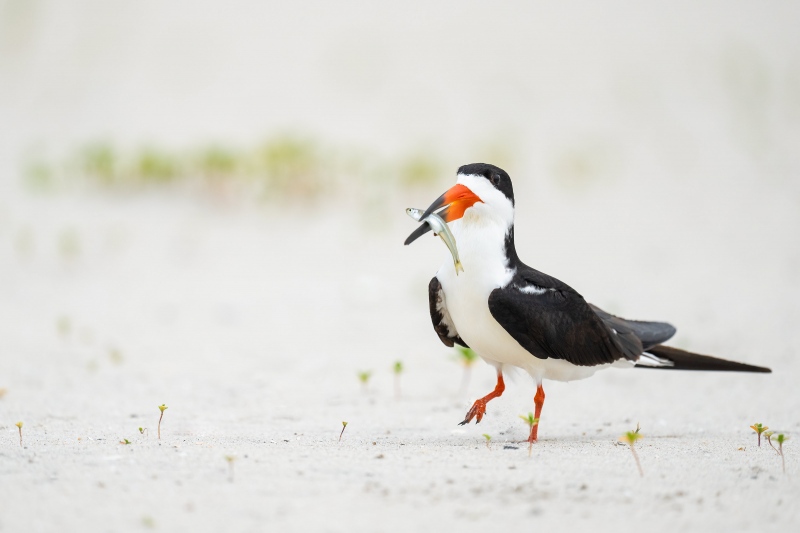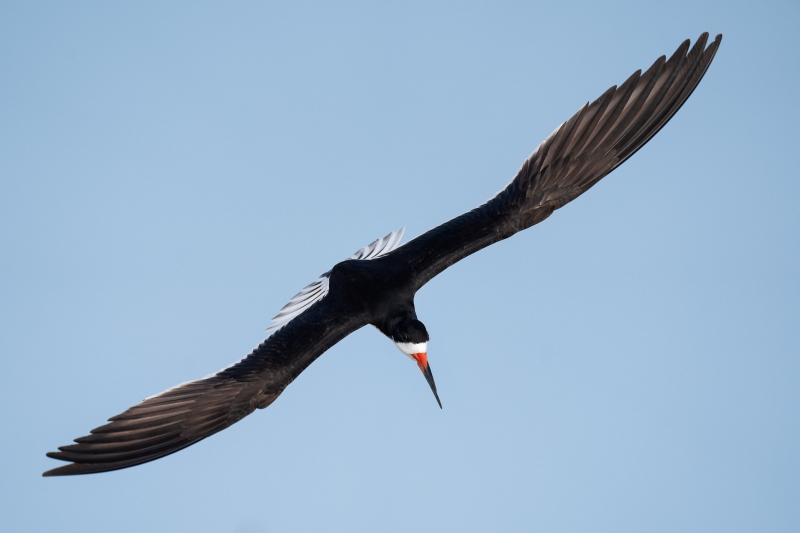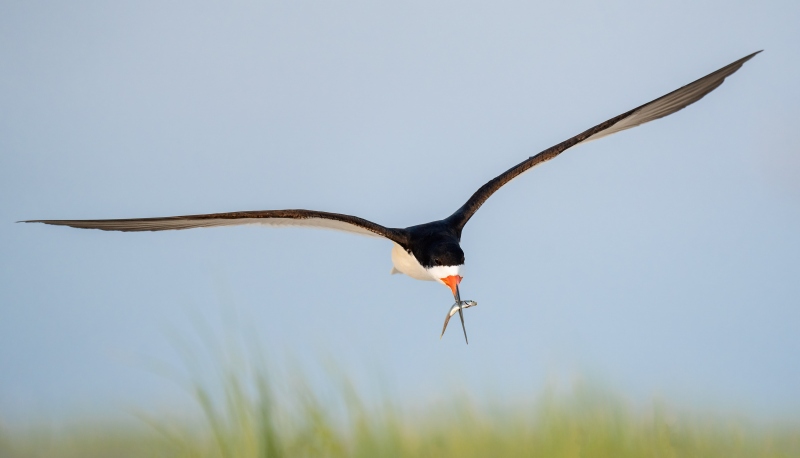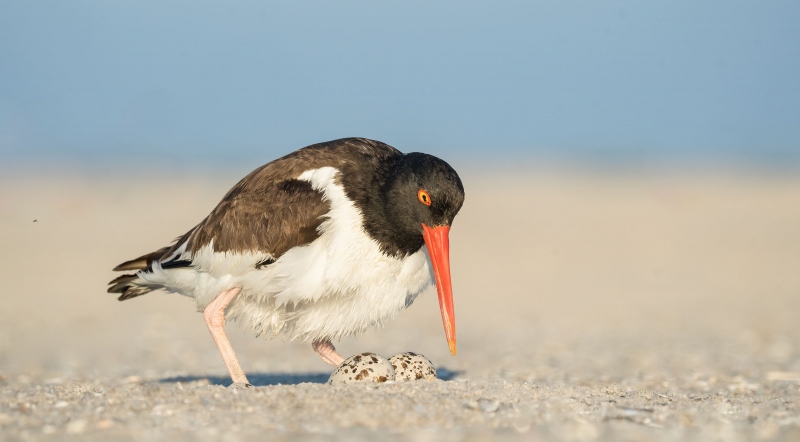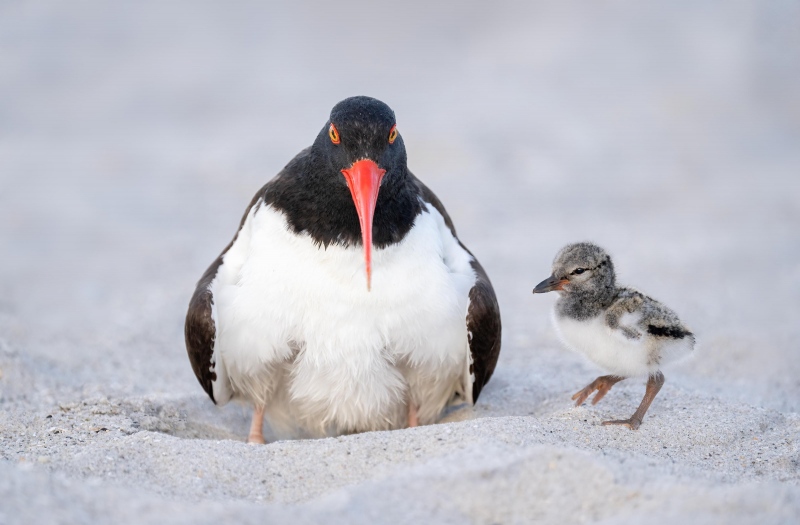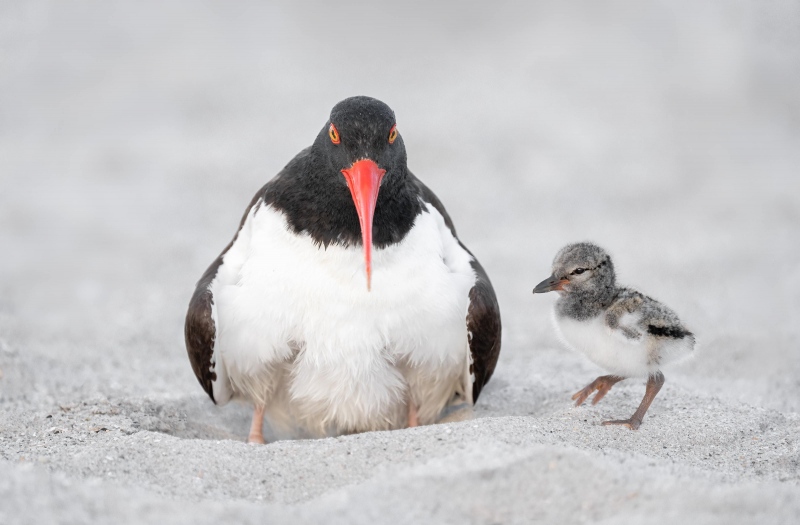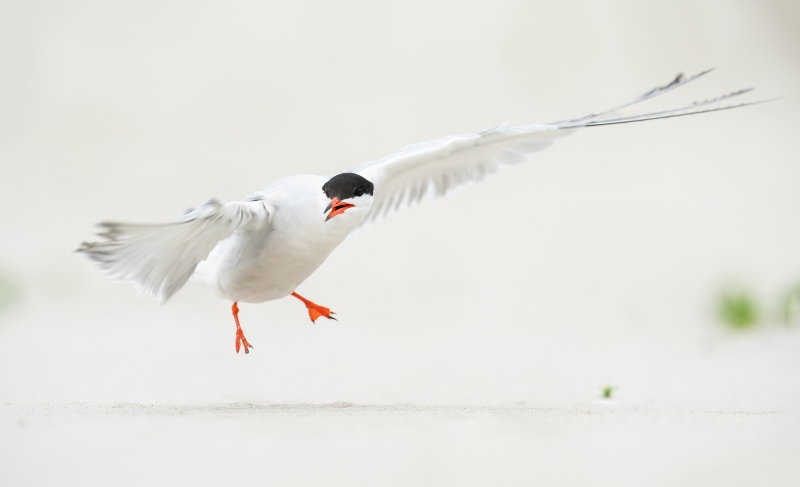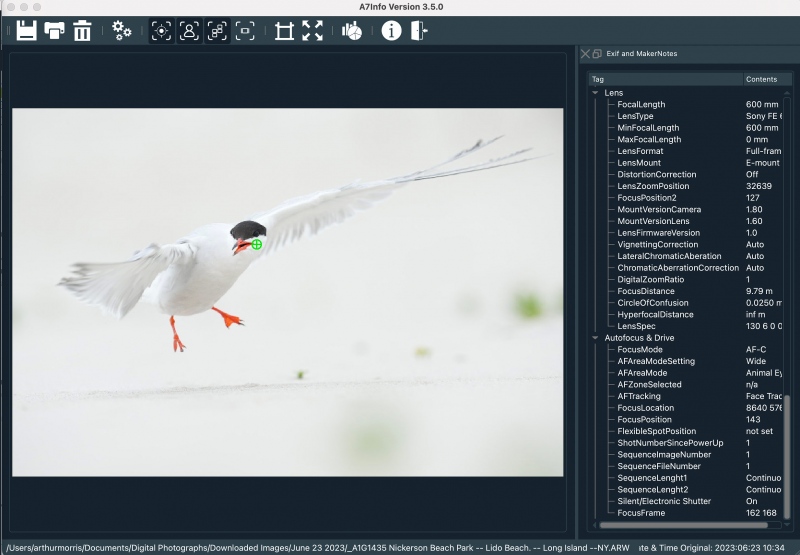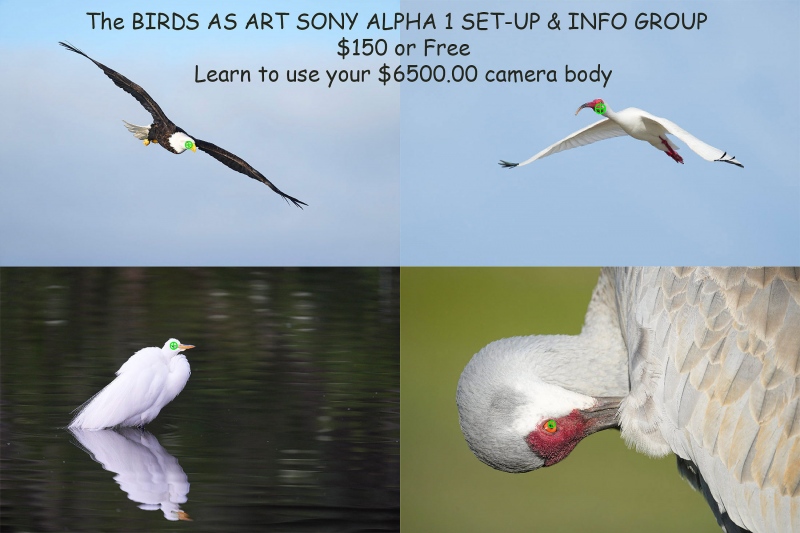July 30th, 2023 What’s Up?
Photography at Grimsey Island, Iceland continues to be fantastic. On Friday the highlight was a long flight session with fulmars and kittiwakes On a very windy Saturday afternoon, we had dozens of puffins lying straight at us. On Sunday morning, we worked the Black Guillemots perched with Butterfish and in flight; I created 1957 images of that species. Then it was more fulmars and kittiwakes in flight, perched puffin head portraits, flying puffins, and a young Snow Bunting getting fed. All in all, I created 4698 images during today’s morning session.
If you would like info on Greg Downing’s 2024 and/or the 2025 Grimsey Island puffin trips, please shoot me an e-mail by clicking here.
Speaking of today, it is Sunday 30 July 2023. Right now, it is 1:11pm in Iceland, 9:11am on the east coast. Wherever you are and whatever you are doing, I hope that you too have a great day. I need a long nap; it will begin one minute after I hit Publish.
Please remember to use the B&H and Amazon links that are found on most blog pages and to use the BIRDSASART discount code at checkout when purchasing your new gear from Bedfords to get 3% back on your credit card and enjoy free second-day air FedEx. Please, also, consider joining a BAA IPT. You will be amazed at how much you will learn!
You can find some great photo accessories (and necessities, like surf booties!) on Amazon by clicking on the Stuff tab on the orange/yellow menu bar above. On a related note, it would be extremely helpful if blog-folks who, like me, spend too much money on Amazon, would get in the habit of clicking on the Amazon logo link on the right side of each blog post when they shop online. As you might expect, doing so will not cost you a single penny, but would be appreciated tremendously by yours truly. And doing so works seamlessly with your Amazon Prime account.
If an item — a Delkin flash card, or a tripod head — for example, that is available from B&H and/or Bedfords, is also available in the BAA Online Store, it would be great, and greatly appreciated, if you would opt to purchase from us. We will match any price. Please remember also to use my B&H affiliate links or to earn 3% cash back at Bedfords by using the BIRDSASART discount code at checkout for your major gear purchases. Doing either often earns you free guides and/or discounts. And always earns my great appreciation.
The Fact$ of Life
The market for editorial sales of natural history images has virtually disappeared. The incomes of the world’s top stock photographers are down by at least 90%. Like me, many depend on income from photo trips, the sale of educational materials, and income from this or that affiliate program.
In 2001, BAA sold the publication rights to images for nearly one-quarter million US dollars. That amount dropped to about $20,000 by 2011, and in 2017, to slightly more than $2,000.00. We’ve stopped counting. IPTs used to fill within days. Now I am happy to go with one or two folks, but I’d much rather have you along. And so it goes. In 2009, I turned to creating educational blog posts, now to the tune of 4060! Yes, 4060 educational blog posts. Please, therefore, remember to use either my B&H or Bedfords affiliate links for your major purposes. It will not cost you one cent to do either.
B&H
Many folks have written recently stating that they purchased a Sony a1 from B&H and would like their free membership in the Sony 1 Info and Updates Group, a $150.00 value. When I check my affiliate account, their orders have not been there. When I let them know that they get credit for B&H purchases only if they use one of the many B&H affiliate links on the blog or begin their searches with this link, they are always disappointed. If in doubt, please contact me via e-mail and request a BH link. I am always glad to help and to guide you to the right gear.
B&H Simplified
To ensure that I get credit for your B&H purchases, you can always click here. The tracking is invisible but greatly appreciated. And, you can use your PayBoo card. You must use the website to order. Thanking me for the past 4000 educational blog posts could not be any easier and will not cost you one penny. Please shoot me your B&H receipt for major purchases.
Bedfords Simplified
Click here to start your search. Choose standard shipping, and when you get to the payment page, enter BIRDSASART in the discount code box and hit apply. You will automatically be upgraded to free second day air Fed-Ex and receive 3% cash back on your credit card once your order ships. Either is greatly appreciated by yours truly.
Money Saving Reminder
Many have learned that if you need a hot photo item that is out of stock at B&H and would like to enjoy getting 3% back on your credit card along with free 2nd Day Air Fed-Ex Air shipping, your best bet is to click here, place an order with Bedfords, and enter the coupon code BIRDSASART at checkout. If an item is out of stock, contact Steve Elkins via e-mail or on his cell phone at (479) 381-2592 (Central time). Be sure to mention the BIRDSASART coupon code and check the box for Free Shipping. That will automatically upgrade to free 2nd Day Air Fed-Ex. Steve has been great at getting folks the hot items that are out of stock at B&H and everywhere else. The waitlists at the big stores can be a year or longer for the hard-to-get items. Steve will surely get you your gear long before that. For the past year, he has been helping BAA Blog folks get their hands on items like the SONY a 1, the SONY 200-600 G OSS lens, the Canon EOS R5, the Canon RF 100-500mm lens, and the Nikon 500mm PF. Steve is personable, helpful, and eager to please.
Important Note
As an Amazon Associate, I earn a small percentage when you purchase from Amazon after using any of the Amazon links on the blog (including the logo-link on the right side of each blog post page). My affiliate link works fine with Amazon Prime and using it will not cost you a single cent. Huge thanks, BTW 🙂


Gear Questions and Advice
Too many folks attending BAA IPTs and dozens of photographers whom I see in the field and on BPN, are — out of ignorance — using the wrong gear, especially when it comes to tripods and more especially, tripod heads. And the same is true in spades when ordering new camera bodies or lenses. My advice will often save you some serious money and may help you avoid making a seriously bad choice. Please know that I am always glad to answer your gear questions via e-mail. If you are desperate, you can try me on my cell at 863-221-2372. Please leave a message and shoot me a text if I do not pick up.
The Sony 1200mm Advantage
While I made lots of good images at 1200mm with Canon, the Nikon dsLR TC-20E 2X teleconverter was something of a dog. It was even difficult to make sharp images with the 1.7X TC and the Nikkor 600mm VR lens. Reviews are mixed on the Nikon Z Teleconverter TC-2x. With Sony, the sharpness of a1 images made with the 600mm f/4 GM, the a-1, and the FE 2X TC is astounding. Even at silly low shutter speeds like 1/125 second.
Your Call
Do you like the warmer colors in Image #1 or the color colors in Image #2?
Do you like the slightly looser crop in Image #1 or the slightly tighter crop in Image #2?
|
|
|
Tracking: Expand Spot/AF-C performed perfectly. Be sure to click on the image to enjoy a high-res version.
Image #3: 100% Crop of the Atlantic Puffin with fish for chick image
|
Insane Detail
I believe that anyone who knows bird photography would be stunned by the sharpness of the 100% crop of today’s featured image. The yes of the fishes are phenomenally sharp. My favorite one is the one that is visible through the translucent body of another fish. Being able to create sharp images of static subjects at 1200mm with relatively low ISOs is a great advantage for all nature photographers. That said, many folks shy away from using the 2X TC with any super-telephoto lens. Try it. You just might love it. Especially if you use Sony gear.
Typos
With all blog posts, feel free to e-mail or to leave a comment regarding any typos or errors.
July 28th, 2023 Thanks!
Thanks to the very many folks who commented on the two images in the last blog post. Most everyone chose the dramatic Black-legged Kittiwake image over the splendid, symmetrical puffin with the green background. If I could only have one of those two, I would opt for the kittiwake image but only by a very slim margin.
Your Call?
Which of today’s three spoonbill images do you like best? Why did you make your choice
What’s Up?
My Grimsey Island, Iceland trip continues to be a dream come true. In addition to puffins, puffins, and more puffins, the food at the Krian Restaurant, is superb. Yesterday, the owner/chef Svafar, took me cod fishing. I caught more than ten including some 8 pounders, in less than 30 minutes! Then he took us on scenic photo tour of the cliffs. He cleaned the fish and I had them for dinner. We saved a bucket of fish guts and had lots of high key fun with the Arctic Terns, Black-legged Kittiwakes, and fulmars in the harbor.
If you would like info on Greg Downing’s 2024 and/or the 2025 Grimsey Island puffin trips, please shoot me an e-mail by clicking here.
Today is Friday 28 July 2023. Wherever you are and whatever you are doing, I hope that you too have a great day.
Please remember to use the B&H and Amazon links that are found on most blog pages and to use the BIRDSASART discount code at checkout when purchasing your new gear from Bedfords to get 3% back on your credit card and enjoy free second-day air FedEx. Please, also, consider joining a BAA IPT. You will be amazed at how much you will learn!
You can find some great photo accessories (and necessities, like surf booties!) on Amazon by clicking on the Stuff tab on the orange/yellow menu bar above. On a related note, it would be extremely helpful if blog-folks who, like me, spend too much money on Amazon, would get in the habit of clicking on the Amazon logo link on the right side of each blog post when they shop online. As you might expect, doing so will not cost you a single penny, but would be appreciated tremendously by yours truly. And doing so works seamlessly with your Amazon Prime account.
If an item — a Delkin flash card, or a tripod head — for example, that is available from B&H and/or Bedfords, is also available in the BAA Online Store, it would be great, and greatly appreciated, if you would opt to purchase from us. We will match any price. Please remember also to use my B&H affiliate links or to earn 3% cash back at Bedfords by using the BIRDSASART discount code at checkout for your major gear purchases. Doing either often earns you free guides and/or discounts. And always earns my great appreciation.
The Fact$ of Life
The market for editorial sales of natural history images has virtually disappeared. The incomes of the world’s top stock photographers are down by at least 90%. Like me, many depend on income from photo trips, the sale of educational materials, and income from this or that affiliate program.
In 2001, BAA sold the publication rights to images for nearly one-quarter million US dollars. That amount dropped to about $20,000 by 2011, and in 2017, to slightly more than $2,000.00. We’ve stopped counting. IPTs used to fill within days. Now I am happy to go with one or two folks, but I’d much rather have you along. And so it goes. In 2009, I turned to creating educational blog posts, now to the tune of 4060! Yes, 4060 educational blog posts. Please, therefore, remember to use either my B&H or Bedfords affiliate links for your major purposes. It will not cost you one cent to do either.
B&H
Many folks have written recently stating that they purchased a Sony a1 from B&H and would like their free membership in the Sony 1 Info and Updates Group, a $150.00 value. When I check my affiliate account, their orders have not been there. When I let them know that they get credit for B&H purchases only if they use one of the many B&H affiliate links on the blog or begin their searches with this link, they are always disappointed. If in doubt, please contact me via e-mail and request a BH link. I am always glad to help and to guide you to the right gear.
B&H Simplified
To ensure that I get credit for your B&H purchases, you can always click here. The tracking is invisible but greatly appreciated. And, you can use your PayBoo card. You must use the website to order. Thanking me for the past 4000 educational blog posts could not be any easier and will not cost you one penny. Please shoot me your B&H receipt for major purchases.
Bedfords Simplified
Click here to start your search. Choose standard shipping, and when you get to the payment page, enter BIRDSASART in the discount code box and hit apply. You will automatically be upgraded to free second day air Fed-Ex and receive 3% cash back on your credit card once your order ships. Either is greatly appreciated by yours truly.
Money Saving Reminder
Many have learned that if you need a hot photo item that is out of stock at B&H and would like to enjoy getting 3% back on your credit card along with free 2nd Day Air Fed-Ex Air shipping, your best bet is to click here, place an order with Bedfords, and enter the coupon code BIRDSASART at checkout. If an item is out of stock, contact Steve Elkins via e-mail or on his cell phone at (479) 381-2592 (Central time). Be sure to mention the BIRDSASART coupon code and check the box for Free Shipping. That will automatically upgrade to free 2nd Day Air Fed-Ex. Steve has been great at getting folks the hot items that are out of stock at B&H and everywhere else. The waitlists at the big stores can be a year or longer for the hard-to-get items. Steve will surely get you your gear long before that. For the past year, he has been helping BAA Blog folks get their hands on items like the SONY a 1, the SONY 200-600 G OSS lens, the Canon EOS R5, the Canon RF 100-500mm lens, and the Nikon 500mm PF. Steve is personable, helpful, and eager to please.
Important Note
As an Amazon Associate, I earn a small percentage when you purchase from Amazon after using any of the Amazon links on the blog (including the logo-link on the right side of each blog post page). My affiliate link works fine with Amazon Prime and using it will not cost you a single cent. Huge thanks, BTW 🙂


Gear Questions and Advice
Too many folks attending BAA IPTs and dozens of photographers whom I see in the field and on BPN, are — out of ignorance — using the wrong gear, especially when it comes to tripods and more especially, tripod heads. And the same is true in spades when ordering new camera bodies or lenses. My advice will often save you some serious money and may help you avoid making a seriously bad choice. Please know that I am always glad to answer your gear questions via e-mail. If you are desperate, you can try me on my cell at 863-221-2372. Please leave a message and shoot me a text if I do not pick up.
Roseate Spoonbill in Fall at DeSoto
This highly sought-after species is more likely to be encountered in fall at Fort DeSoto Park in Pinellas County Florida than at any other season. They may be found anywhere at North Beach but are most frequently seen at Hidden Lagoon. With a careful approach, they are often quite acclimated to humans. Most bird photographers love pink!
|
|
|
This image, of the same individual as in Image #1, was also created on 22 September 2020 on a Fall Fort DeSoto IPT, 44 seconds after the first image was created. Again, While seated behind my lowered tripod, I used the no-longer available Induro GIT 304L tripod (now replaced by the Robus RC-5558-3 Vantage Series 3 Carbon Fiber Tripod)/Levered-Clamp FlexShooter Pro-mounted Sony FE 600mm f/4 GM OSS lens, the Sony FE 2.0x Teleconverter, and the Sony a7R IV (Now replaced by The One, the Sony Alpha 1 Mirrorless Digital Camera). The exposure was determined via Zebra technology with ISO on the thumb dial. ISO 1000. 1/1600 sec. at f/9 (stopped down 1/3-stop) in Manual mode. When evaluated in RawDigger, the raw file brightness was determined to be perfect. AWB at 8:27:51am on a mostly sunny day.
Tracking: Spot M/AF-C performed perfectly. Be sure to click on the image to enjoy a high-res version.
Image #2: Roseate Spoonbill scratching
|
Working a Subject
Many folks are happy to get a single good image of a given species and then move on quickly. When I find a good subject in a good situation, my great preference it to stay with it for an extended period of time, to try different perspectives, to work with a variety of focal lengths, and to strive to capture a variety of behaviors.
Would You?
Would you have replaced the bird’s eye in this image? Why or why not?
The Sony 1200mm Advantage
While I made lots of good images at 1200mm with Canon, the Nikon dsLR TC-20E 2X teleconverter was something of a dog. It was even difficult to make sharp images with the 1.7X TC and the 600mm VR lens. Reviews are mixed on the Nikon Z Teleconverter TC-2x. With Sony, the sharpness of a1 images made with the 600mm f/4 GM, the a-1, and the FE 2X TC is astounding. Stay tuned for some 1200mm puffin head portraits.
|
|
|
All images from SEPT/OCT/NOV at Fort DeSoto.
Click on the image to enjoy a larger, sharper high-resolution version.
Clockwise from upper left to center: Piping Plover flapping after bath, juvenile Laughing Gull with feather, American Oystercatcher with sea urchins, Willet foraging in surf, American White Pelican juvenile swimming, skimmer/tern/shorebird blast-off blur, American White Pelican in flight, Black-bellied Plover stealing lugworm from Marbled Godwit, Roseate Spoonbill staring.
|
The Fall 2023 Fort DeSoto Instructional Photo-Tours
Fall 2023 Fort DeSoto Instructional Photo-Tour #1
3 1/2 Days: Tuesday 26 September through the morning session on Friday 29 September 2023. $1899.00 includes three working lunches. Limit six photographers.
Fall 2023 Fort DeSoto Instructional Photo-Tour #2
3 1/2 Days: Tuesday 17 October through the morning session on Friday 20 October 2023. $1899.00 includes three working lunches. Limit six photographers.
Fall 2023 Fort DeSoto Instructional Photo-Tour #3
3 1/2 Days: Tuesday 14 November through the morning session on Friday 17 November 2023. $1899.00 includes three working lunches. Limit six photographers.
Fall Bird Photography at Fort DeSoto
Fort DeSoto, located just south of St. Petersburg, FL, is a mecca for migrant shorebirds, terns, and gulls in fall. There they join hundreds of egrets, herons, and night-herons that winter on the T-shaped peninsula. With any luck at all, we should get to photograph one of Florida’s most desirable shorebird species: Marbled Godwit. Black-bellied Plover and Willet are easy, American Oystercatcher is pretty much guaranteed. Great Egret, Snowy Egret, Great Blue Heron, Tricolored Heron, and White Ibis are easy as well and we will almost surely come up with a tame Yellow-crowned Night-Heron or two. And there should be some quality Brown Pelican flight photography. In addition, Royal, Sandwich, Forster’s, and Caspian Terns will likely provide us with some good flight opportunities as well. Though not guaranteed, Roseate Spoonbill and Wood Stork might well be expected. And we will be on the lookout for a migrant passerine fallout in the event of a thunderstorm or two.
On this IPT, all will learn the basics and fine points of digital exposure. Nikon and Canon folks will learn to get the right exposure every time after making a single test exposure, and SONY folks will learn to use Zebras so that they can be sure of making excellent exposures before pressing the shutter button. Everyone will learn how to approach free and wild birds without disturbing them, to understand and predict bird behavior, to identify many species of shorebirds, to spot the good situations, to choose the best perspective, to see and understand the light, and to design pleasing images by mastering your camera’s AF system. Most importantly, you will surely learn to evaluate wind and sky conditions and understand how they affect bird photography. And you will learn how and why to work in Manual mode (even if you’re scared of it). The best news is that you will be able to take everything you learn home with you so that you will be a better photographer wherever and whenever you photograph.
|

|
|
Clockwise from upper left to center: Long-billed Curlew, juvenile Tricolored Heron, Marbled Godwits, Great Blue Heron, juvenile Pectoral Sandpiper, Wood Stork, smiling Sea Scallop, Ruddy Turnstone scavenging needlefish, Great Blue Heron sunset silhouette at my secret spot, and southbound migrant tern flock blur.
|
The Details
There will be a Photoshop/image review session during or after lunch (included) each full day. That will be followed by Instructor Nap Time.
These IPTs will run with only a single registrant (though that is not guaranteed). The best airport is Tampa (TPA). Once you register, you will receive an e-mail with Gulfport AirBnB/VRBO information. If you register soon and would like to share an AirBnB with me, shoot me an e-mail. Other possibilities including taking a cab to and from the airport to our AirBnB and riding with me for $50/day. This saves you both gas and the cost of a rental car.
A $600 deposit is due when you sign up and is payable by credit card. Balances must be paid by check one month before the trip. Your deposit is non-refundable unless the IPT sells out with six folks, so please check your plans carefully before committing. You can register by calling Jim during weekday business hours at 863-692-0906 with a credit card in hand, or by sending a check as follows: make the check out to: BIRDS AS ART and send it via US mail here: BIRDS AS ART, PO BOX 7245, Indian Lake Estates, FL 33855. You will receive a confirmation e-mail with detailed instructions, clothing, and gear advice. Please shoot me an e-mail if you plan to register or if you have any questions on lodging.
Up Early, Stay Out Late!
Obviously, folks attending an IPT will be out in the field early and stay late to take advantage of the sweetest light and sunrise and sunset colors (when possible). The good news is that the days are relatively short in early fall. I really love it when I am leaving the beach on a sunny morning after a great session just as a carful or two of well-rested photographers are arriving. On cloudy days, we may — at the leader’s discretion, stay out in the morning for a long session and skip the afternoon session. To ensure early starts, breakfasts will be your responsibility. And so that we can get some sleep, dinners will sometimes be on your own as well.
Typos
With all blog posts, feel free to e-mail or to leave a comment regarding any typos or errors.
July 26th, 2023 A Real Challenge
Don’t be lazy. Take a moment to leave a comment and let use know which of today’s two spectacular featured images you wish was yours? And do let us know why you made your choice.
What’s Up?
Wednesday morning was Northern Fulmar chicks in the nest. The afternoon was flying and perched puffins. Thursday morning was mostly kittiwakes flying in a fierce wind, with more flying and perched puffins that afternoon. On Wednesday morning, fulmars in flight were superb.
If you would like info on Greg Downing’s 2024 and/or the 2025 Grimsey Island puffin trips, please shoot me an e-mail by clicking here.
Today is Wednesday 26 July 2023. Wherever you are and whatever you are doing, I hope that you too have a great day.
Please remember to use the B&H and Amazon links that are found on most blog pages and to use the BIRDSASART discount code at checkout when purchasing your new gear from Bedfords to get 3% back on your credit card and enjoy free second-day air FedEx. Please, also, consider joining a BAA IPT. You will be amazed at how much you will learn!
You can find some great photo accessories (and necessities, like surf booties!) on Amazon by clicking on the Stuff tab on the orange/yellow menu bar above. On a related note, it would be extremely helpful if blog-folks who, like me, spend too much money on Amazon, would get in the habit of clicking on the Amazon logo link on the right side of each blog post when they shop online. As you might expect, doing so will not cost you a single penny, but would be appreciated tremendously by yours truly. And doing so works seamlessly with your Amazon Prime account.
If an item — a Delkin flash card, or a tripod head — for example, that is available from B&H and/or Bedfords, is also available in the BAA Online Store, it would be great, and greatly appreciated, if you would opt to purchase from us. We will match any price. Please remember also to use my B&H affiliate links or to earn 3% cash back at Bedfords by using the BIRDSASART discount code at checkout for your major gear purchases. Doing either often earns you free guides and/or discounts. And always earns my great appreciation.
The Fact$ of Life
The market for editorial sales of natural history images has virtually disappeared. The incomes of the world’s top stock photographers are down by at least 90%. Like me, many depend on income from photo trips, the sale of educational materials, and income from this or that affiliate program.
In 2001, BAA sold the publication rights to images for nearly one-quarter million US dollars. That amount dropped to about $20,000 by 2011, and in 2017, to slightly more than $2,000.00. We’ve stopped counting. IPTs used to fill within days. Now I am happy to go with one or two folks, but I’d much rather have you along. And so it goes. In 2009, I turned to creating educational blog posts, now to the tune of 4052! Yes, 4052 educational blog posts. Please, therefore, remember to use either my B&H or Bedfords affiliate links for your major purposes. It will not cost you one cent to do either.
B&H
Many folks have written recently stating that they purchased a Sony a1 from B&H and would like their free membership in the Sony 1 Info and Updates Group, a $150.00 value. When I check my affiliate account, their orders have not been there. When I let them know that they get credit for B&H purchases only if they use one of the many B&H affiliate links on the blog or begin their searches with this link, they are always disappointed. If in doubt, please contact me via e-mail and request a BH link. I am always glad to help and to guide you to the right gear.
B&H Simplified
To ensure that I get credit for your B&H purchases, you can always click here. The tracking is invisible but greatly appreciated. And, you can use your PayBoo card. You must use the website to order. Thanking me for the past 4000 educational blog posts could not be any easier and will not cost you one penny. Please shoot me your B&H receipt for major purchases.
Bedfords Simplified
Click here to start your search. Choose standard shipping, and when you get to the payment page, enter BIRDSASART in the discount code box and hit apply. You will automatically be upgraded to free second day air Fed-Ex and receive 3% cash back on your credit card once your order ships. Either is greatly appreciated by yours truly.
Money Saving Reminder
Many have learned that if you need a hot photo item that is out of stock at B&H and would like to enjoy getting 3% back on your credit card along with free 2nd Day Air Fed-Ex Air shipping, your best bet is to click here, place an order with Bedfords, and enter the coupon code BIRDSASART at checkout. If an item is out of stock, contact Steve Elkins via e-mail or on his cell phone at (479) 381-2592 (Central time). Be sure to mention the BIRDSASART coupon code and check the box for Free Shipping. That will automatically upgrade to free 2nd Day Air Fed-Ex. Steve has been great at getting folks the hot items that are out of stock at B&H and everywhere else. The waitlists at the big stores can be a year or longer for the hard-to-get items. Steve will surely get you your gear long before that. For the past year, he has been helping BAA Blog folks get their hands on items like the SONY a 1, the SONY 200-600 G OSS lens, the Canon EOS R5, the Canon RF 100-500mm lens, and the Nikon 500mm PF. Steve is personable, helpful, and eager to please.
Important Note
As an Amazon Associate, I earn a small percentage when you purchase from Amazon after using any of the Amazon links on the blog (including the logo-link on the right side of each blog post page). My affiliate link works fine with Amazon Prime and using it will not cost you a single cent. Huge thanks, BTW 🙂


Gear Questions and Advice
Too many folks attending BAA IPTs and dozens of photographers whom I see in the field and on BPN, are — out of ignorance — using the wrong gear, especially when it comes to tripods and more especially, tripod heads. And the same is true in spades when ordering new camera bodies or lenses. My advice will often save you some serious money and may help you avoid making a seriously bad choice. Please know that I am always glad to answer your gear questions via e-mail. If you are desperate, you can try me on my cell at 863-221-2372. Please leave a message and shoot me a text if I do not pick up.
|
|
|
This image was created on 25 July 2023 on my Grimsey Island, Iceland visit. Standing at full height at the edge of a cliff on a very windy morning, I used the handheldSony FE 70-200mm f/2.8 GM OSS II lens with the Sony FE 1.4x Teleconverter (at 280mm) and The One, the Sony Alpha 1 Mirrorless Digital Camera.. The exposure was determined via Zebras. ISO 1000: 1/3200 sec. at f/4 (wide open) in Manual mode. AWB at 10:20:01am on a cloudy morning.
Tracking: Zone AF/C with Bird-Eye/Face Detection performed perfectly. Click on the image to enjoy a high-res version.
Black-legged Kittiwake returning to nest
|
The Goal is Always the Same: One Great Image per Session
Every time I grab a lens and head into the field, the goal is always the same: I try to create one Family Jewel-type image each session. I’d guess that I succeed about half the time. On Tuesday, I was two for two. I created the kittiwake flight shot in the morning, and the puffin with the cliff background that afternoon.
The kittiwake was quite upset. It flew in and out of its cliff nest repeatedly. It would land and offer to regurgitate partially digested fish to its chick by leaning in close while opening its bill to reveal the red throat that replaces the pecking spot of the larger gulls. The problem was that its chick was dead. Very dead. But the bird, becoming increasingly agitated, refused to give up. Several times it flew screaming back to the nest. By being in the right spot, I had some very good chances.
|
|
|
This image was also created on 25 July 2023 at Grimsey Island, Iceland. Standing at full height on a small rise, I used the Robus RC-5558-3 Vantage Series 3 Carbon Fiber Tripod topped by the Levered-Clamp FlexShooter Pro-mounted Sony FE 600mm f/4 GM OSS lens and The One, the Sony Alpha 1 Mirrorless digital camera. ISO 2500. Exposure was determined via Zebras with ISO on the rear dial: 1/2500 sec. at f/4 (wide open). AWB at 6:17:25pm on cloudy evening.
Tracking: Zone/AF-C was active at the moment of exposure and performed perfectly. Be sure to click on the image to enjoy the larger version.
Image #2: Atlantic Puffin flying to the nesting cliff with sandeels for chick in burrow
|
Pre-focusing
The key to photographing fast-flying, erratic subjects like Atlantic Puffins is to pre-focus at the approximate distance you expect the bird to be. With dSLR bodies I always recommended that folks pre-focus to a distance well greater than the spot you expected the bird in flight to appear. But with mirrorless bodies, you want to be focused to a distance that approximates the spot where the bird will appear. By doing that, you can pick up the bird in flight and track it right in until it fills half the frame and then begin firing. As the action was fast and furious and I needed the reach of the 600, I turned to the Robus RC-5558-3 Vantage Series 3 Carbon Fiber Tripod topped by the Levered-Clamp FlexShooter Pro. I was quite pleased with ow well I was able to keep the speeding puffins close to the center of the frame.
Typos
As with all blog posts, feel free to e-mail or to leave a comment regarding any typos or errors.
July 24th, 2023 What’s Up?
It drizzled for most of Sunday. In the afternoon, I sat in stinky, rotting kelp for three hours photographing worn, molting adult Purple Sandpipers and Arctic Terns. The terns were hunting small invertebrates of some sorts, probably
arthropods.
Today is Monday 24 July 2023. It is not raining and I am heading out early.
Wherever you are and whatever you are doing, I hope that you too have a great day.
If you would like info on the 2024 and/or the 2025 puffin trips, please shoot me an e-mail by clicking here.
Please remember to use the B&H and Amazon links that are found on most blog pages and to use the BIRDSASART discount code at checkout when purchasing your new gear from Bedfords to get 3% back on your credit card and enjoy free second-day air FedEx. Please, also, consider joining a BAA IPT. You will be amazed at how much you will learn!
You can find some great photo accessories (and necessities, like surf booties!) on Amazon by clicking on the Stuff tab on the orange/yellow menu bar above. On a related note, it would be extremely helpful if blog-folks who, like me, spend too much money on Amazon, would get in the habit of clicking on the Amazon logo link on the right side of each blog post when they shop online. As you might expect, doing so will not cost you a single penny, but would be appreciated tremendously by yours truly. And doing so works seamlessly with your Amazon Prime account.
If an item — a Delkin flash card, or a tripod head — for example, that is available from B&H and/or Bedfords, is also available in the BAA Online Store, it would be great, and greatly appreciated, if you would opt to purchase from us. We will match any price. Please remember also to use my B&H affiliate links or to earn 3% cash back at Bedfords by using the BIRDSASART discount code at checkout for your major gear purchases. Doing either often earns you free guides and/or discounts. And always earns my great appreciation.
|
|
|
Greg liked working with tools early on
Image courtesy of and copyright Greg’s Mom
|
Greg Downing at Age Four
Greg got his first tool set when he was four years old. He needed to stand on a bench to get up to the height of the worktable. That his dad Howard was an architect spurred Greg’s interest in home construction.
|
|
|
Greg built his own home during COVID
Image courtesy of and copyright Downing Contracting Company
|
Downing Contracting Company
Custom Home Building, Remodeling, and Renovation
Greg started the Downing Contracting Company (all by himself) in 1985 when he was just 19 years old. As you can see above, he is an incredibly talented builder; I am envious of his skills and knowledge. Can you imagine building an entire home from the ground up by yourself? I have always wished that I could build (or even fix) something with my own hands (heck, I’m Jewish…), and wished that I could sing well or play a musical instrument. And so it goes (Billy Joel).
|
|
|
This image was created by Greg Downing at St. Paul Island, Alaska. While hanging over the edge of a steep cliff, hundreds of feet above the Bering Sea, he used the handheld Canon 300mm f/2.8 IS L lens with the Canon EOS-1D Mark IV. ISO 800: 1/320 sec. at f/11.
Image #1: Tufted Puffin head portrait
Image courtesy of and copyright Greg Downing Photography
|
Greg Downing and Bird Photography
Greg began bird photography in the mid-late 1990s. He purchased his first telephoto lens, “from some unknown dude in Las Vegas, a Canon 400mm f/2.8 non IS with a 2X. TC (horrible vignetting).” His then-girlfriend got him a hard copy of The Art of Bird Photography (by yours truly). He skipped the intro and got right to the meat and potatoes. Some time after that, he finally read the foreword and was moved to tears as he read about the loss of my beloved wife Elaine. Then he e-mailed me, thanked me for the great book, and sent his condolences. I e-mailed him back within minutes and invited him to join me in Cape May for an IPT.
That was one of my first-ever Instructional Photo-Tours, probably in the spring of 1998 or thereabouts. In his own words, “It was you, me, Ned Harris and someone else whom I don’t remember. If I recall, it was $250 for the three-day IPT — the deal of the century!”
Soon thereafter, Greg assisted me on a St. Paul Island/Pribilofs IPT. Transport was via a Boeing 727-100 aircraft flown by Reeve Aleutian Airlines. The landings and take-offs and most everything else were done in very foggy conditions. As I recall, there had been at least one big crash on a landing at St. Paul. One time we landed in the fog and a wheel broke off the plane. I was stranded for days until they flew in replacement parts and a work crew.
Anyhoo, Greg remembers that we took turns holding each other by the ankles as we leaned too far over the edge of a big cliff. The multitudinous seabirds there included Horned and Tufted Puffins, Least, Parakeet, and Crested Auklets, Thick-billed and Common Murres, and Red-faced Cormorant. I heard recently that the Least Auklets have disappeared. Anyhooo, there are many great memories of a foggy place shared with a friend.
|
|
|
This image was created by Greg Downing at Volunteer Point in The Falklands. He used the handheld Canon 24-70mm wide angle zoom lens (at 55mm) with the Canon EOS-1Dx. ISO 800: 1/1000 sec. at f/11.
Image #2: King Penguins/stormy skies
Image courtesy of and copyright Greg Downing Photography
|
Greg’s Amazingly Wonderful Life and Career in Nature Photography
Like me, Greg has been blessed to have traveled the world teaching interested folks to improve their photography. And like me, he has made many lifelong friends along the way.
Here is just a partial list of the great places he has been privileged to visit: Cape May, New Jersey; Jamaica Bay Wildlife Refuge, Queens, NY; Bosque del Apache NWR (when it was good); Churchill, Manitoba, Canada, Nome, AK. Homer, AK; St. Paul, AK; Silver Salmon Creek Lodge, AK; Katmai National Park, AK, San Diego, CA; the Falklands, the Southern Ocean, Ecuador; the Galapagos Archipelago; Columbia, Costa Rica; Iceland; multiple world class photo locations in Africa, the Texas coast for migrant songbirds; the Rio Grande Valley; British Columbia, Canada; India, for tigers: The Himalayas, Ladakh, India, for Snow Leopard; Patagonia; Yellowstone National Park, Montana; the Pantanal, Brazil; Pôrto Jofre, Mato Grosso, Brazil for Jaguar; his own backyard in Maryland, and many more.
|
|
|
This image was created by Greg Downing in Ecuador. He used the tripod-mounted Canon 70-200mm at 145mm with the Canon EOS 5D. ISO 250: 1/200 sec. at f/16 (multiflash set up using 4 flashes at 1/16 power).
Image #3: Violet-tailed Sylph
Image courtesy of and copyright Greg Downing Photography
|
Similarities
Greg’s style of bird photography is flatteringly similar to mine, clean, tight, and graphic. We both strive to create images with non-distracting backgrounds. We both love head shots. We both love soft light on cloudy-bright days. And at one point in our careers, we both did some multi-flash hummingbird work. (See the The Hummingbird Guide – How to Photograph Hummingbirds Using High-Speed Multiple Flash by Linda Robbins with Arthur Morris.)
Greg founded an educational website, NatureScapes.Net, with several friends and is now the sole owner. I founded an educational website, BirdPhotgrapher.Net with several friends, and am now the sole owner. Greg developed the Skimmer and the Skimmer II and has sold several thousands of them. I invented the BLUBB and have sold many hundreds of them.
We both have used and depended on Delkin flash cards for more than two decades. We both began using Canon gear and we both switched to Nikon at some point. Then I graduated to Sony. Greg loves his Nikon Z9.
We both have a burning passion to make great images and to teach others to do the same thing.
|
|
|
This image was created by Greg Downing in Kamploops, British Columbia, Canada. He used the tripod/Levered-Clamp FlexShooter Pro-mounted Nikkor 500mm/f4E with 1.4X TC-E (at 700mm) with the FTZ-II adapter and the Nikon Z9. ISO 640: 1/1250 sec. at f/7.1.
Image #4: Horned Grebes courting
Image courtesy of and copyright Greg Downing Photography
|
About Greg
Greg has been traveling the world teaching professional and amateur photographers for more than two decades while hosting instructional workshops and seminars. Instructing photographers of all experience levels, Greg has earned a reputation for his gracious and generous teaching style.
Greg’s images are known for their unique style, exacting composition and strict attention to detail. As an internationally recognized photographer, his numerous publishing credits include books, advertising campaigns and editorial publications such as Birding Magazine, Outdoor Photographer Magazine, Birder’s World, National Geographic and many others. Especially passionate about birds, his images can also be found in printed form in several Wildbird Centers on the east coast, as well as appearing in private art exhibitions.
In 2003 Greg founded www.NatureScapes.net with E.J. Peiker and Heather Forcier. Today Greg is the Publisher, President and sole owner of the company and oversees all operations from his home base in Manchester, Maryland.
As Greg travels the world making great images, he enjoys meeting others, teaching, and sharing his passion while making new lifelong friends in the process.
|
|
|
This image was created by Greg Downing at Kamploops, British Columbia, Canada. He used the Canon 500mm f/4 L IS lens with the 1.4X TC (at 700mm) and the Canon EOS-1D X on a flattened tripod. ISO 1600: 1/500 sec. at f/5.6.
Image #5: Common Loon with chick peeking out from under the adult’s wing
Image courtesy of and copyright Greg Downing Photography
|
Loons
Greg has been photographing Common Loons with chicks in BC for 15 or so years. He is the Loon Whisperer. He makes a cooing sound to attract mother loons; they swim right up to his water craft and bring their chicks.
|
|
|
This image was created by Greg Downing in northern Iceland. He used the tripod/Levered-Clamp FlexShooter Pro-mounted Nikkor 500mm/f4E with the Nikon D850. ISO 1600: 1/1250 sec. at f/5/5.6.
Image #6: Arctic Loon in breeding plumage
Image courtesy of and copyright Greg Downing Photography
|
Arctic Loon
Arctic Loon breeds mainly in Northern Europe and is rarely seen in Iceland. They are incredibly rare in North America and are on every birder’s most wanted list. On one of his first Iceland trips, Greg found this amazingly beautiful bird on a dark rainy afternoon. He returned the next morning in decent weather and made many great images showing the bird’s spectacular purple throat.
|
|
|
This image was created by Greg Downing at Grimsey Island, Iceland. He used the handheld Nikkor 70-200/f2.8 with 1.4X TC (at 270mm) with the Nikon D5. ISO 1000: 1/4000 at f/4.
Image #7: Razorbill in flight, dorsal view
Image courtesy of and copyright Greg Downing Photography
|
Grimsey Island
Greg began running trips to Grimsey Island about six years ago. It is accessible by air or by ferry. Simply put, it is the best photography location on the planet for Atlantic Puffin and Razorbill.
If you would like info on Greg’s 2024 and/or 2025 puffin trips, please shoot me an e-mail by clicking here.
|
|
|
This image was created by Greg Downing at Grimsey Island, Iceland. He used the handheld Nikkor 70-200/f2.8 with 1.4X TC (at 270mm) with the Nikon D5. ISO 1600: 1/4000 at f/4.
Image #8: Atlantic Puffin in flight with sand eels, dorsal view
Image courtesy of and copyright Greg Downing Photography
|
On Friendship
Twenty-five years ago we had a great friendship. Over the years, we had drifted apart. Neither of us is sure of why that happened. Being here together on Grimsey has renewed our friendship and we have had boatloads of fun. It is never too late to get in touch with old friends.
Your Call?
Which two of Greg’s eight fabulous images do you feel are the strongest? Please leave a comment and let us know why you made your choice.
Typos
With all blog posts, feel free to e-mail or to leave a comment regarding any typos or errors.
July 22nd, 2023 Your Call?
Which of today’s six featured images do you like best. Be so kind as to leave a comment and let everyone know why you made your choice. I have two clear favorites that I will share with you here on Monday.
What’s Up?
Photography on Grimsey Island continues to be fantastic. On Thursday, I created many Family Jewels-type images and have already optimized seven of them. Friday morning dawned foggy; the light was spectacular as the sun broke through. If you would like info on Greg Downing’s 2024 and/or the 2025 puffin trips, please shoot me an e-mail by clicking here.
Today is Saturday 22 July 2023. Puffins and seabirds and sea-scapes are on the menu. I am hoping for another foggy start to the day. Wherever you are and whatever you are doing, I hope that you too have a great day.
Please remember to use the B&H and Amazon links that are found on most blog pages and to use the BIRDSASART discount code at checkout when purchasing your new gear from Bedfords to get 3% back on your credit card and enjoy free second-day air FedEx. Please, also, consider joining a BAA IPT. You will be amazed at how much you will learn!
You can find some great photo accessories (and necessities, like surf booties!) on Amazon by clicking on the Stuff tab on the orange/yellow menu bar above. On a related note, it would be extremely helpful if blog-folks who, like me, spend too much money on Amazon, would get in the habit of clicking on the Amazon logo link on the right side of each blog post when they shop online. As you might expect, doing so will not cost you a single penny, but would be appreciated tremendously by yours truly. And doing so works seamlessly with your Amazon Prime account.
If an item — a Delkin flash card, or a tripod head — for example, that is available from B&H and/or Bedfords, is also available in the BAA Online Store, it would be great, and greatly appreciated, if you would opt to purchase from us. We will match any price. Please remember also to use my B&H affiliate links or to earn 3% cash back at Bedfords by using the BIRDSASART discount code at checkout for your major gear purchases. Doing either often earns you free guides and/or discounts. And always earns my great appreciation.
|
|
|
All images from SEPT/OCT/NOV at Fort DeSoto.
Click on the image to enjoy a larger, sharper high-resolution version.
Clockwise from upper left to center: Piping Plover flapping after bath, juvenile Laughing Gull with feather, American Oystercatcher with sea urchins, Willet foraging in surf, American White Pelican juvenile swimming, skimmer/tern/shorebird blast-off blur, American White Pelican in flight, Black-bellied Plover stealing lugworm from Marbled Godwit, Roseate Spoonbill staring.
|
The Fall 2023 Fort DeSoto Instructional Photo-Tours
Fall 2023 Fort DeSoto Instructional Photo-Tour #1
3 1/2 Days: Tuesday 26 September through the morning session on Friday 29 September 2023. $1899.00 includes three working lunches. Limit six photographers.
Fall 2023 Fort DeSoto Instructional Photo-Tour #2
3 1/2 Days: Tuesday 17 October through the morning session on Friday 20 October 2023. $1899.00 includes three working lunches. Limit six photographers.
Fall 2023 Fort DeSoto Instructional Photo-Tour #3
3 1/2 Days: Tuesday 14 November through the morning session on Friday 17 November 2023. $1899.00 includes three working lunches. Limit six photographers.
Fall Bird Photography at Fort DeSoto
Fort DeSoto, located just south of St. Petersburg, FL, is a mecca for migrant shorebirds, terns, and gulls in fall. There they join hundreds of egrets, herons, and night-herons that winter on the T-shaped peninsula. With any luck at all, we should get to photograph one of Florida’s most desirable shorebird species: Marbled Godwit. Black-bellied Plover and Willet are easy, American Oystercatcher is pretty much guaranteed. Great Egret, Snowy Egret, Great Blue Heron, Tricolored Heron, and White Ibis are easy as well and we will almost surely come up with a tame Yellow-crowned Night-Heron or two. And there should be some quality Brown Pelican flight photography. In addition, Royal, Sandwich, Forster’s, and Caspian Terns will likely provide us with some good flight opportunities as well. Though not guaranteed, Roseate Spoonbill and Wood Stork might well be expected. And we will be on the lookout for a migrant passerine fallout in the event of a thunderstorm or two.
On this IPT, all will learn the basics and fine points of digital exposure. Nikon and Canon folks will learn to get the right exposure every time after making a single test exposure, and SONY folks will learn to use Zebras so that they can be sure of making excellent exposures before pressing the shutter button. Everyone will learn how to approach free and wild birds without disturbing them, to understand and predict bird behavior, to identify many species of shorebirds, to spot the good situations, to choose the best perspective, to see and understand the light, and to design pleasing images by mastering your camera’s AF system. Most importantly, you will surely learn to evaluate wind and sky conditions and understand how they affect bird photography. And you will learn how and why to work in Manual mode (even if you’re scared of it). The best news is that you will be able to take everything you learn home with you so that you will be a better photographer wherever and whenever you photograph.
|

|
|
Clockwise from upper left to center: Long-billed Curlew, juvenile Tricolored Heron, Marbled Godwits, Great Blue Heron, juvenile Pectoral Sandpiper, Wood Stork, smiling Sea Scallop, Ruddy Turnstone scavenging needlefish, Great Blue Heron sunset silhouette at my secret spot, and southbound migrant tern flock blur.
|
The Details
There will be a Photoshop/image review session during or after lunch (included) each full day. That will be followed by Instructor Nap Time.
These IPTs will run with only a single registrant (though that is not guaranteed). The best airport is Tampa (TPA). Once you register, you will receive an e-mail with Gulfport AirBnB/VRBO information. If you register soon and would like to share an AirBnB with me, shoot me an e-mail. Other possibilities including taking a cab to and from the airport to our AirBnB and riding with me for $50/day. This saves you both gas and the cost of a rental car.
A $600 deposit is due when you sign up and is payable by credit card. Balances must be paid by check one month before the trip. Your deposit is non-refundable unless the IPT sells out with six folks, so please check your plans carefully before committing. You can register by calling Jim during weekday business hours at 863-692-0906 with a credit card in hand, or by sending a check as follows: make the check out to: BIRDS AS ART and send it via US mail here: BIRDS AS ART, PO BOX 7245, Indian Lake Estates, FL 33855. You will receive a confirmation e-mail with detailed instructions, clothing, and gear advice. Please shoot me an e-mail if you plan to register or if you have any questions on lodging.
Up Early, Stay Out Late!
Obviously, folks attending an IPT will be out in the field early and stay late to take advantage of the sweetest light and sunrise and sunset colors (when possible). The good news is that the days are relatively short in early fall. I really love it when I am leaving the beach on a sunny morning after a great session just as a carful or two of well-rested photographers are arriving. On cloudy days, we may — at the leader’s discretion, stay out in the morning for a long session and skip the afternoon session. To ensure early starts, breakfasts will be your responsibility. And so that we can get some sleep, dinners will be on your own as well.
|
|
|
This image was created on 9 September 2020 on a Fall Fort DeSoto Park IPT. Seated on wet sand, I used the handheld Sony FE 200-600mm f/5.6-6.3 G OSS lens (at 588mm) and a9 II (now replaced by The One, the Sony Alpha 1 Mirrorless digital camera. ) The exposure was determined using Zebra technology with ISO on the Thumb Dial. ISO 1000. 1/2500 second at f/6.3 (wide-open) in Manual Mode. AWB at 7:41:22am on a sunny morning. RawDigger showed the exposure to be perfect.
Tracking: Zone AF-C grabbed the tern’s feet. Be sure to click on the image to enjoy a high-res version.
Image #1: Royal Tern taking flight
|
a9 II Autofocus
a9 II AF is quite excellent most of the time but was not up to the task with the image above as the system grabbed the tern’s feet. Since I loved everything else about the image, especially the liquid sand dripping off the tern’s feet, I opted to try and sharpen the face. First, I ran Topaz Sharpen AI on the bird’s face and bill and followed that up with a contrast mask (as detailed in Digital Basics II). I was happy with the results.
|
|
|
This image was created on 20 September 2021 on a Fort DeSoto IPT. Seated on damp sand, I used the handheld Sony FE 600mm f/4 GM OSS lens Sony FE 1.4x Teleconverter, and with the a9 II (now replaced by The One, the Sony Alpha 1 Mirrorless Digital Camera.. ISO 1000. The exposure was determined by Zebras with ISO on the rear wheel: 1/1250 second at f/5.6 (wide open) in Manual mode. AWB at 8:10:51am on hazy/sunny morning.
Tracking: Spot M/AF-C performed perfectly. Click on the image to enjoy the high-res version.
Image #2: Lesser Black-backed Gull stretching — breeding plumage
|
Three decades ago, Lesser-blacked Gull was a mega-rarity in North America. Over the years, they have become increasingly common along the east coast. I am not sure why this individual was in breeding plumage in the fall. It is the handsomest of its species I have seen either on Long Island or in Florida. The elegant wing stretch and the soft light combined to make this one a special image for me.
|
|
|
This image was created on 22 September 2020 on a Fall Fort DeSoto Park IPT. Seated on dry sand, I used the handheld Sony FE 200-600mm f/5.6-6.3 G OSS lens (at 600mm) and a9 II (now replaced by The One, the Sony Alpha 1 Mirrorless digital camera. ) The exposure was determined using Zebra technology with ISO on the Thumb Dial. ISO 800. 1/5000 second at f/6.3 (wide-open) in Manual Mode. AWB at 9:21:10am on a partly sunny morning.
Tracking: Spot M worked just fine. Be sure to click on the image to enjoy a high-res version.
Image #3: Common Tern — probably bird of the year
|
Aging Common Tern
With the black carpal bar and the black hind cap, most folks would age this bird as being a young of the year, just a few months old. In a recent conversation with Joe DiCostanzo, assistant director of the Great Gull Island Common Tern Project, he stated that while most birds that look like this one are juveniles, such birds might actually be ten or twenty years old. Age terns with the utmost caution.
|
|
|
This image was created on 24 September 2020 on a Fort DeSoto IPT. Seated on damp sand using the knee pod technique, I used the handheld Sony FE 600mm f/4 GM OSS lens Sony FE 1.4x Teleconverter, and with the a9 II (now replaced by The One, the Sony Alpha 1 Mirrorless Digital Camera.. ISO 1000. The exposure was determined by Zebras with ISO on the rear wheel: 1/2500 second at f/5.6 (wide open) in Manual mode. AWB at 8:26:08am on sunny morning.
Tracking: Spot M/AF-C performed perfectly. Click on the image to enjoy the high-res version.
Image #4: Marbled Godwit ruffling
|
Shoulda’ Gotten Lower!
While I love shorebirds, especially Marbled Godwit, I wish that I had gotten lower for this one. But it was before I learned the toe-pod technique. Join me at DeSoto this fall to learn a variety of getting low techniques and a ton more. Consider the diversity of species in today’s post along with the different techniques that you need to master and use every day to improve your photography.
|
|
|
This image was created on 25 September 2020 on a Fort DeSoto IPT. Seated on damp sand using the knee pod technique, I used the handheld Sony FE 600mm f/4 GM OSS lens Sony FE 1.4x Teleconverter, and with the a9 II (now replaced by The One, the Sony Alpha 1 Mirrorless Digital Camera.. ISO 800. The exposure was determined by Zebras with ISO on the rear wheel: 1/2000 second at f/5.6 (wide open) in Manual mode. AWB at 8:22:26am on sunny morning.
Tracking: Spot M/AF-C performed perfectly. Click on the image to enjoy the high-res version.
Image #5: Black Skimmer bathing
|
The Look-back Head Angle
When a bird’s body is angled away from you, wait for the bird to turn its head back toward you as seen in the image above. This not only creates eye contact with the viewer, but, assuming you are close to being on sun angle, will pleasingly light the bird’s face an give you a much better chances of having a nice highlight in the eye.
|
|
|
This image was created on 21 October 2021 on a Fort DeSoto IPT. Seated on damp sand using the knee-pod rest technique, I used the handheld Sony FE 600mm f/4 GM OSS lens Sony FE 1.4x Teleconverter, and with The One, the Sony Alpha 1 Mirrorless Digital Camera.. ISO 1600. The exposure was determined by Zebras with ISO on the rear wheel: 1/4000 second at f/6.3 (stopped down 1/3-stop — don’t ask me why) in Manual mode. AWB at 8:07:10am on sunny morning.
Tracking: Zone/AF-C with Bird Face-Eye Detection enabled performed perfectly. Click on the image to enjoy the high-res version.
Image #6: Black-bellied Plover taking flight with lugworm
|
Handholding the 600 at 840mm
When looking for flight or action, I am able to handhold the 600mm f/4 with or without the 1.4X TC for brief periods of time. For long flight photography sessions or with the 2X TC in place, I have no chance.
Typos
With all blog posts, feel free to e-mail or to leave a comment regarding any typos or errors.
July 22nd, 2023 Your Call?
Which of today’s six featured images do you like best. Be so kind as to leave a comment and let everyone know why you made your choice. I have two clear favorites that I will share with you here on Monday.
What’s Up?
Photography on Grimsey Island continues to be fantastic. On Thursday, I created many Family Jewels-type images and have already optimized seven of them. Friday morning dawned foggy; the light was spectacular as the sun broke through. If you would like info on Greg Downing’s 2024 and/or the 2025 puffin trips, please shoot me an e-mail by clicking here.
Today is Saturday 22 July 2023. Puffins and seabirds and seascapes are on the menu. I am hoping for another foggy start to the day. Wherever you are and whatever you are doing, I hope that you too have a great day.
Please remember to use the B&H and Amazon links that are found on most blog pages and to use the BIRDSASART discount code at checkout when purchasing your new gear from Bedfords to get 3% back on your credit card and enjoy free second-day air FedEx. Please, also, consider joining a BAA IPT. You will be amazed at how much you will learn!
You can find some great photo accessories (and necessities, like surf booties!) on Amazon by clicking on the Stuff tab on the orange/yellow menu bar above. On a related note, it would be extremely helpful if blog-folks who, like me, spend too much money on Amazon, would get in the habit of clicking on the Amazon logo link on the right side of each blog post when they shop online. As you might expect, doing so will not cost you a single penny, but would be appreciated tremendously by yours truly. And doing so works seamlessly with your Amazon Prime account.
If an item — a Delkin flash card, or a tripod head — for example, that is available from B&H and/or Bedfords, is also available in the BAA Online Store, it would be great, and greatly appreciated, if you would opt to purchase from us. We will match any price. Please remember also to use my B&H affiliate links or to earn 3% cash back at Bedfords by using the BIRDSASART discount code at checkout for your major gear purchases. Doing either often earns you free guides and/or discounts. And always earns my great appreciation.
|
|
|
All images from SEPT/OCT/NOV at Fort DeSoto.
Click on the image to enjoy a larger, sharper high-resolution version.
Clockwise from upper left to center: Piping Plover flapping after bath, juvenile Laughing Gull with feather, American Oystercatcher with sea urchins, Willet foraging in surf, American White Pelican juvenile swimming, skimmer/tern/shorebird blast-off blur, American White Pelican in flight, Black-bellied Plover stealing lugworm from Marbled Godwit, Roseate Spoonbill staring.
|
The Fall 2023 Fort DeSoto Instructional Photo-Tours
Fall 2023 Fort DeSoto Instructional Photo-Tour #1
3 1/2 Days: Tuesday 26 September through the morning session on Friday 29 September 2023. $1899.00 includes three working lunches. Limit six photographers.
Fall 2023 Fort DeSoto Instructional Photo-Tour #2
3 1/2 Days: Tuesday 17 October through the morning session on Friday 20 October 2023. $1899.00 includes three working lunches. Limit six photographers.
Fall 2023 Fort DeSoto Instructional Photo-Tour #3
3 1/2 Days: Tuesday 14 November through the morning session on Friday 17 November 2023. $1899.00 includes three working lunches. Limit six photographers.
Fall Bird Photography at Fort DeSoto
Fort DeSoto, located just south of St. Petersburg, FL, is a mecca for migrant shorebirds, terns, and gulls in fall. There they join hundreds of egrets, herons, and night-herons that winter on the T-shaped peninsula. With any luck at all, we should get to photograph one of Florida’s most desirable shorebird species: Marbled Godwit. Black-bellied Plover and Willet are easy, American Oystercatcher is pretty much guaranteed. Great Egret, Snowy Egret, Great Blue Heron, Tricolored Heron, and White Ibis are easy as well and we will almost surely come up with a tame Yellow-crowned Night-Heron or two. And there should be some quality Brown Pelican flight photography. In addition, Royal, Sandwich, Forster’s, and Caspian Terns will likely provide us with some good flight opportunities as well. Though not guaranteed, Roseate Spoonbill and Wood Stork might well be expected. And we will be on the lookout for a migrant passerine fallout in the event of a thunderstorm or two.
On this IPT, all will learn the basics and fine points of digital exposure. Nikon and Canon folks will learn to get the right exposure every time after making a single test exposure, and SONY folks will learn to use Zebras so that they can be sure of making excellent exposures before pressing the shutter button. Everyone will learn how to approach free and wild birds without disturbing them, to understand and predict bird behavior, to identify many species of shorebirds, to spot the good situations, to choose the best perspective, to see and understand the light, and to design pleasing images by mastering your camera’s AF system. Most importantly, you will surely learn to evaluate wind and sky conditions and understand how they affect bird photography. And you will learn how and why to work in Manual mode (even if you’re scared of it). The best news is that you will be able to take everything you learn home with you so that you will be a better photographer wherever and whenever you photograph.
|

|
|
Clockwise from upper left to center: Long-billed Curlew, juvenile Tricolored Heron, Marbled Godwits, Great Blue Heron, juvenile Pectoral Sandpiper, Wood Stork, smiling Sea Scallop, Ruddy Turnstone scavenging needlefish, Great Blue Heron sunset silhouette at my secret spot, and southbound migrant tern flock blur.
|
The Details
There will be a Photoshop/image review session during or after lunch (included) each full day. That will be followed by Instructor Nap Time.
These IPTs will run with only a single registrant (though that is not guaranteed). The best airport is Tampa (TPA). Once you register, you will receive an e-mail with Gulfport AirBnB/VRBO information. If you register soon and would like to share an AirBnB with me, shoot me an e-mail. Other possibilities including taking a cab to and from the airport to our AirBnB and riding with me for $50/day. This saves you both gas and the cost of a rental car.
A $600 deposit is due when you sign up and is payable by credit card. Balances must be paid by check one month before the trip. Your deposit is non-refundable unless the IPT sells out with six folks, so please check your plans carefully before committing. You can register by calling Jim during weekday business hours at 863-692-0906 with a credit card in hand, or by sending a check as follows: make the check out to: BIRDS AS ART and send it via US mail here: BIRDS AS ART, PO BOX 7245, Indian Lake Estates, FL 33855. You will receive a confirmation e-mail with detailed instructions, clothing, and gear advice. Please shoot me an e-mail if you plan to register or if you have any questions on lodging.
Up Early, Stay Out Late!
Obviously, folks attending an IPT will be out in the field early and stay late to take advantage of the sweetest light and sunrise and sunset colors (when possible). The good news is that the days are relatively short in early fall. I really love it when I am leaving the beach on a sunny morning after a great session just as a carful or two of well-rested photographers are arriving. On cloudy days, we may — at the leader’s discretion, stay out in the morning for a long session and skip the afternoon session. To ensure early starts, breakfasts will be your responsibility. And so that we can get some sleep, dinners will be on your own as well.
|
|
|
This image was created on 9 September 2020 on a Fall Fort DeSoto Park IPT. Seated on wet sand, I used the handheld Sony FE 200-600mm f/5.6-6.3 G OSS lens (at 588mm) and a9 II (now replaced by The One, the Sony Alpha 1 Mirrorless digital camera. ) The exposure was determined using Zebra technology with ISO on the Thumb Dial. ISO 1000. 1/2500 second at f/6.3 (wide-open) in Manual Mode. AWB at 7:41:22am on a sunny morning. RawDigger showed the exposure to be perfect.
Tracking: Zone AF-C grabbed the tern’s feet. Be sure to click on the image to enjoy a high-res version.
Image #1: Royal Tern taking flight
|
a9 II Autofocus
a9 II AF is quite excellent most of the time but was not up to the task with the image above as the system grabbed the tern’s feet. Since I loved everything else about the image, especially the liquid sand dripping off the tern’s feet, I opted to try and sharpen the face. First, I ran Topaz Sharpen AI on the bird’s face and bill and followed that up with a contrast mask (as detailed in Digital Basics II). I was happy with the results.
|
|
|
This image was created on 20 September 2021 on a Fort DeSoto IPT. Seated on damp sand, I used the handheld Sony FE 600mm f/4 GM OSS lens Sony FE 1.4x Teleconverter, and with the a9 II (now replaced by The One, the Sony Alpha 1 Mirrorless Digital Camera.. ISO 1000. The exposure was determined by Zebras with ISO on the rear wheel: 1/1250 second at f/5.6 (wide open) in Manual mode. AWB at 8:10:51am on hazy/sunny morning.
Tracking: Spot M/AF-C performed perfectly. Click on the image to enjoy the high-res version.
Image #2: Lesser Black-backed Gull stretching — breeding plumage
|
Three decades ago, Lesser-blacked Gull was a mega-rarity in North America. Over the years, they have become increasingly common along the east coast. I am not sure why this individual was in breeding plumage in the fall. It is the handsomest of its species I have seen either on Long Island or in Florida. The elegant wing stretch and the soft light combined to make this one a special image for me.
|
|
|
This image was created on 22 September 2020 on a Fall Fort DeSoto Park IPT. Seated on dry sand, I used the handheld Sony FE 200-600mm f/5.6-6.3 G OSS lens (at 600mm) and a9 II (now replaced by The One, the Sony Alpha 1 Mirrorless digital camera. ) The exposure was determined using Zebra technology with ISO on the Thumb Dial. ISO 800. 1/5000 second at f/6.3 (wide-open) in Manual Mode. AWB at 9:21:10am on a partly sunny morning.
Tracking: Spot M worked just fine. Be sure to click on the image to enjoy a high-res version.
Image #3: Common Tern — probably bird of the year
|
Aging Common Tern
With the black carpal bar and the black hind cap, most folks would age this bird as being a young of the year, just a few months old. In a recent conversation with Joe DiCostanzo, assistant director of the Great Gull Island Common Tern Project, he stated that while most birds that look like this one are juveniles, such birds might actually be ten or twenty years old. Age terns with the utmost caution.
|
|
|
This image was created on 24 September 2020 on a Fort DeSoto IPT. Seated on damp sand using the knee pod technique, I used the handheld Sony FE 600mm f/4 GM OSS lens Sony FE 1.4x Teleconverter, and with the a9 II (now replaced by The One, the Sony Alpha 1 Mirrorless Digital Camera.. ISO 1000. The exposure was determined by Zebras with ISO on the rear wheel: 1/2500 second at f/5.6 (wide open) in Manual mode. AWB at 8:26:08am on sunny morning.
Tracking: Spot M/AF-C performed perfectly. Click on the image to enjoy the high-res version.
Image #4: Marbled Godwit ruffling
|
Shoulda’ Gotten Lower!
While I love shorebirds, especially Marbled Godwit, I wish that I had gotten lower for this one. But it was before I learned the toe-pod technique. Join me at DeSoto this fall to learn a variety of getting low techniques and a ton more. Consider the diversity of species in today’s post along with the different techniques that you need to master and use every day to improve your photography.
|
|
|
This image was created on 25 September 2020 on a Fort DeSoto IPT. Seated on damp sand using the knee pod technique, I used the handheld Sony FE 600mm f/4 GM OSS lens Sony FE 1.4x Teleconverter, and with the a9 II (now replaced by The One, the Sony Alpha 1 Mirrorless Digital Camera.. ISO 800. The exposure was determined by Zebras with ISO on the rear wheel: 1/2000 second at f/5.6 (wide open) in Manual mode. AWB at 8:22:26am on sunny morning.
Tracking: Spot M/AF-C performed perfectly. Click on the image to enjoy the high-res version.
Image #5: Black Skimmer bathing
|
The Look-back Head Angle
When a bird’s body is angled away from you, wait for the bird to turn its head back toward you as seen in the image above. This not only creates eye contact with the viewer, but, assuming you are close to being on sun angle, will pleasingly light the bird’s face and gives you a much better chance of having a nice highlight in the eye.
|
|
|
This image was created on 21 October 2021 on a Fort DeSoto IPT. Seated on damp sand using the knee-pod rest technique, I used the handheld Sony FE 600mm f/4 GM OSS lens Sony FE 1.4x Teleconverter, and with The One, the Sony Alpha 1 Mirrorless Digital Camera.. ISO 1600. The exposure was determined by Zebras with ISO on the rear wheel: 1/4000 second at f/6.3 (stopped down 1/3-stop — don’t ask me why) in Manual mode. AWB at 8:07:10am on sunny morning.
Tracking: Zone/AF-C with Bird Face-Eye Detection enabled performed perfectly. Click on the image to enjoy the high-res version.
Image #6: Black-bellied Plover taking flight with lugworm
|
Handholding the 600 at 840mm
When looking for flight or action, I am able to handhold the 600mm f/4 with or without the 1.4X TC for brief periods of time. For long flight photography sessions or with the 2X TC in place, I have no chance.
Typos
With all blog posts, feel free to e-mail or to leave a comment regarding any typos or errors.
July 20th, 2023 What’s Up?
Grimsey continues to be fabulous. The rain is long gone and has been replaced by gloriously cloudy-bright skies that are prefect for photography. We have worked the Black Guillemots around the harbor, found a Common Ringed-Plover nest with three eggs, spent Wednesday morning photographing Northern Fulmars in flight and with chicks, and have enjoyed the best-in-the-world Atlantic Puffin photography. If anyone tells you that they will take you to the greatest-ever puffin photo location and they are not talking about Grimsey Island, they are simply not telling the truth. Grimsey is simply incredible.
On Wednesday afternoon, trip leader Greg Downing took the ferry back to the mainland with Eugen and Kevin who will be flying back to the states on Friday morning. They are all looking forward to one more chance at the Red-throated Loons. I will be photographing on Grimsey till Greg gets back with Bruce Dudek a week from today.
Today is Thursday 10 July 2023. Wherever you are and whatever you are doing, I hope that you too have a great day.
If you would like info on the 2024 and/or the 2025 puffin trips, please shoot me an e-mail by clicking here.
Please remember to use the B&H and Amazon links that are found on most blog pages and to use the BIRDSASART discount code at checkout when purchasing your new gear from Bedfords to get 3% back on your credit card and enjoy free second-day air FedEx. Please, also, consider joining a BAA IPT. You will be amazed at how much you will learn!
You can find some great photo accessories (and necessities, like surf booties!) on Amazon by clicking on the Stuff tab on the orange/yellow menu bar above. On a related note, it would be extremely helpful if blog-folks who, like me, spend too much money on Amazon, would get in the habit of clicking on the Amazon logo link on the right side of each blog post when they shop online. As you might expect, doing so will not cost you a single penny, but would be appreciated tremendously by yours truly. And doing so works seamlessly with your Amazon Prime account.
If an item — a Delkin flash card, or a tripod head — for example, that is available from B&H and/or Bedfords, is also available in the BAA Online Store, it would be great, and greatly appreciated, if you would opt to purchase from us. We will match any price. Please remember also to use my B&H affiliate links or to earn 3% cash back at Bedfords by using the BIRDSASART discount code at checkout for your major gear purchases. Doing either often earns you free guides and/or discounts. And always earns my great appreciation.
|
|
|
This image was created on 17 July 2023 at Grimsey Island, Iceland. Standing at full height on a small rise, I used the Robus RC-5558-3 Vantage Series 3 Carbon Fiber Tripod topped by the Levered-Clamp FlexShooter Pro-mounted Sony FE 600mm f/4 GM OSS lens and The One, the Sony Alpha 1 Mirrorless digital camera. ISO 3200. Exposure was determined via Zebras with ISO on the rear dial: 1/2500 sec. at f/4 (wide open). AWB at 8:07:40pm on cloudy evening.
Tracking: Zone/AF-C was active at the moment of exposure and performed perfectly. Be sure to click on the image to enjoy the larger version.
Image #1: Atlantic Puffin wheeling in flight with fish for chick in burrow
|
Getting Ready to Shoot Flight
When you approach a flight photography situation, take a few minutes to analyze things. Ask yourself, “Where is the wind from?” Note the quality and direction of the light. Most importantly, study the patterns of the birds in flight. After you consider all the factors, choose what you think is the best gear, pick what you think is the best spot, and get to work. That is what Greg and I have done every day. Because Greg knew all the best flight spots, our job was easy; especially since we are pretty much on the same wave length.
The Third Way to Shoot Puffins in Flight
One Wednesday morning I created many sharp flight images of Northern Fulmars in flight while handling the 600mm f/4 with the 1.4X TC. As the birds came by every minute or two, handholding the 6 1/2 pound lens was do-able. With the puffins flying in non-stop, handholding was out of the question so I put the 600 f/4 GM on the tripod, and thanks to the fact that the birds were flying predictable paths and were being slowed down by the wind, I was quite successful. If you cannot hold a big lens comfortably, get it on the tripod with a /Levered-Clamp FlexShooter Pro and make some great images. Comfortably.
|
|
|
This image was also created on 17 July 2023 at Grimsey Island, Iceland. Standing at full height on a small rise, I used the Robus RC-5558-3 Vantage Series 3 Carbon Fiber Tripod topped by the Levered-Clamp FlexShooter Pro-mounted Sony FE 600mm f/4 GM OSS lens and The One, the Sony Alpha 1 Mirrorless digital camera. ISO 4000. Exposure was determined via Zebras with ISO on the rear dial: 1/2500 sec. at f/4 (wide open). AWB at 8:15:32pm on cloudy evening.
Tracking: Zone/AF-C was active at the moment of exposure and performed perfectly. Be sure to click on the image to enjoy the larger version.
Image #2: Atlantic Puffin incoming with suffused yellow flower background
|
A Great Move
I was shooting the braking, incoming puffins against the white sky when Greg shouted over the wind, “Come on up here and you can get a sweet yellow flower background. So I walked back up the hill a bit, and did just that. I believe that the flowers are Arctic poppies.
|
|
|
This image was also created on 17 July 2023 at Grimsey Island, Iceland. Standing at full height on a small rise, I used the Robus RC-5558-3 Vantage Series 3 Carbon Fiber Tripod topped by the Levered-Clamp FlexShooter Pro-mounted Sony FE 600mm f/4 GM OSS lens and The One, the Sony Alpha 1 Mirrorless digital camera. ISO 3200. Exposure was determined via Zebras with ISO on the rear dial: 1/2500 sec. at f/4 (wide open). AWB at 8:29:27pm on cloudy evening.
Tracking: Zone/AF-C was active at the moment of exposure and performed perfectly. Be sure to click on the image to enjoy the larger version.
Image #3: Atlantic Puffin small in the frame with flowers
|
Puffin Scapes and Flight Creativity
Autofocus with the current mirrorless gear is so good that once you have the basics down, learn to acquire focus quickly, can routinely create sharp images and keep the bird in the frame while tracking it in flight, you will often have five- or ten- or fifteen-frame sequences from which to choose the best wing positions and flight poses. The size of the bird in the frame will vary from situation to situation. As you pan with the the subject, the backgrounds will vary as well. Once you have acquired the necessary skills, the very best images are often serendipitous. The more sharp frames you can create, the greater the chance of making something special.
Your Call?
Which of today’s featured images do you like best? Why?
Typos
With all blog posts, feel free to e-mail or to leave a comment regarding any typos or errors.
July 18th, 2023 Your Call?
Which of today’s featured images do you like best? Don’t be so lazy — leave a comment and let us know why you made your choice.
What’s Up?
Grimsey Island has continued to be fantastic. We have had rain, a bit of fog, cloudy bright, and sunny and cold with blue skies. Everyone has made a ton of great images. The sheer numbers of puffins is hard to believe. At times a whole cliff takes flight at once as several hundred puffins head out to sea at once. On Monday morning, before breakfast, we worked the harbor area for Black Guillemot, Purple Sandpiper, Common Eider, and Common Ringed-Plover.
On Monday evening Eugen was resting and Kevin asked to be dropped off at the lighthouse. So, in high winds and low light, I found a great situation by the first picnic table. Shooting our 600mm f/4 lenses on a tripod — both of us, BTW, using the amazing Levered-Clamp FlexShooter Pro, we had the puffins landing right at us. The leader suggested we move back and up the slope behind for a lovely, out-of-focus, yellow, Arctic poppy background. It is all about the wind, the light, and your chosen perspective. We each got some truly great ones. Images here soon.
The leader is caring and skilled and is a superb instructor. He was a student of mine 25 years ago and we are still great friends. If you would like info on his 2024 and/or the 2025 puffin trips, please shoot me an e-mail by clicking here.
Today is Tuesday 18 July 2023. Wherever you are and whatever you are doing, I hope that you too have a great day.
Please remember to use the B&H and Amazon links that are found on most blog pages and to use the BIRDSASART discount code at checkout when purchasing your new gear from Bedfords to get 3% back on your credit card and enjoy free second-day air FedEx. Please, also, consider joining a BAA IPT. You will be amazed at how much you will learn!
You can find some great photo accessories (and necessities, like surf booties!) on Amazon by clicking on the Stuff tab on the orange/yellow menu bar above. On a related note, it would be extremely helpful if blog-folks who, like me, spend too much money on Amazon, would get in the habit of clicking on the Amazon logo link on the right side of each blog post when they shop online. As you might expect, doing so will not cost you a single penny, but would be appreciated tremendously by yours truly. And doing so works seamlessly with your Amazon Prime account.
If an item — a Delkin flash card, or a tripod head — for example, that is available from B&H and/or Bedfords, is also available in the BAA Online Store, it would be great, and greatly appreciated, if you would opt to purchase from us. We will match any price. Please remember also to use my B&H affiliate links or to earn 3% cash back at Bedfords by using the BIRDSASART discount code at checkout for your major gear purchases. Doing either often earns you free guides and/or discounts. And always earns my great appreciation.
The Fact$ of Life
The market for editorial sales of natural history images has virtually disappeared. The incomes of the world’s top stock photographers are down by at least 90%. Like me, many depend on income from photo trips, the sale of educational materials, and income from this or that affiliate program.
In 2001, BAA sold the publication rights to images for nearly one-quarter million US dollars. That amount dropped to about $20,000 by 2011, and in 2017, to slightly more than $2,000.00. We’ve stopped counting. IPTs used to fill within days. Now I am happy to go with one or two folks, but I’d much rather have you along. And so it goes. In 2009, I turned to creating educational blog posts, now to the tune of 4052! Yes, 4052 educational blog posts. Please, therefore, remember to use either my B&H or Bedfords affiliate links for your major purposes. It will not cost you one cent to do either.
B&H
Many folks have written recently stating that they purchased a Sony a1 from B&H and would like their free membership in the Sony 1 Info and Updates Group, a $150.00 value. When I check my affiliate account, their orders have not been there. When I let them know that they get credit for B&H purchases only if they use one of the many B&H affiliate links on the blog or begin their searches with this link, they are always disappointed. If in doubt, please contact me via e-mail and request a BH link. I am always glad to help and to guide you to the right gear.
B&H Simplified
To ensure that I get credit for your B&H purchases, you can always click here. The tracking is invisible but greatly appreciated. And, you can use your PayBoo card. You must use the website to order. Thanking me for the past 4000 educational blog posts could not be any easier and will not cost you one penny. Please shoot me your B&H receipt for major purchases.
Bedfords Simplified
Click here to start your search. Choose standard shipping, and when you get to the payment page, enter BIRDSASART in the discount code box and hit apply. You will automatically be upgraded to free second day air Fed-Ex and receive 3% cash back on your credit card once your order ships. Either is greatly appreciated by yours truly.
Money Saving Reminder
Many have learned that if you need a hot photo item that is out of stock at B&H and would like to enjoy getting 3% back on your credit card along with free 2nd Day Air Fed-Ex Air shipping, your best bet is to click here, place an order with Bedfords, and enter the coupon code BIRDSASART at checkout. If an item is out of stock, contact Steve Elkins via e-mail or on his cell phone at (479) 381-2592 (Central time). Be sure to mention the BIRDSASART coupon code and check the box for Free Shipping. That will automatically upgrade to free 2nd Day Air Fed-Ex. Steve has been great at getting folks the hot items that are out of stock at B&H and everywhere else. The waitlists at the big stores can be a year or longer for the hard-to-get items. Steve will surely get you your gear long before that. For the past year, he has been helping BAA Blog folks get their hands on items like the SONY a 1, the SONY 200-600 G OSS lens, the Canon EOS R5, the Canon RF 100-500mm lens, and the Nikon 500mm PF. Steve is personable, helpful, and eager to please.
Important Note
As an Amazon Associate, I earn a small percentage when you purchase from Amazon after using any of the Amazon links on the blog (including the logo-link on the right side of each blog post page). My affiliate link works fine with Amazon Prime and using it will not cost you a single cent. Huge thanks, BTW 🙂


Gear Questions and Advice
Too many folks attending BAA IPTs and dozens of photographers whom I see in the field and on BPN, are — out of ignorance — using the wrong gear, especially when it comes to tripods and more especially, tripod heads. And the same is true in spades when ordering new camera bodies or lenses. My advice will often save you some serious money and may help you avoid making a seriously bad choice. Please know that I am always glad to answer your gear questions via e-mail. If you are desperate, you can try me on my cell at 863-221-2372. Please leave a message and shoot me a text if I do not pick up.
|
|
|
This image was created on 14 July 2023 on the first afternoon of my Grimsey Island, Iceland visit. Seated on wet grass, I used the handheld Sony FE 400mm f/2.8 GM OSS lens and The One, the Sony Alpha 1 Mirrorless Digital Camera). The exposure was determined via Zebra technology with ISO on the Thumb Dial. ISO 1600. 1/3200 sec. at f/2.8 (wide open) in Manual mode. When evaluated in RawDigger, the raw file brightness was determined to be dead-solid perfect (ho hum). AWB at 4:26:35pm on cloudy drizzly afternoon.
Tracking: Zone AF-C with Bird Face/Eye detection enabled performed to perfection. Be sure to click on the image to enjoy a high-res version.
Image #1: Atlantic Puffin with fish for young in burrow
|
The Sony 400mm f/2.8 GM Lens
It is exceedingly difficult to photograph relatively small, fast, unpredictable birds like puffins in flight when working on a tripod. You will always do better with a lens that is easily handheld.
The super-fast Sony 400mm f/2.8 GM super telephoto lens is relatively easy to handhold for flight. For some folks. The wide f/2.8 aperture is great in dreary, low light situations as it allows for fast shutter speeds and reasonably low ISOs. The focal length is ideal for the flying puffins on Grimsey. And the accuracy of autofocus with the alpha 1 is superb. But for me, handholding it is a struggle. I used it fairly successfully for our first two sessions, but strained my right forearm. And finding and keeping the bird in the center of the frame was a big challenge. With slower flying birds and little action, I would have been fine. But with the puffins fast and erratic flight and the nonstop action, I needed to find a reasonable option. Enter the Sony 70-200mm f/2.8 GM II.
|
|
|
This image was created on 16 July 2023 on the second morning of my Grimsey Island, Iceland visit. Again seated on wet grass, I used the handheldSony FE 70-200mm f/2.8 GM OSS II lens with the Sony FE 1.4x Teleconverter (at 280mm) and The One, the Sony Alpha 1 Mirrorless Digital Camera.. The exposure was determined via Zebras. ISO 1250: 1/4000 sec. at f/4 (wide open) in Manual mode. AWB at 10:49:16am on a cloudy morning.
Tracking: Zone AF/C with Bird-Eye/Face Detection performed perfectly. Click on the image to enjoy a high-res version.
Image #2: Atlantic Puffin with fish for young in burrow
|
The Sony 70-200mm f/2.8 GM II
To ease the pain in my right arm, I turned to super-light Sony 70-200mm f/2.8 GM II. The Sony version II of the popular 70-200m zoom was a huge improvement over the original, especially with regards to the AF system. At 2.3 pounds (30 % lighter than the previous version), the 70-200 II is a featherweight when compared to the behemoth 400mm f/2.8 GM lens that tips the scale at 6.4 pounds. As the lens alone is too short for the flying puffins, I added the 1.4X TC to get to 280mm at the long end. While this rig is much smaller and lighter than the 400 f/2.8, the puffins are so fast and so unpredictable that keeping them in the center of the frame when they swerve this way and that is still a huge challenge.
Remember also that the longer the focal length, the slower the bird’s speed is relative to your position. With a longer lens and thus, with the bird farther away, you have more time to frame and acquire focus. If I find a good situation, I just may try the 600 f/4 alone on the tripod.
As fate would have it, and as above, I found the perfect situation for shooting flight with the 600 on a tripod on Monday evening.
Typos
With all blog posts, feel free to e-mail or to leave a comment regarding any typos or errors.
July 16th, 2023 Screw-up
I was so happy to get the last blog post published once we got to Grimsey that I did not notice that I messed up the image code numbers. The real Image #2 was posted well after the fact. It is well worth going back to take a look. Here.
Your Call?
Which of today’s two featured images do you think is the strongest? Why?
What’s Up?
It has been dreary and usually drizzling or rainy since we got to Grimsey Island. There are a zillion puffins, lots of Razorbills, kittiwakes, murres, and guillemots. There are many species of breeding shorebirds including Red-necked Phalarope, Purple Sandpiper, and Eurasian Golden-Plover. And lots of Common Eider families. And I am sure that I am forgetting some good stuff. As there is tons of flight photography and the light as been low, I used the 400mm f/2.8 lens for the first two sessions, Friday afternoon and Saturday morning. While I am fine handholding that lens at Fort DeSoto for general bird photography with occasional flight (both of those often while seated), handholding it for extended flight photography with fast and erratic subjects like puffins is simply too much. The extensor tendon at the top of my right forearm was burning by midmorning on Saturday. That afternoon I concentrated on perched puffins and flying Northern Fulmars with the tripod-mounted 600mm f/4. For our next flight photography session, I will give the 70-200mm f/2.8 GM II lens (often with the 1.4X TC) a go as it is much lighter. Grimsey photos soon.
This just in: the rain quit on Sunday and our morning session lasted from 7:00am til 1:30 pm! We would have stayed out longer but the sun came out!
Wherever you are and whatever you are doing, I hope that you too have a great day.
Please remember to use the B&H and Amazon links that are found on most blog pages and to use the BIRDSASART discount code at checkout when purchasing your new gear from Bedfords to get 3% back on your credit card and enjoy free second-day air FedEx. Please, also, consider joining a BAA IPT. You will be amazed at how much you will learn!
You can find some great photo accessories (and necessities, like surf booties!) on Amazon by clicking on the Stuff tab on the orange/yellow menu bar above. On a related note, it would be extremely helpful if blog-folks who, like me, spend too much money on Amazon, would get in the habit of clicking on the Amazon logo link on the right side of each blog post when they shop online. As you might expect, doing so will not cost you a single penny, but would be appreciated tremendously by yours truly. And doing so works seamlessly with your Amazon Prime account.
If an item — a Delkin flash card, or a tripod head — for example, that is available from B&H and/or Bedfords, is also available in the BAA Online Store, it would be great, and greatly appreciated, if you would opt to purchase from us. We will match any price. Please remember also to use my B&H affiliate links or to earn 3% cash back at Bedfords by using the BIRDSASART discount code at checkout for your major gear purchases. Doing either often earns you free guides and/or discounts. And always earns my great appreciation.
|
|
|
This image was created on 12 July 2023 near Reykjavik, Iceland. Standing at full height, I used the handheld Sony FE 600mm f/4 GM OSS lens and The One, the Sony Alpha 1 Mirrorless digital camera. ISO 1000. Exposure was determined via Zebras with ISO on the rear dial: 1/3200 sec. at f/4 (wide open). AWB at 5:37:00am on a sunny morning.
Tracking: Zone/AF-C was active at the moment of exposure and performed perfectly. Be sure to click on the image to enjoy the larger version.
Image #1: Black-tailed Godwit landing on nesting grounds
|
Most Wanted
I have many fine images of Marbled Godwit. I have lots of good stuff on Hudsonian Godwit. The best of those from Churchill, Manitoba, Canada. Unfortunately, they are all on film. I have one decent film image of a Bar-tailed Godwit from Nome, AK. I visited Iceland more than a decade ago and made a few distant, not very good images of Black-tailed Godwit, but none that I cared for. Until Wednesday morning.
When we exited the bus on sunny, crisp and cool Tuesday morning, a gorgeous male black-tailed was sitting atop a stone pillar. It took off long before I got set The leader explained that the best chances as we walked the marsh would be with godwits flying and calling above the marsh. The more I practice handholding the Sony 600mm f/4, the better I get at finding the bird in flight and keeping it in the middle of the frame. Arash Hazeghi and I write a lot about do just that just in the new flight guide, coming soon. Anyhoo, Image #1, with the marsh-green rather than the blue sky background, was the best of the lot.
|
|
|
This image was also created on 12 July 2023 near Reykjavik, Iceland. Again, standing at full height, I used the handheld Sony FE 600mm f/4 GM OSS lens and The One, the Sony Alpha 1 Mirrorless digital camera. ISO 800. Exposure was determined via Zebras with ISO on the rear dial: 1/3200 sec. at f/4 (wide open). AWB at 7:10:08am on a sunny morning.
Tracking: Zone/AF-C was active at the moment of exposure and performed perfectly. Be sure to click on the image to enjoy the larger version.
Image #2: Black-tailed Godwit on stone lookout pillar
|
Back on the Pillar
As we returned to the bus after our 45-minute walk, we were delighted to find the same godwit back on its lookout post. A local resident was walking his dog as we walked up a rise to get into position and he stopped briefly. We said “good morning” and he just stared at us as we photographed the bird. After I made a few images (including Image #2), I went to add the 1.4X TC. As I was doing that, he walked toward the bird which of course flew away. I figured that he was taking his dog down the hill for its daily walk around the marsh. But after a short descent, he turned right and returned to his home just a few yards away. As he could just as easily walked to our right without disturbing the bird, it seemed pretty obvious to the group that he flushed the bird intentionally to spoil our otherwise great morning.
Typos
With all blog posts, feel free to e-mail or to leave a comment regarding any typos or errors.
July 14th, 2023 What’s Up?
On our first afternoon in Iceland, we drove an hour to a local bird reserve and sat by the edge of a small pond and we worked the Red-throated Loons. Right place, right time. Everyone in the group did great, especially me. I share three of my favorites from that afternoon with you below. The next day was Wednesday, our first morning of photography. We visited some local hotspots around Reykjavik and found a marsh with lots of Black-tailed Godwits, my most wanted species on the trip. Mission accomplished! That afternoon, we returned to the loons. It was windier and there was not much action. I was not feeling such good, and wound up with my second ever (and fortunately second worst ever) bout of food poisoning. Dr. Anita North took me to the emergency room after midnight in hopes of getting some IV fluid in me. Two hours later I felt a bit better, got some color back, and my heart rate had decreased, so we decided to leave without having been seen by a doctor in the ER. The next day, Thursday, on our bus ride up north, she made sure that I drank as much water as possible so I began feeling a bit better.
The drive to Akureyri took about five hours. We stayed in a nice hotel, enjoyed a five-star fine-dining meal, and slept the night. Today is Friday 14 July. We take the ferry to Grimsey Island, right on the Arctic Circle. I am feeling close to perfect and looking forward to the puffins and more. Wherever you are and whatever you are doing, I hope that you too have a great day. If I can get online from Grimsey, I will try to post every few days. If not, much love and I will be in touch when I get back to civilization.
Please remember to use the B&H and Amazon links that are found on most blog pages and to use the BIRDSASART discount code at checkout when purchasing your new gear from Bedfords to get 3% back on your credit card and enjoy free second-day air FedEx. Please, also, consider joining a BAA IPT. You will be amazed at how much you will learn!
You can find some great photo accessories (and necessities, like surf booties!) on Amazon by clicking on the Stuff tab on the orange/yellow menu bar above. On a related note, it would be extremely helpful if blog-folks who, like me, spend too much money on Amazon, would get in the habit of clicking on the Amazon logo link on the right side of each blog post when they shop online. As you might expect, doing so will not cost you a single penny, but would be appreciated tremendously by yours truly. And doing so works seamlessly with your Amazon Prime account.
If an item — a Delkin flash card, or a tripod head — for example, that is available from B&H and/or Bedfords, is also available in the BAA Online Store, it would be great, and greatly appreciated, if you would opt to purchase from us. We will match any price. Please remember also to use my B&H affiliate links or to earn 3% cash back at Bedfords by using the BIRDSASART discount code at checkout for your major gear purchases. Doing either often earns you free guides and/or discounts. And always earns my great appreciation.
|
|
|
This image was created on 11 July 2023 near Reykjavik. Seated on the edge of a pond with my feet in the water, I used the handheld Sony FE 600mm f/4 GM OSS lens and The One, the Sony Alpha 1 Mirrorless digital camera. ISO 640. Exposure was determined via Zebras with ISO on the rear dial: 1/4000 sec. at f/4 (wide open). AWB at 7:20:44pm on a sunny afternoon.
Tracking: Zone/AF-C was active at the moment of exposure and performed perfectly. Be sure to click on the image to enjoy the larger version.
Image #1: Red-throated Loon swimming
|
On Getting a Bit Lower
I began working on the tripod, but when some loons began swimming closer in some calm water in the lee of the north shoreline, I moved left and held the lens down in front of me. Because I had to shoot over the marsh grasses, I could not get any lower. But one foot lower made a nice difference. I had my reading glasses on and activated the level. Tracking: Zone/AF-C is a godsend in such situations. I love the soft light, the shallow depth of field, the low perspective, and the wake.
Why Go to the Tripod?
Holding the lens down and in front of me about a foot above the water is a bit strenuous. So, unless the birds came close, I kept the lens on the tripod. I could have gone to a slightly lower ISO and a slower shutter speed, but as several pairs were engaging actively, I opted to keep the shutter speed on the high side.
As the bird in the rear was swimming slightly faster than the closer bird, I saw the juxtaposition coming. I fired off about 10 frames as it passed the front bird and chose what was to me the most pleasing juxtaposition.
Why Add the 1.4X TC?
With virtually all the action taking place in the center of the pond, I added the 1.4X TC for more reach. Not only does that give you more pixels on the birds, but it makes life easier for the AF system as there is less chance for Zone to grab the water and a much better chance of it grabbing the birds. With them being relatively distant, I did not attempt to acquire focus until the birds rose up. Obviously, that strategy worked well. I wound up with several family jewels. By a very small margin, this one was best.
Your Call?
Which of today’s three featured images is the strongest? Please leave a comment and let us know why you made your choice.
Typos
With all blog posts, feel free to e-mail or to leave a comment regarding any typos or errors.
July 12th, 2023
What’s Up?
My flight to Iceland left at 9:00pm sharp and arrived at Keflavik at 6:20am local time. For the first time ever in my 77 years, I stayed up all night, having never slept a wink on the plane. For the most part, I was engrossed in reading yet another riveting John Grisham/Jake Brigance novel. After I got to the hotel, I took a one hour nap and was good to go for the rest of the day.
We headed out to a local bird reserve and — despite wind-against-sun conditions — had a great afternoon with a pond full of Red-throated Loons — as many as twenty in one two acre pond. A smaller pond held a pair with a half grown chick. Amazingly, most of the loons were quite acclimated to humans. We did not get back to the hotel until about 10:30pm.
Wherever you are and whatever you are doing, I hope that you too have a great day.
Please remember to use the B&H and Amazon links that are found on most blog pages and to use the BIRDSASART discount code at checkout when purchasing your new gear from Bedfords to get 3% back on your credit card and enjoy free second-day air FedEx. Please, also, consider joining a BAA IPT. You will be amazed at how much you will learn!
You can find some great photo accessories (and necessities, like surf booties!) on Amazon by clicking on the Stuff tab on the orange/yellow menu bar above. On a related note, it would be extremely helpful if blog-folks who, like me, spend too much money on Amazon, would get in the habit of clicking on the Amazon logo link on the right side of each blog post when they shop online. As you might expect, doing so will not cost you a single penny, but would be appreciated tremendously by yours truly. And doing so works seamlessly with your Amazon Prime account.
If an item — a Delkin flash card, or a tripod head — for example, that is available from B&H and/or Bedfords, is also available in the BAA Online Store, it would be great, and greatly appreciated, if you would opt to purchase from us. We will match any price. Please remember also to use my B&H affiliate links or to earn 3% cash back at Bedfords by using the BIRDSASART discount code at checkout for your major gear purchases. Doing either often earns you free guides and/or discounts. And always earns my great appreciation.
The Fact$ of Life
The market for editorial sales of natural history images has virtually disappeared. The incomes of the world’s top stock photographers are down by at least 90%. Like me, many depend on income from photo trips, the sale of educational materials, and income from this or that affiliate program.
In 2001, BAA sold the publication rights to images for nearly one-quarter million US dollars. That amount dropped to about $20,000 by 2011, and in 2017, to slightly more than $2,000.00. We’ve stopped counting. IPTs used to fill within days. Now I am happy to go with one or two folks, but I’d much rather have you along. And so it goes. In 2009, I turned to creating educational blog posts, now to the tune of 4052! Yes, 4052 educational blog posts. Please, therefore, remember to use either my B&H or Bedfords affiliate links for your major purposes. It will not cost you one cent to do either.
B&H
Many folks have written recently stating that they purchased a Sony a1 from B&H and would like their free membership in the Sony 1 Info and Updates Group, a $150.00 value. When I check my affiliate account, their orders have not been there. When I let them know that they get credit for B&H purchases only if they use one of the many B&H affiliate links on the blog or begin their searches with this link, they are always disappointed. If in doubt, please contact me via e-mail and request a BH link. I am always glad to help and to guide you to the right gear.
B&H Simplified
To ensure that I get credit for your B&H purchases, you can always click here. The tracking is invisible but greatly appreciated. And, you can use your PayBoo card. You must use the website to order. Thanking me for the past 4000 educational blog posts could not be any easier and will not cost you one penny. Please shoot me your B&H receipt for major purchases.
Bedfords Simplified
Click here to start your search. Choose standard shipping, and when you get to the payment page, enter BIRDSASART in the discount code box and hit apply. You will automatically be upgraded to free second day air Fed-Ex and receive 3% cash back on your credit card once your order ships. Either is greatly appreciated by yours truly.
Money Saving Reminder
Many have learned that if you need a hot photo item that is out of stock at B&H and would like to enjoy getting 3% back on your credit card along with free 2nd Day Air Fed-Ex Air shipping, your best bet is to click here, place an order with Bedfords, and enter the coupon code BIRDSASART at checkout. If an item is out of stock, contact Steve Elkins via e-mail or on his cell phone at (479) 381-2592 (Central time). Be sure to mention the BIRDSASART coupon code and check the box for Free Shipping. That will automatically upgrade to free 2nd Day Air Fed-Ex. Steve has been great at getting folks the hot items that are out of stock at B&H and everywhere else. The waitlists at the big stores can be a year or longer for the hard-to-get items. Steve will surely get you your gear long before that. For the past year, he has been helping BAA Blog folks get their hands on items like the SONY a 1, the SONY 200-600 G OSS lens, the Canon EOS R5, the Canon RF 100-500mm lens, and the Nikon 500mm PF. Steve is personable, helpful, and eager to please.
Important Note
As an Amazon Associate, I earn a small percentage when you purchase from Amazon after using any of the Amazon links on the blog (including the logo-link on the right side of each blog post page). My affiliate link works fine with Amazon Prime and using it will not cost you a single cent. Huge thanks, BTW 🙂


Gear Questions and Advice
Too many folks attending BAA IPTs and dozens of photographers whom I see in the field and on BPN, are — out of ignorance — using the wrong gear, especially when it comes to tripods and more especially, tripod heads. And the same is true in spades when ordering new camera bodies or lenses. My advice will often save you some serious money and may help you avoid making a seriously bad choice. Please know that I am always glad to answer your gear questions via e-mail. If you are desperate, you can try me on my cell at 863-221-2372. Please leave a message and shoot me a text if I do not pick up.
|
|
|
This image was created on 21 June 2023 at Nickerson Beach Park, Lido Beach, Long Island, NY. Seated on dry sand behind my lowered tripod, I used the Robus RC-5558-3 Vantage Series 3 Carbon Fiber Tripod topped by the Levered-Clamp FlexShooter Pro: Sony FE 600mm f/4 GM OSS lens with the Sony FE 1.4x Teleconverter, and The One, the Sony Alpha 1 Mirrorless Digital Camera.. Exposure was determined using Zebra technology: ISO 1250: 1/640 second at f/8 (stopped down one stop) in Manual mode. When evaluated in RawDigger, the raw file brightness was determined to be perfect. AWB at 7:21:10am on a cloudy morning.
Tracking: Zone with Bird Face/Eye detection enabled performed just fine. Be sure to click on the image to enjoy the larger, sharper, high-res version.
Image #1: Common Tern feeding chick at nest
|
Taking a Varied Approach When Visiting Great Photographic Locations
Over the years, my visits to Nickerson Beach took place from mid-July through the very end of August into early September. Though there are lots of handsome young fledged Common Terns at those times, the Black Skimmers and their chicks ruled the roost. I had been looking forward to seeing more of the Common Tern reproductive cycle by visiting in June after my trigger finger surgery. Despite the somewhat unsettled weather, I had a great time and made many nice images of the commons and their chicks.
By visiting great locations during different months each year, you will often find that very new and different (and often spectacular) opportunities exist. That is exactly what happened with my December 2022 San Diego visit; I had never seen a zillion young pelicans in La Jolla on my many previous January visits. And it is one of the reasons I am really looking forward to the upcoming sold-out Galapagos Photo Cruise of a Lifetime late this summer. It will be my first ever visit in late August/early September. I am sure that we will be seeing some great new stuff as far as breeding and chicks.
|
|
|
This image was created on 22 June 2023 at Nickerson Beach Park, Lido Beach, Long Island, NY. Seated on dry sand behind my lowered tripod, I used the Robus RC-5558-3 Vantage Series 3 Carbon Fiber Tripod topped by the Levered-Clamp FlexShooter Pro: Sony FE 600mm f/4 GM OSS lens with the Sony FE 1.4x Teleconverter, and The One, the Sony Alpha 1 Mirrorless Digital Camera.. Exposure was determined using Zebra technology: ISO 1250: 1/1600 second at f/6.3 (stopped down 1/3-stop) in Manual mode. When evaluated in RawDigger, the raw file brightness was determined to be perfect. AWB at 11:19:51am on a cloudy morning.
Tracking: Zone with Bird Face/Eye detection enabled performed just fine. Be sure to click on the image to enjoy the larger, sharper, high-res version.
Image #2: Common Tern feeding chick
|
Your Call?
Which of today’s two featured images do you like best? Why?
High Level Depth of Field Question
Though Image #1 was created at f/8 and Image #2 was created at f/6.3, there is another factor the led to all the birds in the first image being in sharp focus while only the chick with the Sandeel is sharp in the second image. What is that factor?
Typos
With all blog posts, feel free to e-mail or to leave a comment regarding any typos or errors.
July 10th, 2023
What’s Up?
If you would like to become a better bird photographer, consider joining me on the 2023 San Diego IPT. Details are at the end of this blog post.
Anita North and I fly to Iceland at 9:00pm tonight, Monday 10 July 2023. Wherever you are and whatever you are doing, I hope that you too have a great day. If I can get online from above the Arctic Circle, I will try to post every few days. Otherwise, much love and I will be in touch when I get back to civilization.
Please remember to use the B&H and Amazon links that are found on most blog pages and to use the BIRDSASART discount code at checkout when purchasing your new gear from Bedfords to get 3% back on your credit card and enjoy free second-day air FedEx. Please, also, consider joining a BAA IPT. You will be amazed at how much you will learn!
You can find some great photo accessories (and necessities, like surf booties!) on Amazon by clicking on the Stuff tab on the orange/yellow menu bar above. On a related note, it would be extremely helpful if blog-folks who, like me, spend too much money on Amazon, would get in the habit of clicking on the Amazon logo link on the right side of each blog post when they shop online. As you might expect, doing so will not cost you a single penny, but would be appreciated tremendously by yours truly. And doing so works seamlessly with your Amazon Prime account.
If an item — a Delkin flash card, or a tripod head — for example, that is available from B&H and/or Bedfords, is also available in the BAA Online Store, it would be great, and greatly appreciated, if you would opt to purchase from us. We will match any price. Please remember also to use my B&H affiliate links or to earn 3% cash back at Bedfords by using the BIRDSASART discount code at checkout for your major gear purchases. Doing either often earns you free guides and/or discounts. And always earns my great appreciation.
|
|
|
This Photo Mechanic screen capture represents the un-cropped raw file. The approximate crop is shown.
Image #1: Brown Pelican with bill pouch inflated
|
The Serious Operator Framing Error
I had never seen this silly pelican behavior before and probably never will again. The bird looked as if it were doing its best to blow a huge bubble — as if a pelican could blow a bubble. It held the pose for barely more than one second. Working vertically and using Tracking: Zone the system found the bird’s eye easily and instantly. I was torn between re-framing the image to include the entire head and bill in the frame or pushing the shutter button and getting at least one halfway decent image. I knew that Tracking: Zone would have held focus had I raised the lens but I feared that the instant would be gone if I had opted to re-frame.
So, I went for the one in hand; the result was the badly mis-framed image that you see in the original capture above. Just a single frame. In retrospect, I would have had room in the frame for the entire head and bill had I pointed the lens up. But I am not sure that I would have had the time.
|
|
|
This image was created on 16 January 2023 at La Jolla, CA. Standing at full height on the downhill sidewalk spot, I used the Robus RC-5558-3 Vantage Series 3 Carbon Fiber Tripod topped by the Levered-Clamp FlexShooter Pro, I used the Sony FE 600mm f/4 GM OSS lens with the Sony FE 1.4x Teleconverter, and The One, the Sony Alpha 1 Mirrorless Digital Camera.. Exposure was determined using Zebra technology: ISO 2000: 1/640 second at f/5.6 (wide open) in Manual mode. When evaluated in RawDigger, the raw file brightness was determined to be a bit brighter than perfect, not quite dead solid perfect. AWB at 8:15:04am a cloudy morning with a rare-for-San Diego drizzle.
Tracking: Zone with Bird Face/Eye detection enabled performed perfectly. Be sure to click on the image to enjoy the larger, sharper, high-res version.
Version I/Image #1A: Brown Pelican with bill pouch inflated
|
Version I
This is the Kodachrome 64 version. Aside from the crop, it is not a whole lot different from the raw file.
|
|
|
This image was created on 16 January 2023 at La Jolla, CA. Standing at full height on the downhill sidewalk spot, I used the Robus RC-5558-3 Vantage Series 3 Carbon Fiber Tripod topped by the Levered-Clamp FlexShooter Pro, I used the Sony FE 600mm f/4 GM OSS lens with the Sony FE 1.4x Teleconverter, and The One, the Sony Alpha 1 Mirrorless Digital Camera.. Exposure was determined using Zebra technology: ISO 2000: 1/640 second at f/5.6 (wide open) in Manual mode. When evaluated in RawDigger, the raw file brightness was determined to be a bit brighter than perfect, not quite dead solid perfect. AWB at 8:15:04am a cloudy morning with a rare-for-San Diego drizzle.
Tracking: Zone with Bird Face/Eye detection enabled performed perfectly. Be sure to click on the image to enjoy the larger, sharper, high-res version.
Version II/Image #1B: Brown Pelican with bill pouch inflated
|
Version II
This is the Velvia version. As compared to the raw file, the color and contrast have been juiced up. Note especially that I brought up the green and aqua tones in the water background using Color Mixer. I had not done that with Version I.
|
|
Shooting slide film was expensive, wasteful, and bad for the environment on many counts
|
Film
For new folks who have used only digital, know that before the turn of the century most nature photographers used color slide film. The original classic was Kodachrome 25. That, however, was before my time as I started late, in August 1983. The standard by then was Kodachrome 64. The “25” and the “64” refer to the ISOs! Kodachrome 64 was featured low contrast and flat colors, even when the sun was shining. In 1990, Fuji introduced Velvia 50 slide film. It featured rich, vibrant colors. We would shoot the film one stop to dark and have it push processed at ISO 100. I loved the stuff. A single roll cost more than $12.00 in 1995. After you finished a role of 36 exposures, you had to send the film to the lab to be developed. The processing then cost about $8.00. Or more. After a few days or a week, you would get a box with 36 or 37 slides. You examined them on a lightbox with a handheld magnifier called a loupe. Most of the slides would wind up in the trash.
Getting the right exposure with slide film was very difficult. On sunny days, the WHITEs were always over-exposed. The photographer had zero control over the look of the image. Though I was slow to embrace digital capture, I now wish that I had never heard the word “film.” That said, almost all of my BBC Wildlife Photographer of the Year-honored images were created on Fuji Velvia (pushed one stop).
If you shot film, feel free to share your thoughts or to reminisce by leaving a comment. BTW, a roll of Fuji Velvia slide film costs $33.95!
Your Call
After clicking on each image to enlarge it, you are invited to leave a comment letting us know which version you like best and why you made your choice.
The 2023/2024 San Diego Brown Pelicans (and more!) IPT
San Diego IPT #3: 4 1/2 DAYS: TUES 23 JAN thru the morning session on SAT 27 JAN 2024: $2699.00. Deposit: $699.00. Limit: 6 photographers/Openings: 5.
Please e-mail for information on personalized pre- and post-IPT morning sessions.
Join me in San Diego to photograph the spectacular breeding plumage Brown Pelicans with their fire-engine red and olive green bill pouches; Brandt’s (nesting) and Double-crested Cormorants; breeding plumage Wood and Ring-necked Ducks; other duck species possible including Lesser Scaup, Redhead, Northern Shoveler and Surf Scoter; a variety of gulls including Western, California, and the gorgeous Heermann’s, all in full breeding plumage; shorebirds including Marbled Godwit, Willet, Sanderling and Black-bellied Plover; many others are possible including Least, Western, and Spotted Sandpiper, Whimbrel, Black and Ruddy Turnstone, Semipalmated Plover, and Surfbird; Harbor Seals and California Sea Lions (both depending on the current regulations and restrictions). And as you can see by studying the IPT cards, there are some nice bird-scape and landscape opportunities as well. Not to mention a ton of excellent flight photography opportunities and instruction.
I discovered some really neat new spots on my 2022/23 visit. As a result, the first and second IPTs may include an afternoon or two of landscape photography.
Please note: where permitted and on occasion, ducks and gulls may be attracted (or re-located) with offerings of grains or healthy bread.
|
|
|
San Diego offers a wealth of very attractive natural history subjects, including and especially the Pacific race of California Brown Pelican. With annual visits spanning more than four decades, I have lots of photographic experience there … Click on the composite to enjoy a larger version.
|
Learning Exposure, Whether You Like It Or Not
Whether you like it or not, we will be beating the subject of exposure like a dead horse. In every new situation, you will hear my thoughts on exposure along with my thoughts on both Nikon and Canon histograms and SONY Zebras. Whether you like it or not, you will learn to work in manual mode so that you can get the right exposure every time (as long as a bird gives you ten seconds with the light constant). Or two seconds with SONY zebras … And you will learn what to do when the light is changing constantly. What you learn about exposure will be one of the great takeaways on every IPT.
|
|
|
Though the pelicans will be the stars of the show on this IPT, there will be many other handsome and captivating subjects in wonderful settings. Click on the composite to enjoy a larger version.
|
It Ain’t Just Pelicans
With gorgeous subjects just sitting there waiting to have their pictures taken, photographing the pelicans on the cliffs is about as easy as nature photography gets. With the winds from the east almost every morning, there is usually some excellent flight photography, at times with 70-200mm lenses! And the pelicans are almost always doing something interesting: preening, scratching, bill pouch cleaning, or squabbling. And then there are those crazy head throws that are thought to be a form of intra-flock communication. You will be guided as to how to make the best of those opportunities. Depending on the weather, the local conditions, and the tides, there are a variety of other fabulous photo chances available in and around San Diego. Each IPT will include one or two duck sessions.
|

|
|
Did I mention that there are lots of great birds and natural history subjects in San Diego in winter? Click on the composite to enjoy a larger version.
|
The San Diego Details
These IPTs will include four or five 3-hour morning photo sessions, three or four 1 1/2-hour afternoon photo sessions, and three or four working brunches that will include image review and Photoshop sessions. On rare cloudy days, we may — at the leader’s discretion, stay out in the morning for a long session and skip that afternoon shoot. To ensure early starts, breakfasts will be your responsibility. And so that we can get some sleep, dinners will be on your own as well. In the extremely unlikely event that Goldfish Point is closed due to local ordinance (or whimsy) — that has never happened in the past fifty years, I will of course do my very best to maximize our photographic opportunities.
|
|
|
San Diego offers a wealth of very attractive natural history subjects, including and especially the Pacific race of California Brown Pelican. With annual visits spanning more than four decades, I have lots of photographic experience there … Click on the composite to enjoy a larger version.
|
Deposit Info
A $699 deposit is required to hold your slot for one of the 2023/2024 San Diego IPTs. You can send a check (made out to “BIRDS AS ART”) to us here: BIRDS AS ART, PO Box 7245, Indian Lake Estates, FL, 33855, or call Jim or Jennifer at the office with a credit card at 863-692-0906. Your balance, payable only by check, is due three months before the trip.
|

|
|
Variety is surely the spice of life in San Diego. Click on the composite to enjoy a larger version.
|
Getting Up Early and Staying Out Late
On all BIRDS AS ART IPTS including and especially the San Diego IPT, we get into the field early to take advantage of unique and often spectacular lighting conditions and we stay out late to maximize the chances of killer light and glorious sunset silhouette situations. We often arrive at the cliffs a full hour before anyone else shows up to check out the landscape and seascape opportunities.
Typos
With all blog posts, feel free to e-mail or to leave a comment regarding any typos or errors.
July 8th, 2023 Huge Thanks!
Huge thanks to IPT veteran Andrew Schonbek for using my B&H affiliate link for his recent $11524.93 order. He upgraded to a MacBook Pro M2 laptop, an Apple – 32″” Pro Display XDR 16:9 Retina 6K HDR IPS Display (Standard Glass), and accessories. And thanks also to old friend Bob Blanchard for purchasing not one, but two Robus tripods. He loves them!
What’s Up?
If you can’t imagine getting great images of Bald Eagles with just a 70-200mm lens, scroll down and consider joining me on a Homer/Kachemak Bay Bald Eagle IPT next February.
On Friday afternoon I sent the latest version of the flight guide to David Pugsley for a final edit. Once I hear back from David, I will ship it off to co-author Arash Hazeghi for approval. The (at present) 209-page, 22,363-word document includes 84 spectacular flight images to educate and inspire you.
Jim dropped me off at the Courtyard Marriott/Orlando Airport on his way home on Friday afternoon. I fly to Toronto today, Saturday 8 July 2023. I will hang out with Anita North until Monday. Our flight to Iceland leaves on Monday evening at 9pm. After spending just 4 hours 20 minutes in the air, will will arrive at Keflavik (KEF) the next morning at 6:20am. Hello, jet lag! I am excited about spending 13 days on a tiny island above the Arctic Circle. With puffins.
Wherever you are and whatever you are doing, I hope that you too have a great day.
Please remember to use the B&H and Amazon links that are found on most blog pages and to use the BIRDSASART discount code at checkout when purchasing your new gear from Bedfords to get 3% back on your credit card and enjoy free second-day air FedEx. Please, also, consider joining a BAA IPT. You will be amazed at how much you will learn!
You can find some great photo accessories (and necessities, like surf booties!) on Amazon by clicking on the Stuff tab on the orange/yellow menu bar above. On a related note, it would be extremely helpful if blog-folks who, like me, spend too much money on Amazon, would get in the habit of clicking on the Amazon logo link on the right side of each blog post when they shop online. As you might expect, doing so will not cost you a single penny, but would be appreciated tremendously by yours truly. And doing so works seamlessly with your Amazon Prime account.
If an item — a Delkin flash card, or a tripod head — for example, that is available from B&H and/or Bedfords, is also available in the BAA Online Store, it would be great, and greatly appreciated, if you would opt to purchase from us. We will match any price. Please remember also to use my B&H affiliate links or to earn 3% cash back at Bedfords by using the BIRDSASART discount code at checkout for your major gear purchases. Doing either often earns you free guides and/or discounts. And always earns my great appreciation.
The Fact$ of Life
The market for editorial sales of natural history images has virtually disappeared. The incomes of the world’s top stock photographers are down by at least 90%. Like me, most depend on income from photo trips, the sale of educational materials, and income from this or that affiliate program.
In 2001, BAA sold the publication rights to images for nearly one-quarter million US dollars. That amount dropped to about $20,000 by 2011, and in 2017, to slightly more than $2,000.00. We’ve stopped counting. IPTs used to fill within days. Now I am happy to go with one or two folks, but I’d much rather have you along. And so it goes. In 2009, I turned to creating educational blog posts, now to the tune of 4050! Yes, 4050 educational blog posts. So, please remember to use either my B&H or Bedfords affiliate links for your major purposes. It will not cost you one cent to do either.
B&H
Many folks have written recently stating that they purchased a Sony a1 from B&H and would like their free membership in the Sony 1 Info and Updates Group, a $150.00 value. When I check my affiliate account, their orders have not been there. When I let them know that they get credit for B&H purchases only if they use one of the many B&H affiliate links on the blog or begin their searches with this link, they are always disappointed. If in doubt, please contact me via e-mail and request a BH link. I am always glad to help and to guide you to the right gear.
B&H Simplified
To ensure that I get credit for your B&H purchases, you can always click here. The tracking is invisible but greatly appreciated. And, you can use your PayBoo card. You must use the website to order. Thanking me for the past 4000 educational blog posts could not be any easier and will not cost you one penny. Please shoot me your B&H receipt for major purchases.
Bedfords Simplified
Click here to start your search. Choose standard shipping, and when you get to the payment page, enter BIRDSASART in the discount code box and hit apply. You will automatically be upgraded to free second day air Fed-Ex and receive 3% cash back on your credit card once your order ships. Either is greatly appreciated by yours truly.
Money Saving Reminder
Many have learned that if you need a hot photo item that is out of stock at B&H and would like to enjoy getting 3% back on your credit card along with free 2nd Day Air Fed-Ex Air shipping, your best bet is to click here, place an order with Bedfords, and enter the coupon code BIRDSASART at checkout. If an item is out of stock, contact Steve Elkins via e-mail or on his cell phone at (479) 381-2592 (Central time). Be sure to mention the BIRDSASART coupon code and check the box for Free Shipping. That will automatically upgrade to free 2nd Day Air Fed-Ex. Steve has been great at getting folks the hot items that are out of stock at B&H and everywhere else. The waitlists at the big stores can be a year or longer for the hard-to-get items. Steve will surely get you your gear long before that. For the past year, he has been helping BAA Blog folks get their hands on items like the SONY a 1, the SONY 200-600 G OSS lens, the Canon EOS R5, the Canon RF 100-500mm lens, and the Nikon 500mm PF. Steve is personable, helpful, and eager to please.
Important Note
As an Amazon Associate, I earn a small percentage when you purchase from Amazon after using any of the Amazon links on the blog (including the logo-link on the right side of each blog post page). My affiliate link works fine with Amazon Prime and using it will not cost you a single cent. Huge thanks, BTW 🙂


Gear Questions and Advice
Too many folks attending BAA IPTs and dozens of photographers whom I see in the field and on BPN, are — out of ignorance — using the wrong gear, especially when it comes to tripods and more especially, tripod heads. And the same is true in spades when ordering new camera bodies or lenses. My advice will often save you some serious money and may help you avoid making a seriously bad choice. Please know that I am always glad to answer your gear questions via e-mail. If you are desperate, you can try me on my cell at 863-221-2372. Please leave a message and shoot me a text if I do not pick up.
|
|
|
This image was created on 27 February 2023 on an Instructional Photo-Tour (IPT) at Kachemak Bay, Homer, AK. I used the hand held Sony FE 70-200mm f/2.8 GM OSS II lens with the Sony FE 1.4x Teleconverter (at 223mm) and The One, the Sony Alpha 1 Mirrorless Digital Camera.. The exposure was determined via Zebras with Exposure Compensation on the thumb dial. ISO 500: 1/3200 sec. at f/4 (wide open) in Manual mode. AWB at 4:55:18pm on a bright, sunny afternoon. RawDigger showed the exposure to be dead-solid perfect
Tracking: Zone AF/C with Bird-Eye/Face Detection performed perfectly. Click on the image to enjoy a high-res version.
Image #1: Bald Eagle starting dive — no head visible
|
The Sony 70-200mm f/2.8 GM/1.4X TC/α-1 is Deadly at Close Range
When doing flight photography at close range — can you say gannets, eagles, and pelicans? — the lightweight Sony 70-200mm f/2.8 GM/1.4X TC/α-1 combo is as good as it gets. The autofocus with the second version of the Sony 70-200mm f/2.8 is so much improved that for me, it obsoletes the Sony 100-400, a clunker of a lens for bird photography, especially for birds in flight.
Your Call I?
Do you have any use for Image #1, the photo of an eagle with no head? Do you love it or should it have been an insta-delete? Or does it fall somewhere in between. Whatever your call, please leave a comment and let us know your reasoning.
|
|
|
This image was also created on 27 February 2023 on an Instructional Photo-Tour (IPT) at Kachemak Bay, Homer, AK. I used the hand held Sony FE 70-200mm f/2.8 GM OSS II lens (at 246mm) and The One, the Sony Alpha 1 Mirrorless Digital Camera.. The exposure was determined via Zebras with Exposure Compensation on the thumb dial. ISO 800: 1/3200 sec. at f/4 (wide open) in Manual mode. AWB at 5:36:19pm on a sunny afternoon. RawDigger showed the exposure to be just a fraction of a stop short of dead-solid perfect
Tracking: Zone AF/C with Bird-Eye/Face Detection performed perfectly. Click on the image to enjoy a high-res version.
Image #2: Bald Eagle banking I
|
30 frames per second: Magic (or Not?)
Working with a mirrorless body that captures 30 fps will give you 50% more poses to choose from than when working at 20 fps (30 as compared to 20). And when compared to working at 10fps, 30 fps will gives you three times as many images to choose from (30 as compared to 10). Note that Images #2 and #3 were created in the same second, along with probably 10 or 20 or as many as 28 more similar images.
Interestingly enough, the file number for Image #2 is _A1G0753. The file number for Image #3, below, is -_A1G0763! That indicates that despite the great similarity in the two flight poses, nine additional images, all razor sharp, were created in the fraction of a single second between the two captures!
Before you being thinking that the latest technology allows us to capture pretty much everything, consider the math. If you are shooting at 1/1000 second, that single second is divided into 1000 parts. Working at 30 fps you can create 30 images in that single second. That means that are missing 970 of the possible 1000 instants. Simply put, even when working at 30fps we are missing 97% of the action.
|
|
|
This image was also created on 27 February 2023 on an Instructional Photo-Tour (IPT) at Kachemak Bay, Homer, AK. I used the hand held Sony FE 70-200mm f/2.8 GM OSS II lens (at 246mm) and The One, the Sony Alpha 1 Mirrorless Digital Camera.. The exposure was determined via Zebras with Exposure Compensation on the thumb dial. ISO 800: 1/3200 sec. at f/4 (wide open) in Manual mode. AWB at 5:36:19pm on a sunny afternoon. RawDigger showed the exposure to be just a fraction of a stop short of dead-solid perfect
Tracking: Zone AF/C with Bird-Eye/Face Detection performed perfectly. Click on the image to enjoy a high-res version.
Image #3: Bald Eagle banking II
|
Your Call II: #2 or #3?
Image #2 and Image #3 are razor sharp, perfectly exposed, and dynamic. If you had to choose just one, which one would it be. Why? I have a strong preference for one over the other.
|
|
All images from Homer or Kachemak Bay, AK
|
2024 Homer/Kachemak Bay Bald Eagle IPTs
IPT #1: WED 21 FEB 2024 through the full day on SUN 25 FEB 2024. Five full days/20 hours on the boat: $5500.00. Limit 5 photographers/Openings 2.
IPT #2: MON 26 FEB 2024 through the full day on FRI 1 MAR 2024. Five full days/20 hours on the boat: $5500.00. Limit 5 photographers/Openings 2.
Register for both trips to maximize your travel dollars and enjoy a $1000 discount while you are at it.
This trip features non-stop flight photography as well as many opportunities to create both environmental and point-blank portraits of one of North America’s most sought-after avian subjects: Bald Eagle (Haliaeetus leucocephalus). Other reliable subjects will include Sea Otter, Glaucous-winged and Short-billed (formerly Mew) Gulls.
In addition, we should see Common Murre, Black Guillemot, Pelagic Cormorant, two or three species of loons, and a smattering of ducks including two species of merganser, all three scoters, Common and Barrow’s Goldeneyes, Bufflehead, Harlequin, and Long-tailed Ducks. Close-range photographic chances for these species will require some good luck. Some of these species, especially when in flocks, can, however, often be used effectively when pleasing creating bird-scapes.
If we need to be out early, we will be the first boat out. If the conditions are great, we will stay out. And when there is a chance for sunset silhouettes, we will be in the right spot.
We will be traveling through gorgeous wilderness country; landscape and scenic opportunities abound.
Also featured is a professional leader, often referred to as the world’s most knowledgeable bird photography trip leader and instructor. He is conversant in Canon, Nikon, and Sony. You will learn practical and creative solutions to everyday photographic problems. You will learn to see the shot, to create dynamic images by fine-tuning your compositions, to best utilize your camera’s AF system, and how to analyze the wind, the sky conditions, and the direction and quality of the light. This is one of the very few trips Homer trips available where you will not be simply put on the birds and told to have fun. You will learn to be a better photographer. But only if that is what you want.
You will learn to get the right exposure when it is sunny, when it cloudy-bright, when it is cloudy, when it is cloudy-dark, or when it is foggy. Not to mention getting the right exposure when creating silhouettes.
You will learn to make pleasing blurs working in manual mode and to create silhouettes working in Shutter Priority mode.
Most importantly you will learn to pick your best flight photographs from tens of thousands of images.
,
You will enjoy working with the best and most creative boat captain on his sturdy, photography-spacious, seaworthy, open-deck watercraft.
Only five photographers (not the usual six), plus the leader.
Small group Photoshop, Image Review, and Image Critiquing sessions.
|
|
All images from Homer or Kachemak Bay, AK
|
What’s Included
One four hour or two two-hour boat trips every day (weather permitting), all boat fees and boat-related expenses (excluding tips), ground transportation to and from the dock and back to the hotel each day, in-the-field instruction and guidance, pre-trip gear advice, small group post-processing and image review sessions, and a thank you dinner for all well-behaved participants.
What’s Not Included
Your airfare to and from Homer, AK (via Anchorage), the cost of your room at Land’s End Resort, all personal items, all meals and beverages, and tips for the boat captain and/or the first mate.
Please Note
On great days, the group may wish to photograph for more than four hours. If the total time on the boat exceeds 20 hours for the five-day trips the group will share the additional expense at a rate of $225/hour. The leader will pay for the bait.
Some folks may wish to rent their own vehicle to take advantage of local photographic opportunities around Homer. In 2023 those included Moose, Great Grey, and Short-eared Owls.
Deposit Information
A $3000 non-refundable deposit/trip is required. You may pay your deposit with credit card or by personal check (the latter made out to BIRDS AS ART) and sent via US mail only to Arthur Morris. PO Box 7245. Indian Lake Estates, FL 33855. Your balance, due 90 days before the date of departure, is payable only by check (as above).
In Closing
I have been going to Homer off and on for close to two decades. Every trip has been nothing short of fantastic. Many folks go in mid-March. The earlier you go, the better the chances for snow. The only way to assure that you are on the best of these two trips is to sign up for all of them. Can you keep up with me? If you have any questions, or are good to go for one, or two of these great trips, please let me know via e-mail or give me a call on my cell phone at 863-221-2372.
Typos
With all blog posts, feel free to e-mail or to leave a comment regarding any typos or errors.
July 6th, 2023 What’s Up?
Amazingly, I got the following gear into my ThinkTank Airport SecurityTM V2.0 rolling bag for my upcoming Iceland trip:
Sony FE 600mm f/4 GM lens
Sony FE 400mm f/2.8 GM lens
Sony 70-200mm f/2.8 GM II lens
Sony FE 12-24mm f/2.8 GM ultra-wide angle zoom lens
Two Sony FE 1.4X teleconverters
Two Sony FE 2X teleconverters
Two Sony a-1 bodies (with card and battery)
Six extra Sony NP-FZ100 Rechargeable Lithium-Ion Batteries
Delkin CF Memory Tote holding four extra Delkin Devices 160GB BLACK CFexpress Type A Memory Cards.
The fully packed roller — I still use wool hats to protect my gear– weighed just under 39 pounds. To learn more about Think Tank bags and earn a free gift, click here.
Today is Thursday 6 July. I am just about finished packing but still have some work to do. I fly on Saturday morning. Wherever you are and whatever you are doing, I hope that you too have a great day.
Please remember to use the B&H and Amazon links that are found on most blog pages and to use the BIRDSASART discount code at checkout when purchasing your new gear from Bedfords to get 3% back on your credit card and enjoy free second-day air FedEx. Please, also, consider joining a BAA IPT. You will be amazed at how much you will learn!
You can find some great photo accessories (and necessities, like surf booties!) on Amazon by clicking on the Stuff tab on the orange/yellow menu bar above. On a related note, it would be extremely helpful if blog-folks who, like me, spend too much money on Amazon, would get in the habit of clicking on the Amazon logo link on the right side of each blog post when they shop online. As you might expect, doing so will not cost you a single penny, but would be appreciated tremendously by yours truly. And doing so works seamlessly with your Amazon Prime account.
If an item — a Delkin flash card, or a tripod head — for example, that is available from B&H and/or Bedfords, is also available in the BAA Online Store, it would be great, and greatly appreciated, if you would opt to purchase from us. We will match any price. Please remember also to use my B&H affiliate links or to earn 3% cash back at Bedfords by using the BIRDSASART discount code at checkout for your major gear purchases. Doing either often earns you free guides and/or discounts. And always earns my great appreciation.
|
|
|
161 sold to rave reviews.
The SONY e-Guide by Patrick Sparkman and Arthur Morris
|
The Sony Camera User’s e-Guide (and Videos)
Speaking of the a9 II
Click here to purchase the guide with one Camera Set-up Video. Be sure to e-mail us by clicking here to specify your camera body so that we can send you a link for the correct video.
Click here to purchase the guide with two Camera Set-up Videos. Be sure to e-mail us by clicking here to specify your two camera bodies so that we can send you links for the correct videos.
Click here to learn more about the SONY e-Guide.
The Fact$ of Life
The market for editorial sales of natural history images has virtually disappeared. The incomes of the world’s top stock photographers are down by at least 90%. Like me, most depend on income from photo trips, the sale of educational materials, and income from this or that affiliate program.
In 2001, BAA sold the publication rights to images for nearly one-quarter million US dollars. That amount dropped to about $20,000 by 2011, and in 2017, to slightly more than $2,000.00. We’ve stopped counting. IPTs used to fill within days. Now I am happy to go with one or two folks, but I’d much rather have you along. And so it goes. In 2009, I turned to creating educational blog posts, now to the tune of 4049. Yes, 4049 educational blog posts. So, please remember to use either my B&H or Bedfords affiliate links for your major purposes. It does not cost you one cent to do either.
B&H
Many folks have written recently stating that they purchased a Sony a1 from B&H and would like their free membership in the Sony 1 Info and Updates Group, a $150.00 value. When I check my affiliate account, their orders have not been there. When I let them know that they get credit for B&H purchases only if they use one of the many B&H affiliate links on the blog or begin their searches with this link, they are always disappointed. If in doubt, please contact me via e-mail and request a BH link. I am always glad to help and to guide you to the right gear.
B&H Simplified
To ensure that I get credit for your B&H purchases, you can always click here. The tracking is invisible but greatly appreciated. And, you can use your PayBoo card. You must use the website to order. Thanking me for the past 4000 educational blog posts could not be any easier and will not cost you one penny. Please shoot me your B&H receipt for major purchases.
Bedfords Simplified
Click here to start your search. Choose standard shipping, and when you get to the payment page, enter BIRDSASART in the discount code box and hit apply. You will automatically be upgraded to free second day air Fed-Ex and receive 3% cash back on your credit card once your order ships. Either is greatly appreciated by yours truly.
Money Saving Reminder
Many have learned that if you need a hot photo item that is out of stock at B&H and would like to enjoy getting 3% back on your credit card along with free 2nd Day Air Fed-Ex Air shipping, your best bet is to click here, place an order with Bedfords, and enter the coupon code BIRDSASART at checkout. If an item is out of stock, contact Steve Elkins via e-mail or on his cell phone at (479) 381-2592 (Central time). Be sure to mention the BIRDSASART coupon code and check the box for Free Shipping. That will automatically upgrade to free 2nd Day Air Fed-Ex. Steve has been great at getting folks the hot items that are out of stock at B&H and everywhere else. The waitlists at the big stores can be a year or longer for the hard-to-get items. Steve will surely get you your gear long before that. For the past year, he has been helping BAA Blog folks get their hands on items like the SONY a 1, the SONY 200-600 G OSS lens, the Canon EOS R5, the Canon RF 100-500mm lens, and the Nikon 500mm PF. Steve is personable, helpful, and eager to please.
Important Note
As an Amazon Associate, I earn a small percentage when you purchase from Amazon after using any of the Amazon links on the blog (including the logo-link on the right side of each blog post page). My affiliate link works fine with Amazon Prime and using it will not cost you a single cent. Huge thanks, BTW 🙂


Gear Questions and Advice
Too many folks attending BAA IPTs and dozens of photographers whom I see in the field and on BPN, are — out of ignorance — using the wrong gear, especially when it comes to tripods and more especially, tripod heads. And the same is true in spades when ordering new camera bodies or lenses. My advice will often save you some serious money and may help you avoid making a seriously bad choice. Please know that I am always glad to answer your gear questions via e-mail. If you are desperate, you can try me on my cell at 863-221-2372. Please leave a message and shoot me a text if I do not pick up.
|
|
|
This image was created on 21 January 2020 at La Jolla, CA. I used the tripod-mounted Sony FE 200-600mm f/5.6-6.3 G OSS lens (at 200mmm) and the a9 II, now replaced by The One, the Sony Alpha 1 Mirrorless digital camera. ) AWB right about the time of sunset on a cloudy afternoon. RawDigger showed the exposure to be about 1/6-stop short of perfect.
Manual focus on the rocks at the base of the cliffs with focus peaking. Be sure to click on the image to enjoy a high-res version.
Image #1: Wave breaking over cliffs
|
200-600 Versatility
Aside from being a great flight lens, the Sony FE 200-600mm f/5.6-6.3 G OSS lens can serve as their workhorse lens for birds and nature for those who cannot set aside $12-13K for a prime super-telephoto lens. Being able to zoom out when needed and put the lens on a tripod, allows you to create some nice landscapes, seascapes, bird-scapes, or some combination thereof. I use and recommend the Wimberley P-35 plate for this lens. When I am handholding, the foot with the plate attached is easily removed and stowed.
What Shutter Speed?
What shutter speed do you think was used to create this moving water image?
|
|
|
This image was also created on 21 January 2020 at La Jolla, CA. I used the tripod-mounted Sony FE 200-600mm f/5.6-6.3 G OSS lens (at 200mmm) and the a9 II, now replaced by The One, the Sony Alpha 1 Mirrorless digital camera. ) The exposure was determined using Zebra technology with ISO on the Thumb Dial. ISO 50. ? sec. at f/13. (stopped down 2 stops) in Manual Mode. AWB at 5:35:00pm right about the time of sunset on a cloudy afternoon. RawDigger showed the exposure to be 1/6-stop short of perfect.
Manual focus on the rocks at the base of the cliffs with focus peaking. Be sure to click on the image to enjoy a high-res version.
Image #2: Wave crashing over cliffs
|
Why No Self-Timer?
You do not want to use the self-timer when trying to create breaking wave images because you want to be able to time the shutter release with the action of the breaking wave. With Image #1, I went for the water dripping down the rocks after the wave broke look. With Image #2, the big smashing wave was the goal.
What Shutter Speed?
What shutter speed do you think was used to create this moving water image?
|
|
|
This image was also created on 21 January 2020 at La Jolla, CA. Again, I used the tripod-mounted Sony FE 200-600mm f/5.6-6.3 G OSS lens (this time at 456mm) and the a9 II, now replaced by The One, the Sony Alpha 1 Mirrorless digital camera. ) The exposure was determined using Zebra technology with ISO on the Thumb Dial. ISO 50. ? sec. at f/8. (stopped down 2/3 stop) in Manual Mode. AWB at 5:39:14pm right about the time of sunset on a cloudy afternoon. RawDigger showed the exposure to be dead-solid perfect.
Zone AF worked perfectly. Be sure to click on the image to enjoy a high-res version.
Image #3: Brown Pelican pan blur
|
Your Call?
Which of today’s three featured images (if any) do you like best? Please let us know why you made your choice. If you don’t like any of them, feel free to let us know why.
What Shutter Speed?
What shutter speed do you think was used to create this pelican pan blur?
The 2023/2024 San Diego Brown Pelicans (and more!) IPTs
San Diego IPT #1. 3 1/2 DAYS: WED 27 DEC thru the morning session on Saturday 30 DEC 2023. $2099.00. Deposit: $699.00. Limit: photographers.
San Diego IPT #2. 4 1/2 DAYS: TUES 9 JAN thru the morning session on SAT 13 JAN 2024: $2699.00. Deposit: $699.00. Limit: 6 photographers.
San Diego IPT #3: 4 1/2 DAYS: TUES 23 JAN thru the morning session on SAT 27 JAN 2024: $2699.00. Deposit: $699.00. Limit: 6 photographers/Openings: 5.
Please e-mail for information on personalized pre- and post-IPT morning sessions.
Join me in San Diego to photograph the spectacular breeding plumage Brown Pelicans with their fire-engine red and olive green bill pouches; Brandt’s (nesting) and Double-crested Cormorants; breeding plumage Wood and Ring-necked Ducks; other duck species possible including Lesser Scaup, Redhead, Northern Shoveler and Surf Scoter; a variety of gulls including Western, California, and the gorgeous Heermann’s, all in full breeding plumage; shorebirds including Marbled Godwit, Willet, Sanderling and Black-bellied Plover; many others are possible including Least, Western, and Spotted Sandpiper, Whimbrel, Black and Ruddy Turnstone, Semipalmated Plover, and Surfbird; Harbor Seals and California Sea Lions (both depending on the current regulations and restrictions). And as you can see by studying the IPT cards, there are some nice bird-scape and landscape opportunities as well. Not to mention a ton of excellent flight photography opportunities and instruction.
I discovered some really neat new spots on my 2022/23 visit. As a result, the first and second IPTs may include an afternoon or two of landscape photography.
Please note: where permitted and on occasion, ducks and gulls may be attracted (or re-located) with offerings of grains or healthy bread.
|
|
|
San Diego offers a wealth of very attractive natural history subjects, including and especially the Pacific race of California Brown Pelican. With annual visits spanning more than four decades, I have lots of photographic experience there … Click on the composite to enjoy a larger version.
|
Learning Exposure, Whether You Like It Or Not
Whether you like it or not, we will be beating the subject of exposure like a dead horse. In every new situation, you will hear my thoughts on exposure along with my thoughts on both Nikon and Canon histograms and SONY Zebras. Whether you like it or not, you will learn to work in manual mode so that you can get the right exposure every time (as long as a bird gives you ten seconds with the light constant). Or two seconds with SONY zebras … And you will learn what to do when the light is changing constantly. What you learn about exposure will be one of the great takeaways on every IPT.
|
|
|
Though the pelicans will be the stars of the show on this IPT, there will be many other handsome and captivating subjects in wonderful settings. Click on the composite to enjoy a larger version.
|
It Ain’t Just Pelicans
With gorgeous subjects just sitting there waiting to have their pictures taken, photographing the pelicans on the cliffs is about as easy as nature photography gets. With the winds from the east almost every morning, there is usually some excellent flight photography, at times with 70-200mm lenses! And the pelicans are almost always doing something interesting: preening, scratching, bill pouch cleaning, or squabbling. And then there are those crazy head throws that are thought to be a form of intra-flock communication. You will be guided as to how to make the best of those opportunities. Depending on the weather, the local conditions, and the tides, there are a variety of other fabulous photo chances available in and around San Diego. Each IPT will include one or two duck sessions.
|

|
|
Did I mention that there are lots of great birds and natural history subjects in San Diego in winter? Click on the composite to enjoy a larger version.
|
The San Diego Details
These IPTs will include four or five 3-hour morning photo sessions, three or four 1 1/2-hour afternoon photo sessions, and three or four working brunches that will include image review and Photoshop sessions. On rare cloudy days, we may — at the leader’s discretion, stay out in the morning for a long session and skip that afternoon shoot. To ensure early starts, breakfasts will be your responsibility. And so that we can get some sleep, dinners will be on your own as well. In the extremely unlikely event that Goldfish Point is closed due to local ordinance (or whimsy) — that has never happened in the past fifty years, I will of course do my very best to maximize our photographic opportunities.
|
|
|
San Diego offers a wealth of very attractive natural history subjects, including and especially the Pacific race of California Brown Pelican. With annual visits spanning more than four decades, I have lots of photographic experience there … Click on the composite to enjoy a larger version.
|
Deposit Info
A $699 deposit is required to hold your slot for one of the 2023/2024 San Diego IPTs. You can send a check (made out to “BIRDS AS ART”) to us here: BIRDS AS ART, PO Box 7245, Indian Lake Estates, FL, 33855, or call Jim or Jennifer at the office with a credit card at 863-692-0906. Your balance, payable only by check, is due three months before the trip.
|

|
|
Variety is surely the spice of life in San Diego. Click on the composite to enjoy a larger version.
|
Getting Up Early and Staying Out Late
On all BIRDS AS ART IPTS including and especially the San Diego IPT, we get into the field early to take advantage of unique and often spectacular lighting conditions and we stay out late to maximize the chances of killer light and glorious sunset silhouette situations. We often arrive at the cliffs a full hour before anyone else shows up to check out the landscape and seascape opportunities.
Typos
With all blog posts, feel free to e-mail or to leave a comment regarding any typos or errors.
July 4th, 2023 San Diego
Please note as seen with today’s two featured images that San Diego ain’t just pelicans. Do consider joining one of the upcoming San Diego Instructional Photo-Tours. You can find the details below.
Your Call?
Which of today’s two featured images do you like best? Why? I have a clear favorite that I will share with you here on Thursday.
Kosher or Not Kosher?
For me, replacing the head of the adult in the image with the best look at the begging chick was and is 100% kosher. The natural history of the scene was preserved and the optimized image was much prettier than either of the original captures. Thanks to Cliff Beittel for this in his comment: … but in this case it’s the adult’s startling blue eye that really makes the image for me. Regular readers know that I always let folks know what I have done to improve an image and that when and if I enter a contest, I always abide by the rules.
What’s Up?
I have made the big decision for my upcoming Iceland trip — I will be taking both the Sony 600mm f/4 GM and the Sony 400mm f/2.8 GM. The two big prime lenses fit into my big Think Tank bag with room to spare. The 400 f/2.8 will be perfect for low light puffins and other seabirds in flight. And I will need the reach of the 600 (plus TCs) for the nesting loons and hopefully for a gorgeous male Black-tailed Godwit.
I also will be taking the 12-24 f/2.8 GM wide angle zoom lens (that I use only rarely) and the 70-200mm f/2.8 II GM. The 200-600 G will be left at home on a shelf in the garage. Today I will do some experimental packing of the TCs and other accessories; some of that stuff will need to go into a checked bag. I will be bringing three a1 bodies.
Today is Tuesday 4 July 2023. Happy birthday to the USA. Wherever you are and whatever you are doing, I hope that you too have a great day.
Please remember to use the B&H and Amazon links that are found on most blog pages and to use the BIRDSASART discount code at checkout when purchasing your new gear from Bedfords to get 3% back on your credit card and enjoy free second-day air FedEx. Please, also, consider joining a BAA IPT. You will be amazed at how much you will learn!
You can find some great photo accessories (and necessities, like surf booties!) on Amazon by clicking on the Stuff tab on the orange/yellow menu bar above. On a related note, it would be extremely helpful if blog-folks who, like me, spend too much money on Amazon, would get in the habit of clicking on the Amazon logo link on the right side of each blog post when they shop online. As you might expect, doing so will not cost you a single penny, but would be appreciated tremendously by yours truly. And doing so works seamlessly with your Amazon Prime account.
If an item — a Delkin flash card, or a tripod head — for example, that is available from B&H and/or Bedfords, is also available in the BAA Online Store, it would be great, and greatly appreciated, if you would opt to purchase from us. We will match any price. Please remember also to use my B&H affiliate links or to earn 3% cash back at Bedfords by using the BIRDSASART discount code at checkout for your major gear purchases. Doing either often earns you free guides and/or discounts. And always earns my great appreciation.
|
|
|
This image was created on 21 January 2023 at Santee Lakes, San Diego, CA. Seated on the grass, I used the handheld Sony FE 200-600mm f/5.6-6.3 G OSS lens (at 437mm) and The One, the Sony Alpha 1 Mirrorless digital camera. ) The exposure was determined using Zebra technology with ISO on the Thumb Dial. ISO 1250. 1/4000 second at f/6.3 (wide-open) in Manual Mode. AWB at 3:40:13pm on a sunny afternoon. RawDigger showed the exposure to be dead-solid perfect plus a bit.
Tracking: Spot S AF-C with Bird Face/Eye Detection performed perfectly. Be sure to click on the image to enjoy a high-res version.
Image #1: Wood Duck drake — displaying or aggressive or curious?
|
What Was Going On?
I am not sure if the drake Wood Duck in the sun was showing off for a nearby lady, driving away another duck that came to the scratch, or was simply curious about what was going on.
Please do not ask me why I was at such a high ISO with such a high shutter speed. I have no clue, but this might be the explanation: with Sony, there are times that I pay so much attention to getting a few Zebras that I can lose track of both of those parameters. In any case, 1/1000 second would have been more than enough for a swimming duck.
|
|
|
This image was created on 21 January 2023 at Santee Lakes, San Diego, CA. Seated on the grass, this time I went with the handheld Sony FE 400mm f/2.8 GM OSS lens and The One, the Sony Alpha 1 Mirrorless Digital Camera). The exposure was determined via Zebra technology with ISO on the Thumb Dial. ISO 1/1250. 1/500 sec. at f/2,8 (wide open) in Manual mode. When evaluated in RawDigger, the raw file brightness was determined to be dead-solid perfect plus a bit. AWB at 4:51:17pm after the sun dropped behind the hills to the west.
Tracking: Spot S AF-C with Bird Face/Eye detection enabled performed to perfection. Be sure to click on the image to enjoy a high-res version.
Image #2: Wood Duck drake in the shade in swirly green water
|
The Purple Cheek Patch
Drake Wood Ducks have a sort of oval-shaped purple cheek patch. The very best images will show this patch as purple. If the head angle is off a bit or the light does not strike the face properly, the purple patch will be rendered as black; no amount of post processing can restore the purple tones.
Why Expose Far to the Right with Drake Wood Ducks?
With both of today’s featured images, I intentionally exposed so far to the right that RawDigger showed 20148 OvExp pixels in Image #1 and 1175 OvExp pixels in Image #2. Why did I push the exposure so far to the right?
The OvExp pixels in each image were all in the GREEN channel. Therefore, as you learn in the RawDigger Guide, the detail in the WHITEs was easily restored during the raw conversion in Photoshop. In Image #1, the 20,000+ OvExp pixels out of 51 million were no big deal.
Sun or None for Wood Ducks?
From where I sit, it is much easier to make a good drake Wood Duck image in the shade or on a cloudy day than it is on a sunny day. Here’s why:
1- The contrast is much lower. With the sun shining, there are many more stops difference in the bright whites of the neck and the top of the bill as compared to the tones of the dark feathers. That makes getting the exposure perfect extremely difficult.
2- You do not have to worry about shadows in low light. With the sun coming from the far left in Image #1, many of the dark feathers on the duck’s back are in the shade. That exacerbated the contrast problems as you have dark feathers in the shade and sunlit white feathers.
Your Call?
Which of today’s two featured images do you like best? Why? I have a clear favorite that I will share with you here on Thursday.
The 2023/2024 San Diego Brown Pelicans (and more!) IPTs
San Diego IPT #1. 3 1/2 DAYS: WED 27 DEC thru the morning session on Saturday 30 DEC 2023. $2099.00. Deposit: $699.00. Limit: photographers.
San Diego IPT #2. 4 1/2 DAYS: TUES 9 JAN thru the morning session on SAT 13 JAN 2024: $2699.00. Deposit: $699.00. Limit: 6 photographers.
San Diego IPT #3: 4 1/2 DAYS: TEUS 23 JAN thru the morning session on SAT 27 JAN 2024: $2699.00. Deposit: $699.00. Limit: 6 photographers/Openings: 5.
Please e-mail for information on personalized pre- and post-IPT morning sessions.
Join me in San Diego to photograph the spectacular breeding plumage Brown Pelicans with their fire-engine red and olive green bill pouches; Brandt’s (nesting) and Double-crested Cormorants; breeding plumage Wood and Ring-necked Ducks; other duck species possible including Lesser Scaup, Redhead, Northern Shoveler and Surf Scoter; a variety of gulls including Western, California, and the gorgeous Heermann’s, all in full breeding plumage; shorebirds including Marbled Godwit, Willet, Sanderling and Black-bellied Plover; many others are possible including Least, Western, and Spotted Sandpiper, Whimbrel, Black and Ruddy Turnstone, Semipalmated Plover, and Surfbird; Harbor Seals and California Sea Lions (both depending on the current regulations and restrictions). And as you can see by studying the IPT cards, there are some nice bird-scape and landscape opportunities as well. Not to mention a ton of excellent flight photography opportunities and instruction.
I discovered some really neat new spots on my 2022/23 visit. As a result, the first and second IPTs may include an afternoon or two of landscape photography.
Please note: where permitted and on occasion, ducks and gulls may be attracted (or re-located) with offerings of grains or healthy bread.
|
|
|
San Diego offers a wealth of very attractive natural history subjects, including and especially the Pacific race of California Brown Pelican. With annual visits spanning more than four decades, I have lots of photographic experience there … Click on the composite to enjoy a larger version.
|
Learning Exposure, Whether You Like It Or Not
Whether you like it or not, we will be beating the subject of exposure like a dead horse. In every new situation, you will hear my thoughts on exposure along with my thoughts on both Nikon and Canon histograms and SONY Zebras. Whether you like it or not, you will learn to work in manual mode so that you can get the right exposure every time (as long as a bird gives you ten seconds with the light constant). Or two seconds with SONY zebras … And you will learn what to do when the light is changing constantly. What you learn about exposure will be one of the great takeaways on every IPT.
|
|
|
Though the pelicans will be the stars of the show on this IPT, there will be many other handsome and captivating subjects in wonderful settings. Click on the composite to enjoy a larger version.
|
It Ain’t Just Pelicans
With gorgeous subjects just sitting there waiting to have their pictures taken, photographing the pelicans on the cliffs is about as easy as nature photography gets. With the winds from the east almost every morning, there is usually some excellent flight photography, at times with 70-200mm lenses! And the pelicans are almost always doing something interesting: preening, scratching, bill pouch cleaning, or squabbling. And then there are those crazy head throws that are thought to be a form of intra-flock communication. You will be guided as to how to make the best of those opportunities. Depending on the weather, the local conditions, and the tides, there are a variety of other fabulous photo chances available in and around San Diego. Each IPT will include one or two duck sessions.
|

|
|
Did I mention that there are lots of great birds and natural history subjects in San Diego in winter? Click on the composite to enjoy a larger version.
|
The San Diego Details
These IPTs will include four or five 3-hour morning photo sessions, three or four 1 1/2-hour afternoon photo sessions, and three or four working brunches that will include image review and Photoshop sessions. On rare cloudy days, we may — at the leader’s discretion, stay out in the morning for a long session and skip that afternoon shoot. To ensure early starts, breakfasts will be your responsibility. And so that we can get some sleep, dinners will be on your own as well. In the extremely unlikely event that Goldfish Point is closed due to local ordinance (or whimsy) — that has never happened in the past fifty years, I will of course do my very best to maximize our photographic opportunities.
|
|
|
San Diego offers a wealth of very attractive natural history subjects, including and especially the Pacific race of California Brown Pelican. With annual visits spanning more than four decades, I have lots of photographic experience there … Click on the composite to enjoy a larger version.
|
Deposit Info
A $699 deposit is required to hold your slot for one of the 2023/2024 San Diego IPTs. You can send a check (made out to “BIRDS AS ART”) to us here: BIRDS AS ART, PO Box 7245, Indian Lake Estates, FL, 33855, or call Jim or Jennifer at the office with a credit card at 863-692-0906. Your balance, payable only by check, is due three months before the trip.
|

|
|
Variety is surely the spice of life in San Diego. Click on the composite to enjoy a larger version.
|
Getting Up Early and Staying Out Late
On all BIRDS AS ART IPTS including and especially the San Diego IPT, we get into the field early to take advantage of unique and often spectacular lighting conditions and we stay out late to maximize the chances of killer light and glorious sunset silhouette situations. We often arrive at the cliffs a full hour before anyone else shows up to check out the landscape and seascape opportunities.
Typos
With all blog posts, feel free to e-mail or to leave a comment regarding any typos or errors.
July 2nd, 2023 Your Call?
Was combining two lousy images to come up with a single very pleasing one kosher or not kosher for you? Why or why not? Right or wrong?
My Call
In the last blog post, most folks preferred the larger in the frame image of the skimmer with the spearing. David Pugsley and I preferred the smaller in the frame image, #1. Why? Because of the lovely beach vegetation, the Shallow Depth of Field/Diminishing Sharpness Perspective, and the o-o-f strip of green at the top. In short, because of the subtly beautiful habitat and the soft light.
What’s Up?
Please note as seen below that San Diego ain’t just pelicans. You will be seeing some great San Diego Wood Ducks here soon and lots more. Scroll down for info on joining me there.
With only a two hours plus drive to the Lorton, VA Auto Train station, I slept in on Saturday morning and got some work done. After almost missing the train on the way up, I made sure to arrive plenty early for the return trip. I had an early dinner on the train and then spent several hours doing third edits on several big trip folders to make some more room on my 8TB SSD. I need to stay well below 4TBs of images as my backup drives are only 4TB. Right now, I have 5.56TB available out of 8TB. I’d like to get to 6TB available before I get to Iceland next week.
I woke early on Saturday and spent several hours working on the flight guide that I am doing with Arash Hazeghi. Today is Sunday 2 July 2023 and I will be doing the same thing today and do some pre-packing photo gear planning for the upcoming Grimsey trip. Wherever you are, and whatever you are doing, I hope that you too have a great day.
Please remember to use the B&H and Amazon links that are found on most blog pages and to use the BIRDSASART discount code at checkout when purchasing your new gear from Bedfords to get 3% back on your credit card and enjoy free second-day air FedEx. Please, also, consider joining a BAA IPT. You will be amazed at how much you will learn!
You can find some great photo accessories (and necessities, like surf booties!) on Amazon by clicking on the Stuff tab on the orange/yellow menu bar above. On a related note, it would be extremely helpful if blog-folks who, like me, spend too much money on Amazon, would get in the habit of clicking on the Amazon logo link on the right side of each blog post when they shop online. As you might expect, doing so will not cost you a single penny, but would be appreciated tremendously by yours truly. And doing so works seamlessly with your Amazon Prime account.
If an item — a Delkin flash card, or a tripod head — for example, that is available from B&H and/or Bedfords, is also available in the BAA Online Store, it would be great, and greatly appreciated, if you would opt to purchase from us. We will match any price. Please remember also to use my B&H affiliate links or to earn 3% cash back at Bedfords by using the BIRDSASART discount code at checkout for your major gear purchases. Doing either often earns you free guides and/or discounts. And always earns my great appreciation.
The Fact$ of Life
The market for editorial sales of natural history images has virtually disappeared. The incomes of the world’s top stock photographers are down by at least 90%. Like me, most depend on income from photo trips, the sale of educational materials, and income from this or that affiliate program.
In 2001, BAA sold the publication rights to images for nearly one-quarter million US dollars. That amount dropped to about $20,000 by 2011, and in 2017, to slightly more than $2,000.00. We’ve stopped counting. IPTs used to fill within days. Now I am happy to go with one or two folks, but I’d much rather have you along. And so it goes. In 2009, I turned to creating educational blog posts, now to the tune of 4047. Yes, 4047 educational blog posts. So, please remember to use either my B&H or Bedfords affiliate links for your major purposes. It does not cost you one cent to do either.
B&H
Many folks have written recently stating that they purchased a Sony a1 from B&H and would like their free membership in the Sony 1 Info and Updates Group, a $150.00 value. When I check my affiliate account, their orders have not been there. When I let them know that they get credit for B&H purchases only if they use one of the many B&H affiliate links on the blog or begin their searches with this link, they are always disappointed. If in doubt, please contact me via e-mail and request a BH link. I am always glad to help and to guide you to the right gear.
B&H Simplified
To ensure that I get credit for your B&H purchases, you can always click here. The tracking is invisible but greatly appreciated. And, you can use your PayBoo card. You must use the website to order. Thanking me for the past 4000 educational blog posts could not be any easier and will not cost you one penny. Please shoot me your B&H receipt for major purchases.
Bedfords Simplified
Click here to start your search. Choose standard shipping, and when you get to the payment page, enter BIRDSASART in the discount code box and hit apply. You will automatically be upgraded to free second day air Fed-Ex and receive 3% cash back on your credit card once your order ships. Either is greatly appreciated by yours truly.
Money Saving Reminder
Many have learned that if you need a hot photo item that is out of stock at B&H and would like to enjoy getting 3% back on your credit card along with free 2nd Day Air Fed-Ex Air shipping, your best bet is to click here, place an order with Bedfords, and enter the coupon code BIRDSASART at checkout. If an item is out of stock, contact Steve Elkins via e-mail or on his cell phone at (479) 381-2592 (Central time). Be sure to mention the BIRDSASART coupon code and check the box for Free Shipping. That will automatically upgrade to free 2nd Day Air Fed-Ex. Steve has been great at getting folks the hot items that are out of stock at B&H and everywhere else. The waitlists at the big stores can be a year or longer for the hard-to-get items. Steve will surely get you your gear long before that. For the past year, he has been helping BAA Blog folks get their hands on items like the SONY a 1, the SONY 200-600 G OSS lens, the Canon EOS R5, the Canon RF 100-500mm lens, and the Nikon 500mm PF. Steve is personable, helpful, and eager to please.
Important Note
As an Amazon Associate, I earn a small percentage when you purchase from Amazon after using any of the Amazon links on the blog (including the logo-link on the right side of each blog post page). My affiliate link works fine with Amazon Prime and using it will not cost you a single cent. Huge thanks, BTW 🙂


Gear Questions and Advice
Too many folks attending BAA IPTs and dozens of photographers whom I see in the field and on BPN, are — out of ignorance — using the wrong gear, especially when it comes to tripods and more especially, tripod heads. And the same is true in spades when ordering new camera bodies or lenses. My advice will often save you some serious money and may help you avoid making a seriously bad choice. Please know that I am always glad to answer your gear questions via e-mail. If you are desperate, you can try me on my cell at 863-221-2372. Please leave a message and shoot me a text if I do not pick up.
|
|
|
This image was created on 22 January 2023 at La Jolla, CA. Standing at full height, behind the Robus RC-5558-3 Vantage Series 3 Carbon Fiber Tripod topped by the Levered-Clamp FlexShooter Pro, I used the Sony FE 600mm f/4 GM OSS lens and The One, the Sony Alpha 1 Mirrorless digital camera. ISO 2000. Exposure was determined via Zebras with ISO on the rear dial: 1/250 sec. at f/4 (wide open). AWB at 7:48:49am on a very cloudy morning.
Tracking: Expand Spot/AF-C with Bird Face/Eye detection enabled was active at the moment of exposure and performed just fine. Be sure to click on the image to enjoy the hi-res version.
Brandt’s Cormorant begging chick in nest/head of adult replaced
|
Two Lousy Images Make One Wonderful Image
Frame _A1G1659 featured a perfect look at the head of the chick, but the adult was turned away. In frame _A1G1710, created 16 seconds later, the head angle for the adult was perfect, but the head of the chick was not as sharp and was turned away from the adult. I used _A1G1659 as the base image, painted a Quick Mask of the head of the adult in _A1G1710 (and made sure to include extra background), moved it onto the base image, fine-tuned the position, refined it via a Regular Layer Mask, and then, using the Divide and Conquer technique, eliminated the parts of the lower mandible and gular sack (from the base image) that were not covered by the Quick Mask. Note that I saved only two of the more than 50 images in the sequence. Be sure to check out the before and after animated GIF below.
Reducing the Angle of Declination
I often use the 70-200 II GM lens with either TC when working the nests at the Brandt’s Cormorant ledge. To reduce the angle of declination, I went with the tripod-mounted 600mm f/4. In simple terms, by going to a longer lens I did not have to point the lens down to the nests as steeply as I would have if I had been working with a shorter focal length — 280 or 400mm.
The Robus RC-5558 Vantage Series 3 Carbon Fiber Tripods
For reasons that I do not understand, the prices of both the 3-leg section Robus RC-5558-3 Vantage Series 3 Carbon Fiber tripod and the 4-leg section Robus RC-5558 Vantage Series 3 Carbon Fiber tripod have been drastically reduced. They are available only from B&H and are currently priced at a ridiculously low $399.95, about 1/3 the price of a comparable Really Wrong Stuff (RWS) tripod. Right now, the 3-leg section version is my go-to tripod.
The Image Optimization
After converting the base image in Photoshop, I converted the source image, the one with the perfect adult head angle, using the identical settings. (Control click > Use Previous Settings.) Then I ran Topaz AI DeNoise on both using the Clear preset. Then I replaced the head of the adult on the base image as detailed above. Next, I cleaned up a single blemish on the nest using the Patch Tool, and the edges of the nesting shelf using the Clone Stamp Tool at 30% opacity. Then, for the first time ever, I did some Tail Doctor work.
To smooth out the repairs on the edge of the nesting shelf, a layer of Gaussian Blur — Radius: 64 pixels — was applied to the whole image and painted in where needed after applying a Hide-All (Inverse or Black) Layer Mask. The entire process took less than eight minutes.
|
|
The BIRDS AS ART Current Workflow e-Guide (Digital Basics II).
You can order your copy from the BAA Online Store here, by sending a PayPal for $40 here, or by calling Jim or Jennifer weekdays at 863-692-0906 with your credit card in hand. Be sure to specify Digital Basics II.
|
The BIRDS AS ART Current Workflow e-Guide (Digital Basics II)
The techniques mentioned above and tons more great Photoshop tips and techniques — along with my complete digital workflow, Digital Eye Doctor Techniques, and all my personalized Keyboard Shortcuts — are covered in detail in the BIRDS AS ART Current Workflow e-Guide (Digital Basics II), an instructional PDF that is sent via e-mail. Note: folks working on a PC and/or those who do not want to miss anything Photoshop may wish to purchase the original Digital Basics along with DB II while saving $15 by clicking here to buy the DB Bundle.
Please note: the Divide and Conquer technique was inadvertently omitted from DB II. It is detailed in the blog post here.
Folks who learn well by following along rather than by reading can check out the complete collection of MP 4 Photoshop Tutorial Videos by clicking here. Note: most of the videos are now priced at an amazingly low $5.00 each.
You can learn how and why I converted all of my Canon digital RAW files in DPP 4 in the DPP 4 RAW Conversion Guide here. More recently, I became proficient at converting my Nikon RAW (NEF) files in Adobe Camera Raw. About three years ago I began converting my Nikon and Sony RAW files in Capture One and did that for two years. You can learn more about Capture One in the Capture One Pro 12 Simplified MP4 Video here. The next step would be to get a copy of Arash Hazeghi’s “The Nikon Photographers’ Guide to Phase One Capture One Pro e-Guide” in the blog post here. Today, I convert my Sony raw files in Photoshop with Adobe Camera Raw.
You can learn advanced Quick Masking and advanced Layer Masking techniques in APTATS I & II. Save $15 by purchasing the pair.
The 2023/2024 San Diego Brown Pelicans (and more!) IPTs
San Diego IPT #1. 3 1/2 DAYS: WED 27 DEC thru the morning session on Saturday 30 DEC 2023. $2099.00. Deposit: $699.00. Limit: photographers.
San Diego IPT #2. 4 1/2 DAYS: TUES 9 JAN thru the morning session on SAT 13 JAN 2024: $2699.00. Deposit: $699.00. Limit: 6 photographers.
San Diego IPT #3: 4 1/2 DAYS: TEUS 23 JAN thru the morning session on SAT 27 JAN 2024: $2699.00. Deposit: $699.00. Limit: 6 photographers/Openings: 5.
Please e-mail for information on personalized pre- and post-IPT morning sessions.
Join me in San Diego to photograph the spectacular breeding plumage Brown Pelicans with their fire-engine red and olive green bill pouches; Brandt’s (nesting) and Double-crested Cormorants; breeding plumage Wood and Ring-necked Ducks; other duck species possible including Lesser Scaup, Redhead, Northern Shoveler and Surf Scoter; a variety of gulls including Western, California, and the gorgeous Heermann’s, all in full breeding plumage; shorebirds including Marbled Godwit, Willet, Sanderling and Black-bellied Plover; many others are possible including Least, Western, and Spotted Sandpiper, Whimbrel, Black and Ruddy Turnstone, Semipalmated Plover, and Surfbird; Harbor Seals and California Sea Lions (both depending on the current regulations and restrictions). And as you can see by studying the IPT cards, there are some nice bird-scape and landscape opportunities as well. Not to mention a ton of excellent flight photography opportunities and instruction.
I discovered some really neat new spots on my 2022/23 visit. As a result, the first and second IPTs may include an afternoon or two of landscape photography.
Please note: where permitted and on occasion, ducks and gulls may be attracted (or re-located) with offerings of grains or healthy bread.
|
|
|
San Diego offers a wealth of very attractive natural history subjects, including and especially the Pacific race of California Brown Pelican. With annual visits spanning more than four decades, I have lots of photographic experience there … Click on the composite to enjoy a larger version.
|
Learning Exposure, Whether You Like It Or Not
Whether you like it or not, we will be beating the subject of exposure like a dead horse. In every new situation, you will hear my thoughts on exposure along with my thoughts on both Nikon and Canon histograms and SONY Zebras. Whether you like it or not, you will learn to work in manual mode so that you can get the right exposure every time (as long as a bird gives you ten seconds with the light constant). Or two seconds with SONY zebras … And you will learn what to do when the light is changing constantly. What you learn about exposure will be one of the great takeaways on every IPT.
|
|
|
Though the pelicans will be the stars of the show on this IPT, there will be many other handsome and captivating subjects in wonderful settings. Click on the composite to enjoy a larger version.
|
It Ain’t Just Pelicans
With gorgeous subjects just sitting there waiting to have their pictures taken, photographing the pelicans on the cliffs is about as easy as nature photography gets. With the winds from the east almost every morning, there is usually some excellent flight photography, at times with 70-200mm lenses! And the pelicans are almost always doing something interesting: preening, scratching, bill pouch cleaning, or squabbling. And then there are those crazy head throws that are thought to be a form of intra-flock communication. You will be guided as to how to make the best of those opportunities. Depending on the weather, the local conditions, and the tides, there are a variety of other fabulous photo chances available in and around San Diego. Each IPT will include one or two duck sessions.
|

|
|
Did I mention that there are lots of great birds and natural history subjects in San Diego in winter? Click on the composite to enjoy a larger version.
|
The San Diego Details
These IPTs will include four or five 3-hour morning photo sessions, three or four 1 1/2-hour afternoon photo sessions, and three or four working brunches that will include image review and Photoshop sessions. On rare cloudy days, we may — at the leader’s discretion, stay out in the morning for a long session and skip that afternoon shoot. To ensure early starts, breakfasts will be your responsibility. And so that we can get some sleep, dinners will be on your own as well. In the extremely unlikely event that Goldfish Point is closed due to local ordinance (or whimsy) — that has never happened in the past fifty years, I will of course do my very best to maximize our photographic opportunities.
|
|
|
San Diego offers a wealth of very attractive natural history subjects, including and especially the Pacific race of California Brown Pelican. With annual visits spanning more than four decades, I have lots of photographic experience there … Click on the composite to enjoy a larger version.
|
Deposit Info
A $699 deposit is required to hold your slot for one of the 2023/2024 San Diego IPTs. You can send a check (made out to “BIRDS AS ART”) to us here: BIRDS AS ART, PO Box 7245, Indian Lake Estates, FL, 33855, or call Jim or Jennifer at the office with a credit card at 863-692-0906. Your balance, payable only by check, is due three months before the trip.
|

|
|
Variety is surely the spice of life in San Diego. Click on the composite to enjoy a larger version.
|
Getting Up Early and Staying Out Late
On all BIRDS AS ART IPTS including and especially the San Diego IPT, we get into the field early to take advantage of unique and often spectacular lighting conditions and we stay out late to maximize the chances of killer light and glorious sunset silhouette situations. We often arrive at the cliffs a full hour before anyone else shows up to check out the landscape and seascape opportunities.
Typos
With all blog posts, feel free to e-mail or to leave a comment regarding any typos or errors.
June 30th, 2023 Is Larger in the Frame Always Better?
Is larger in the frame always better? Which of today’s two featured images do you like best? Why?
The Last Post
In the previous blog post, I — as did all who commented, preferred Image #2, the skimmer with the fish, because of the fish and the inclusion of the beach grasses along the bottom frame edge. In short, the fish and the grasses trumped the dorsal view.
What’s Up?
I drove into upper Westside Manhattan on Thursday and enjoyed a delightful lunch with Great Gull Island (GGI) project director Helens Hays and assistant director Joe DiCostanzo. With 94 years of combined experience observing Common and Roseate Terns at GGI, it was great to have chance to reminisce, pick their brains about murderous beach nesting birds, and ask questions about Full Circle, the 2021 documentary movie celebrating Helen’s 50 years on Great Gull. Click here for a brief peek at the life of this extraordinary woman. Learn more in the 2012 NY Times article here.
After lunch I drove through New Jersey and spent the night near Wilmington, Delaware. Today is Friday 30 June 2023. I’ll head south after brunch to Lorton, VA where I will catch the Auto Train down to Florida. I should be home just after lunch tomorrow. Wherever you are and whatever you are doing today, I hope that you too have a great one.
Anyone who is interested in learning which Robus tripod would be best for them is invited to contact me via e-mail. Please include your height and LMK your biggest lens.
As is almost always the case, the vast majority of folks I saw in the field at Nickerson Beach, with gear valued at $5000 to $20,000 or more, had zero clue as to how to make a good bird photograph. These were the most common mistakes:
1- Standing when photographing birds on the ground.
2- Total disregard for sun angle.
3- A complete misunderstanding of effects of wind speed and direction on bird photography.
4- Zero understanding of bird behavior.
Many folks showed total disregard for both the nesting birds and for other photographers. And for the last few days, I watched a “professional” leader consistently have his clients in the wrong spot. That I had zero folks join an IPT and only two clients during my five week visit leaves me baffled and scratching my head.
If you would like to learn to be a better photographer, consider Joining me on a BIRDS AS ART Instructional Photo-Tour (IPT).
|
|
|
This image was created on 12 June 2023 at Nickerson Beach, Lido Beach, Long Island, NY. Seated on dry sand and working off the rear monitor with my reading glasses on behind my lowered Robus RC-5558-3 Vantage Series 3 Carbon Fiber Tripod topped by the Levered-Clamp FlexShooter Pro, I used the Sony FE 600mm f/4 GM OSS lens and The One, the Sony Alpha 1 Mirrorless digital camera. ISO 2500. Exposure was determined via Zebras with ISO on the rear dial: 1/2500 sec. at f/4 (wide open). AWB at 7:18:12am on a cloudy morning with a breeze from the west.
Tracking: Zone/AF-C with Bird Face/Eye detection enabled was active at the moment of exposure and performed perfectly. Be sure to click on the image to enjoy the hi-res version.
Image #1: Black Skimmer just landed with presentation fish for mate
|
A Magical Landing
Sometimes when you plunk yourself down in a nice spot, good things happen unexpectedly. Cloudy skies allowed me to work the western edge of the east colony at Nickerson without having to be worried about shooting into the sun. I considered the breeze from the west picked a spot, and sat behind my lowered tripod. The thirty skimmers to my right were setting up to nest, digging and sitting on scrapes, courting, and copulating. Magically, a skimmer with a freshly caught Atlantic Silversides (spearing) landed in a perfect spot to my left, albeit a good distance away. To be exact, 59.74 feet away.
I used the spearing as bait some sixty-odd years ago when fishing for snappers (baby Bluefish) on the docks near what became the Kings Plaza Mall in Brooklyn. I slowly swung my lens to the left, acquired focus using Tracking; Zone, and began making images. I was thrilled when the bird began walking. toward me while looking for a willing female. One approached, but was not interested either in the fish or the guy offering it. The focus distance for Image #2 was 39.43 feet. He walked a bit closer, swallowed the fish, and took flight. From the 50 or so images, I chose my two favorites for this blog post. The encounter was over in 59 seconds. For me, the experience was magical.
|
|
|
This image was created on 12 June 2023 at Nickerson Beach, Lido Beach, Long Island, NY. Seated on dry sand and working off the rear monitor with my reading glasses on behind my lowered Robus RC-5558-3 Vantage Series 3 Carbon Fiber Tripod topped by the Levered-Clamp FlexShooter Pro, I used the Sony FE 600mm f/4 GM OSS lens and The One, the Sony Alpha 1 Mirrorless digital camera. ISO 2500. Exposure was determined via Zebras with ISO on the rear dial: 1/2500 sec. at f/4 (wide open). AWB at 7:18:50am on a cloudy morning with a breeze from the west.
Tracking: Zone/AF-C with Bird Face/Eye detection enabled was active at the moment of exposure and performed perfectly. Be sure to click on the image to enjoy the hi-res version.
Image #2: Black Skimmer just landed with presentation fish for mate
|
Presentation Fish
A presentation fish is a baitfish caught by and adult tern (or skimmer) and carried to the colony to be offered to a mate or a potential mate. The male often flies circles around the colony looking for his honey. Or for a new one. Sometimes when he lands near a female, the offering is accepted immediately. Sometimes he displays in circles holding the fish up by tilting his head back. Copulation often quickly once and if the fish is accepted. If it is not, he will often take flight in search of a different lady friend. Sometimes the male gives up, lands, and eats the fish himself.
I learned this new term, presentation fish, from biologist Joan Walsh while watching Full Circle (twice!) I knew Joan decades ago in Cape May, NJ. She married acclaimed artist/ornithologist/writer David Alan Sibley in 1993. They live in Concord, Massachusetts and have two sons. You can learn more about David in the NWF article Looking at Birds Through Creative Eyes.
The Robus RC-5558 Vantage Series 3 Carbon Fiber Tripods
For reasons that I do not understand, the prices of both the 3-leg section Robus RC-5558-3 Vantage Series 3 Carbon Fiber tripod and the 4-leg section Robus RC-5558 Vantage Series 3 Carbon Fiber tripod have been drastically reduced. They are available only from B&H and are currently priced at a ridiculously low $399.95, about 1/3 the price of a comparable Really Wrong Stuff (RWS) tripod. Right now, the 3-leg section version is my go-to tripod.
Typos
With all blog posts, feel free to e-mail or to leave a comment regarding any typos or errors.
June 28th, 2023 Your Call?
Both of today’s featured images are — for different reasons — excellent. Be sure to click on the images to view the larger, sharper, hi-rez versions. Which do you think is the stronger image? Why? I have a clear favorite that I will share with you here on Friday.
The Last Post
In the previous blog post, I like the color corrected version of Image #2, the tiny oystercatcher which is about to be brooded. Why? For me, sharp, cute, well-made images of newly hatched chicks are priceless. The choice between the rich, sweet, warm light of Image #1 and the cute chick in flat light was a tough one.
As to the exposure question, the shutter speed for Image #2 was incorrectly shown as 1/600 second rather than 1/640 second. Apologies for that typo.
The technically correct answer is that the exposure for image #2 was only 2 1/3 stops more than the exposure for Image #1. Why? Because in the strictest terms, exposure is only determined by the shutter speed and the aperture. The ISO is not to be considered as it is an after the fact adjustment. The shutter speed for Image #2 was 1 1/3 stops slower than for Image #1 — 1/640 as compared to 1/1600. And the aperture was one stop wider — f/6.3 as compared to f/9. One + 1 1/3 + 2 1/3 stops more light.
Those like me who have a hard time with the technically correct definition, would add in the ISO difference of one full stop — ISO 2500 for the second image as compared to ISP 1250 for the first image and state that Image #2 needed 3 1/3 stops more light.
What’s Up?
My Long Island visit is coming to an end. On Tuesday morning I walked the beach at low tide carrying only the Sony 70-200mm GM II lens and photographed sand and seaweed patterns. I will share several of those with you here.
When I was temporarily grounded because my trigger finger surgery incision was healing, there was sunny morning after sunny morning with blues skies and east winds and many sunny afternoons with a west wind. All perfect. Once I got back into action, the weather got pretty lousy. I rarely saw the sun after 16 June. And aside from the cloudy skies, the wind was almost always from the wrong direction. The saving grace was that heavy rains that were forecast for almost every day never materialized. And when it did rain, it was almost always at night.
As is almost always the case, the vast majority of folks in the field with gear valued at $5000 to $20,000 or more had zero clue as to how to make a good bird photograph. These were the most common and debilitating mistakes:
1- Standing when photographing birds on the ground.
2- Total disregard for sun angle.
3- A complete misunderstanding of effects of wind speed and direction on bird photography.
4- Zero understanding of bird behavior.
Many folks showed total disregard for both the nesting birds and for other photographers. And for the last few days, I watched a “professional” leader consistently have his clients in the wrong spot.
That I had zero folks join an IPT and only two clients during my five week visit leaves me baffled and scratching my head.
Today is Wednesday 28 June 2023. With partly cloudy skies and a W/SW wind in the morning, I opted to stay in. I will be visiting younger daughter Alissa this afternoon. Tomorrow I will be having lunch with Helen Hays who recently celebrated fifty years of running the Great Gull Island Tern Project for the American Museum of Natural History. There will be lots more on Helen here soon. Click here for a brief peek at the life of this extraordinary woman. Better is the 2012 NY Times article here.
I will be heading south to Lorton, Virginia on Friday and on the Auto Train on that afternoon. Wherever you are and whatever you are doing, I hope that you too enjoy every day no matter the weather.
If you would like to learn to be a better photographer, consider Joining me on a BIRDS AS ART Instructional Photo-Tour (IPT).
The Fact$ of Life
The market for editorial sales of natural history images has virtually disappeared. The incomes of the world’s top stock photographers are down by at least 90%. Like me, most depend on income from photo trips, the sale of educational materials, and income from this or that affiliate program.
In 2001, BAA sold the publication rights to images for nearly one-quarter million US dollars. That amount dropped to about $20,000 by 2011, and in 2017, to slightly more than $2,000.00. We’ve stopped counting. IPTs used to fill within days. Now I am happy to go with one or two folks, but I’d much rather have you along. And so it goes. In 2009, I turned to creating educational blog posts, now to the tune of 4056. Yes, 4056 educational blog posts. So, please remember to use either my B&H or Bedfords affiliate links for your major purposes. It does not cost you one cent to do either.
B&H
Many folks have written recently stating that they purchased a Sony a1 from B&H and would like their free membership in the Sony 1 Info and Updates Group, a $150.00 value. When I check my affiliate account, their orders have not been there. When I let them know that they get credit for B&H purchases only if they use one of the many B&H affiliate links on the blog or begin their searches with this link, they are always disappointed. If in doubt, please contact me via e-mail and request a BH link. I am always glad to help and to guide you to the right gear.
B&H Simplified
To ensure that I get credit for your B&H purchases, you can always click here. The tracking is invisible but greatly appreciated. And, you can use your PayBoo card. You must use the website to order. Thanking me for the past 4000 educational blog posts could not be any easier and will not cost you one penny. Please shoot me your B&H receipt for major purchases.
Bedfords Simplified
Click here to start your search. Choose standard shipping, and when you get to the payment page, enter BIRDSASART in the discount code box and hit apply. You will be upgraded to free second day air Fed-Ex and receive 3% cash back on your credit card once your stuff ships. Either is greatly appreciated by yours truly.
|
|
|
This image was created on 15 June 2023 at Nickerson Beach, Lido Beach, Long Island, NY. While seated on dry sand, I used the hand held Sony FE 600mm f/4 GM OSS lens and The One, the Sony Alpha 1 Mirrorless digital camera. ISO 500. Exposure was determined via Zebras with ISO on the rear dial: 1/4000 sec. at f/4 (wide open). RawDigger showed the exposure for the raw file to be 1/6 stop short of perfect. AWB at 5:59:43pm on a sunny afternoon.
Tracking: Zone/AF-C was active at the moment of exposure and performed perfectly. Be sure to click on the image to enjoy the larger version.
Image #1: Black Skimmer in flight — dorsal view
|
Higher Standards for Flight Photography
When I shot Canon EOS dSLRs for more than three decades, making exceedingly sharp flight shots was a rarity. When I switched to Nikon for two years — in 2017 I believe, things got somewhat better. AF, however, was still inconsistent at best. And micro-adjusting was a huge pain in the you know where. With the vastly improved AF systems of today’s mirrorless camera bodies (especially the Sony a1) making razor sharp flight images with the bird in the center of the frame, a decent wing position, and a nice flight pose has become child’s play. I often delete hundreds of such images from a single good flight session.
To be noticed today, a flight shot needs one or more of the following:
1- A spectacular or at least very different flight pose.
2- A striking wing position.
3- Amazing light.
4- Extremely tight framing.
5- A glorious, dramatic, or unique background.
6- Interesting behavior.
7- Extreme sharpness.
8- Unusual placement of the bird in the frame.
Did I miss anything?
Image #1 qualifies mainly because of the dorsal view flight pose, the extremely tight framing, the extreme sharpness, and the diagonal placement of the bird in the frame.
|
|
|
This image was created on 13 June 2023 at Nickerson Beach, Lido Beach, Long Island, NY. While seated on dry sand, I used the hand held Sony FE 600mm f/4 GM OSS lens and The One, the Sony Alpha 1 Mirrorless digital camera. ISO 2000. Exposure was determined via Zebras with ISO on the rear dial: 1/4000 sec. at f/4 (wide open). RawDigger showed the exposure for the raw file to be 1/6 stop short of dead-solid perfect. AWB at 7:30:54pm on a sunny afternoon.
Tracking: Zone/AF-C was active at the moment of exposure and performed perfectly. Be sure to click on the image to enjoy the larger version.
Image #2: Black Skimmer in flight with presentation fish
|
What About #2?
The bird in the second featured skimmer flight image is carrying a small baitfish to present to a potential mate. The soft light, the inclusion of a strip of beach grass along the lower frame edge, the slightly angled flight pose, and the extreme sharpness combine to make this one special for me.
Which image wins the day? Why?
Typos
With all blog posts, feel free to e-mail or to leave a comment regarding any typos or errors.
June 26th, 2023 Your Call?
Both of today’s featured images are quite good. If you were forced to choose only one, which would you rather have in your portfolio? Why?
What’s Up?
After taking the morning off, I walked the beach with the 200-600 on Sunday afternoon in less than ideal conditions with sunny blue skies and an east wind. In the Against All Odds! Success in Near-Impossible Conditions. Suggestions for Dealing with Seemingly Hopeless Situations blog post here, I wrote:
Suggestion #4 in Seemingly Hopeless Situations
Look for the one bird that does not care what direction the wind is blowing from. If the wind is not howling, foraging shorebirds or beach-nesters may sit on their edges while facing the “wrong” direction, i.e., not facing into the wind.
I followed my own advice and got lucky again.
Today is Monday 26 June 2023 and the scattered thunderstorm forecast was looking accurate as I headed to the beach. But it never rained at all. I had a decent morning with ruffling terns on clean sand and with the tiny oystercatcher chick featured in Image #2 below. Wherever you are and whatever you are doing, I hope that you too enjoy every day no matter the weather.
The Fact$ of Life
The market for editorial sales of natural history images has virtually disappeared. The incomes of the world’s top stock photographers are down by at least 90%. Like me, most depend on income from photo trips, the sale of educational materials, and income from this or that affiliate program.
In 2001, BAA sold the publication rights to images for nearly one-quarter million US dollars. That amount dropped to about $20,000 by 2011, and in 2017, to slightly more than $2,000.00. We’ve stopped counting. IPTs used to fill within days. Now I am happy to go with one or two folks, but I’d much rather have you along. And so it goes. In 2009, I turned to creating educational blog posts, now to the tune of 4055. Yes, 4055 educational blog posts. So, please remember to use either my B&H or Bedfords affiliate links for your major purposes. It does not cost you one cent to do either.
B&H
Many folks have written recently stating that they purchased a Sony a1 from B&H and would like their free membership in the Sony 1 Info and Updates Group, a $150.00 value. When I check my affiliate account, their orders have not been there. When I let them know that they get credit for B&H purchases only if they use one of the many B&H affiliate links on the blog or begin their searches with this link, they are always disappointed. If in doubt, please contact me via e-mail and request a BH link. I am always glad to help and to guide you to the right gear.
B&H Simplified
To ensure that I get credit for your B&H purchases, you can always click here. The tracking is invisible but greatly appreciated. And, you can use your PayBoo card. You must use the website to order. Thanking me for the past 4000 educational blog posts could not be any easier and will not cost you one penny. Please shoot me your B&H receipt for major purchases.
Bedfords Simplified
Click here to start your search. Choose standard shipping, and when you get to the payment page, enter BIRDSASART in the discount code box and hit apply. You will be upgraded to free second day air Fed-Ex and receive 3% cash back on your credit card once your stuff ships. Either is greatly appreciated by yours truly.
|
|
|
This image was created on 25 June 2023 at Nickerson Beach, Long Island, NY. Seated on dry sand using the knee-pod technique, I used the handheld Sony FE 200-600mm f/5.6-6.3 G OSS lens (at 400mm) and The One, the Sony Alpha 1 Mirrorless digital camera. ) The exposure was determined using Zebra technology with ISO on the Thumb Dial. ISO 1250. 1/1600 second at f/9 (stopped down one stop) in Manual Mode. AWB at 7:22:48pm on a then totally sunny afternoon. RawDigger showed the exposure to be dead solid perfect.
Tracking: Expand Spot/AF-C with Bird Face/Eye Detection performed to perfection. Be sure to click on the image to enjoy a high-res version.
Image #1: American Oystercatcher settling onto two eggs in scrape nest
|
Finally!
I headed east to the first jetty, and again, following another of my suggestions, made some good images of an American Oystercatcher hunting and catching mole crabs in the swash zone. The light was gorgeous. Then I circled back to the west and made a detour to check an oystercatcher nest that I had been photographing seemingly forever — would the eggs ever hatch? I was happy to see a single chick that was a day or two old — there were three eggs in the nest on Saturday morning. on Sunday afternoon there were just two. I sat down on sun angle hoping that that chick would return. The second adult landed nearby and invited the chick to brood. It did.
Perspective Question
Why didn’t I go lower for Image #1?
|
|
|
This image was also created on 25 June 2023 at Nickerson Beach, Long Island, NY. Seated on dry sand using the foot-pod technique, I used the handheld Sony FE 200-600mm f/5.6-6.3 G OSS lens (at 600mm) and The One, the Sony Alpha 1 Mirrorless digital camera. ) The exposure was determined using Zebra technology with ISO on the Thumb Dial. ISO 2500. 1/640 second at f/6.3 (wide-open) in Manual Mode. AWB at 7:50:17pm on after the sun ducked behind a big cloud to the west. RawDigger showed the exposure to be perfect.
Tracking: Expand Spot/AF-C with Bird Face/Eye Detection performed to perfection. Be sure to click on the image to enjoy a high-res version.
Image #2: American Oystercatcher chick about to be brooded
|
Different Light Led to a Different Approach
Once the sun disappeared, I moved to my left in hopes of photographing the chick that was sheltering under one of the adults while the other sat on the eggs. The adult got up and relocated and then the chick followed. That is when Image #2 was created.
A New Strategy
For too many decades in this and similar situations, I would always opt to focus on the adult and hope that the chick was covered by the depth of field. A few days ago, I switched tracks and now I do my best to focus on the chick and hope that the adult is covered by the depth of field. The new strategy worked perfectly here: the head of the adult was soft in the first few frames but as it approached the scrape it walked right into the plane of sharp focus.
On Light and Exposure
Note the huge difference in the color and quality of the light in the two images made less than 30 minutes apart. The first image features warm red and yellow light while the second one is much cooler and bluer.
Mid-Level Exposure Question
How many stops of light difference is there in the exposures for today’s two featured images?
|
|
|
This image was also created on 25 June 2023 at Nickerson Beach, Long Island, NY. Seated on dry sand using the foot-pod technique, I used the handheld Sony FE 200-600mm f/5.6-6.3 G OSS lens (at 600mm) and The One, the Sony Alpha 1 Mirrorless digital camera. ) The exposure was determined using Zebra technology with ISO on the Thumb Dial. ISO 2500. 1/640 second at f/6.3 (wide-open) in Manual Mode. AWB at 7:50:17pm on after the sun ducked behind a big cloud to the west. RawDigger showed the exposure to be perfect.
Tracking: Expand Spot/AF-C with Bird Face/Eye Detection performed to perfection. Be sure to click on the image to enjoy a high-res version.
Image #2A: Color corrected version: American Oystercatcher chick about to be brooded
|
Color Corrected Version
I must have been tired and in a rush last night when I prepared Image #2 as there was a very significant BLUE/PURPLE cast even though the RGB values for the WHITEs were showing 250/250/251. So, when I got back to my AirBnb for brunch, I corrected the color in Color Mixer by desaturating the BLUEs and the PURPLEs and increasing the Luminance for those two colors. Much better.
Typos
With all blog posts, feel free to e-mail or to leave a comment regarding any typos or errors.
June 24th, 2023 What’s Up?
The weatherman should get some sort of award for the two worst consecutive forecasts in history. He said, “90% chance of heavy rain for Lido Beach beginning just after 11:00pm on Tuesday evening and continuing through late in the day on Thursday. It finally began to drizzle on Friday at about 11:00am. Thank the lord I never listen to the weather predictions as both Wednesday and Thursday were fantastic — cloudy bright with a strong east wind. Friday morning was just very good as the tern chicks — there were lots of just hatched babies — were not as cooperative as they had been the previous two mornings.
Today is Saturday 24 June and again, the forecast morning rain never materialized. Wherever you are and whatever you are doing, I hope that you too enjoy every day no matter the weather.
The Fact$ of Life
The market for editorial sales of natural history images has virtually disappeared. The incomes of the world’s top stock photographers are down by at least 90%. Like me, most depend on income from photo trips, the sale of educational materials, and income from this or that affiliate program.
In 2001, BAA sold the publication rights to images for nearly one-quarter million US dollars. That amount dropped to about $20,000 by 2011, and in 2017, to slightly more than $2,000.00. We’ve stopped counting. IPTs used to fill within days. Now I am happy to go with one or two folks, but I’d much rather have you along. And so it goes. In 2009, I turned to creating educational blog posts, now to the tune of 4039. Yes, 4039 educational blog posts. So, please remember to use either my B&H or Bedfords affiliate links for your major purposes. It does not cost you one cent to do either.
B&H
Many folks have written recently stating that they purchased a Sony a1 from B&H and would like their free membership in the Sony 1 Info and Updates Group, a $150.00 value. When I check my affiliate account, their orders have not been there. When I let them know that they get credit for B&H purchases only if they use one of the many B&H affiliate links on the blog or begin their searches with this link, they are always disappointed. If in doubt, please contact me via e-mail and request a BH link. I am always glad to help and to guide you to the right gear.
B&H Simplified
To ensure that I get credit for your B&H purchases, you can always click here. The tracking is invisible but greatly appreciated. And, you can use your PayBoo card. You must use the website to order. Thanking me for the past 4000 educational blog posts could not be any easier and will not cost you one penny. Please shoot me your B&H receipt for major purchases.
Bedfords Simplified
Click here to start your search. Choose standard shipping, and when you get to the payment page, enter BIRDSASART in the discount code box and hit apply. You will be upgraded to free second day air Fed-Ex and receive 3% cash back on your credit card once your stuff ships. Either is greatly appreciated by yours truly.
Nickerson Beach June 2023 Common Tern/American Oystercatcher/Black Skimmer In-the-Field Sessions
I am offering both morning and afternoon sessions from now through the end of this month. If you would like to become a better bird photographer, shoot me an e-mail to learn the details. Scheduling for these sessions can be arranged on short notice by checking the weather. A better option is to join me on the IPT. As I have nobody signed up, I can tailor the dates for the first one who does.
IPT veterans and couples or friends signing up together are invited to e-mail for discount information.
|
|
NIKKOR Z 180-600mm f/5.6-6.3 VR Lens
|
The NIKKOR Z 180-600mm f/5.6-6.3 VR Lens!
Noting the excellence of the sharp, hand-holdable, and amazingly versatile Sony FE 200-600mm f/5.6-6.3 G OSS lens Nikon recently announced the NIKKOR Z 180-600mm f/5.6-6.3 VR lens. This new lens is 4 ounces lighter than the Sony 2-6, is 20mm wider at the short end, and the internal zooming is fast and efficient. Internal focusing means that the length of the lens does not change when you zoom in or out. It seems like a great addition to the Nikon lens lineup.
You can pre-order yours here from B&H and have them pay the tax by using your Payboo card, or get on a much shorter wait list by pre-ordering from Bedford’s here, using the BIRDSASART discount code at check-out, getting 3% back on your credit card when the lens ships, and enjoying free second day Fed-Ex.
From the Manufacturer
Ease of use: At its widest setting, the NIKKOR Z 180-600mm f/5.6-6.3 VR is great for locating your subject. With a mere 70 degree turn of the zoom ring, you can reach all the way to 600mm for tight framing with beautiful background compression.
Handheld shooting: Built-in optical Vibration Reduction (VR) provides a stabilization effect equivalent to a shutter speed of 5.5 stops faster, reducing camera blur when panning to track fast-moving subjects.
Pairs great with Z teleconverters: Increase your reach by 2x (up to 1200mm) with the Nikon Z Teleconverter TC-2.0x or 1.4x (up to 840mm) with the Z Teleconverter TC-1.4x (sold separately).
Feature rich: Quick release tripod foot, strap eyelet, customizable control ring and function buttons provide effortless operation.
Balanced and built-tough: Internal zooming maintains size and center of gravity, as well as minimizes dust intrusion.
I take issue only with the second item because image stabilization never stops motion blur caused by the subject movement. No matter as this will surely be a great lens for Nikon folks who photograph birds.
Chick Challenges!
Thanks to all of those who commented on the Remove the Adult Tern or Not? Your Call blog post here.
Please consider the following:
1- As the chicks hang out on soft sand, it is very rare to get a clean look at both feet. A good look at a raised foot is sometimes possible.
2- The chicks will beg at any tern that flies over with a fish. Thus, while I did alter the natural history of the moment by removing the adult, having an adult in the frame is not necessary to tell the story. As some pointed out, because it is my image, I am free to do what I want with it. Unlike many, I let folks know what I have done with most images.
3- Photographing tern chicks interacting with each other and with one or two of the parent birds is beyond extremely difficult. You need a fast shutter speed to freeze the action. You want some additional d-o-f for both chicks at close range and for the interactions, the latter especially because the two birds are rarely on the same plane. So on cloudy days, you will be working with relatively flat light and high ISOs, depending on how much you value the fast shutter speeds and small apertures. It has become apparent to me that the actual d-o-f with super-telephoto lenses is actually far less than what is shown by the various d-o-f calculators.
4- When an adult lands with a fish, making a great image is a huge challenge because of the problems mentioned above and the fact that the scene is always pure mayhem. Sorting out your AF options is a bear. Even if you get on an adult tern flying in with a baitfish and track it down to the beach, creating an image with some sense of order from the chaos is extremely difficult.
5- Seventy-five percent of the time food transfer takes from one to two seconds. Or less!
6- The chicks spend 99% of their time hiding in low growing beach vegetation.
I use Tracking: Zone almost exclusively for flight and switch to Tracking: Expand Spot almost instantly with the push of a single button when the adult lands, so that I have a much better chance of focusing exactly where I need to. None-the-less, focusing accurately as the adult hands the fish or mole crab to a chick, is close to impossible. Not to mention that there are often as many as three chicks scrambling to get fed. Lastly, subject (or subjects) orientation and the near-impossibility of getting the individual head angles right, add to the difficultly.
|
|
|
This image was created on 23 June 2023 at Nickerson Beach Park, Lido Beach, Long Island, NY. Seated on dry sand and working off the rear monitor using the foot-pod technique, I used the otherwise handheld Sony FE 600mm f/4 GM OSS lens and The One, the Sony Alpha 1 Mirrorless digital camera. ISO 1250. Exposure was determined via Zebras with ISO on the rear dial: 1/1250 sec. at f/8. (stopped down one stop!) AWB at 10:34:21am on a cloudy then-drizzly morning.
Tracking: Zone/AF-C was active at the moment of exposure and performed amazingly. Be sure to click on the image to enjoy the larger, sharper, high-res version.
Image #1: Common Tern adult taking flight from clean sand beach
|
High Level Question
I was lucky to have made a sharp image at the relatively slow shutter speed of 1/1250 second. In the new flight guide, Arash and I recommend at least 1/2500 as a minimum for birds in flight with 1/3200 and 1/4000 second being better choices.
Why was I at 1/1250 sec. at f/5.6 when I could have been at 1/2500 sec. at f/4 with the same ISO?
|
|
|
Tracking: Zone/AF-C was active at the moment of exposure and performed amazingly well. Be sure to click on the image to enjoy the larger, sharper, high-res version.
Image #1A: A7INFO screen capture for the Common Tern adult taking flight from clean sand beach image
|
As Good As AF Gets?
The bird in Image #1 was the mate of a bird on a nest with one tiny chick and two eggs. I went for the ultra low perspective to take advantage of the gorgeous patch of beach that had been scoured clean by the strong winds from the east and a bit of rain. I had just finished a nice sequence of a wing stretch when the bird suddenly jumped up into the air and turned south. Shooting take-offs and flight off the toe-pod is silly difficult, but I followed my own advice and pushed the shutter button when the unexpected action occurred. I did my best to jerk the camera to my left in an attempt to keep the bird in the frame. Somewhat miraculously, the bird was perfectly framed in the first image. In the next few frames in the series, parts of the bird were badly cut off.
For the AF technology to track the eye as shown in the screen capture above is truly astonishing to me.
Note that I needed to rotate this image to level it to square. In addition, you can see that I did a bit of beach clean-up and re-positioned one small bit of beach vegetation.
|
|
|
Click on the image to better see the green eye-AF boxes in action.
Sony Alpha 1 Flight Photography AF Points!
|
The SONY Alpha a1 Set-up Guide and Info Group: $150.00 (or Free)
The SONY Alpha a1 Set-up Guide and Info Group is going great guns as more and more folks chime in with thoughtful questions and experience-based answers. As the a1 is becoming more readily available, more and more folks are getting their hands on this amazing body. By June 1, 2022, the group was up to an astounding 124 lucky and blessed folks. (More than a few folks own two or more a1 bodies! Early on, we discussed the myriad AF options. I gave my opinion as to the best one for flight and general bird photography. The best news is that everyone in the group receives an e-mail that includes a .DAT file with my a1 settings on it, and explicit directions on how to load my settings onto your a1; talk about convenience! I am now offering a .DAT file compatible with firmware update 1.20. Your entry into the group includes a consolidated Sony a1 CAMSETA2 INFO & GUIDE. New a1 folks will now receive six e-mails instead of the previous 28! You will receive new e-mails as they are published. Simply put, this e-mail guide is an incredible resource for anyone with an a1.
All who purchased their Alpha 1 bodies via a BAA affiliate link — B&H or Bedfords — will receive a free Sony Alpha a1 Set-Up Guide and free entry into the Info Updates group after shooting me their receipts via e-mail. (Note: it may take me several days to confirm B&H orders.). Others can purchase their guide here in the BAA Online Store.
Typos
With all blog posts, feel free to e-mail or to leave a comment regarding any typos or errors.
|
|




